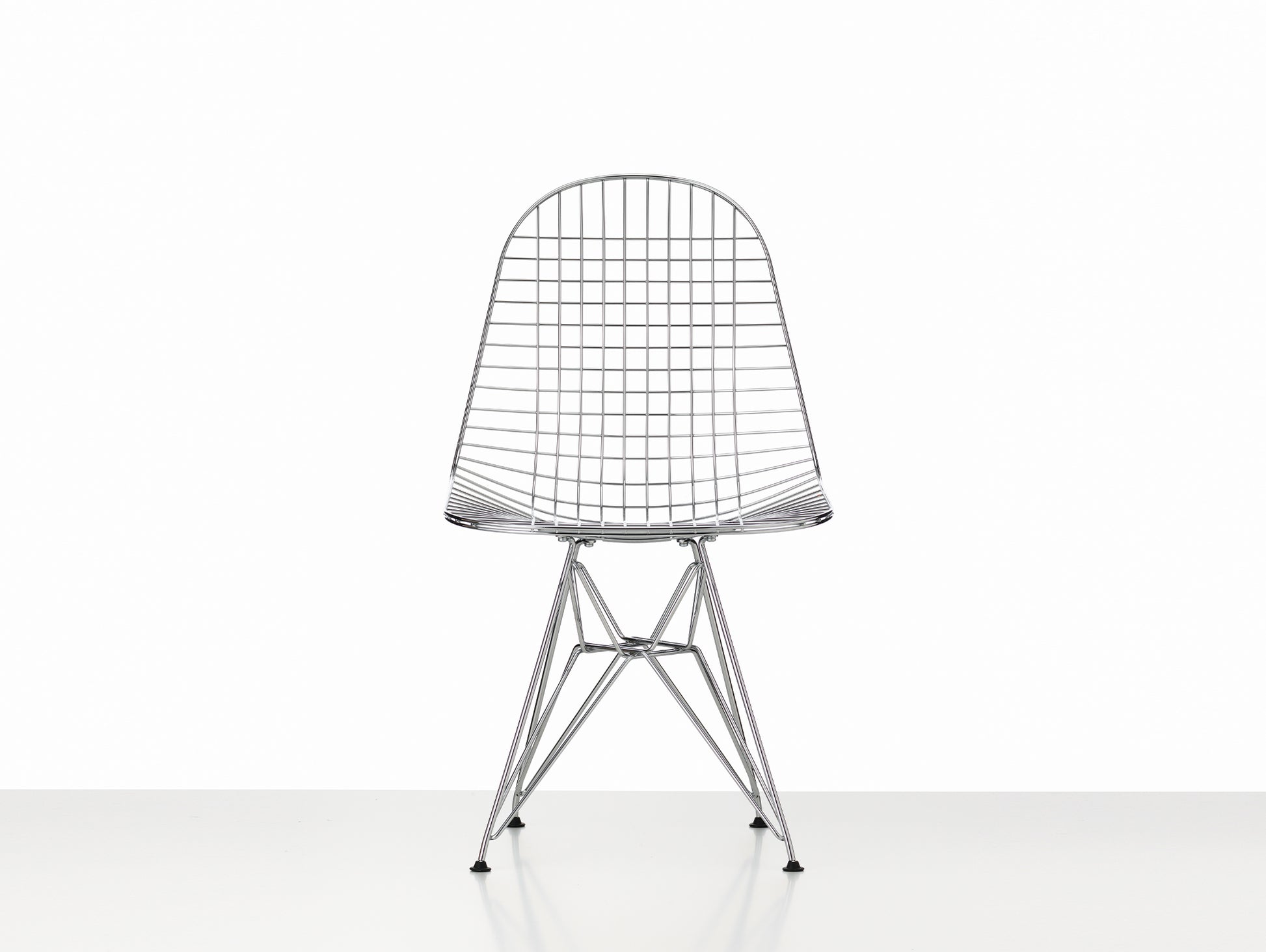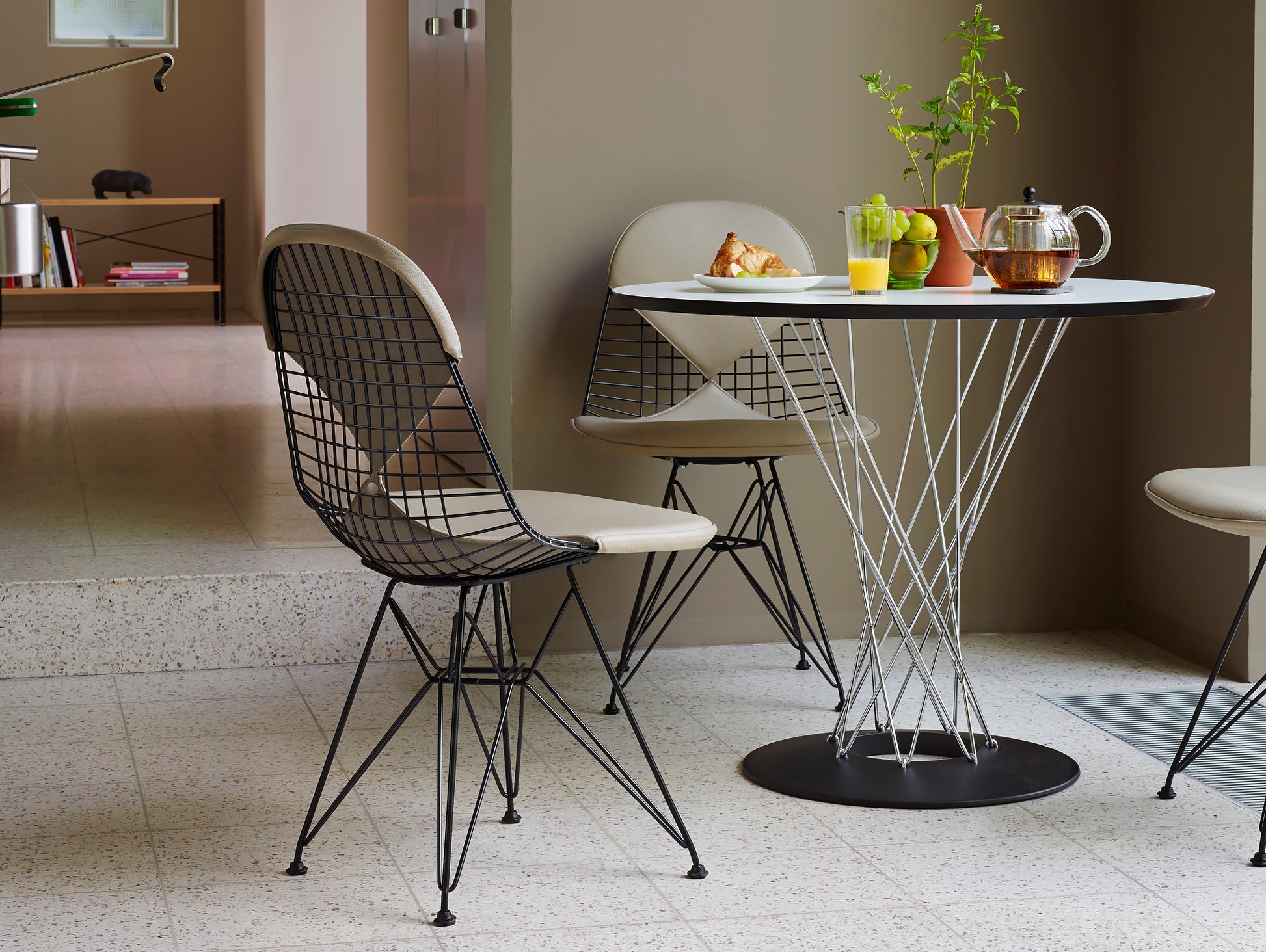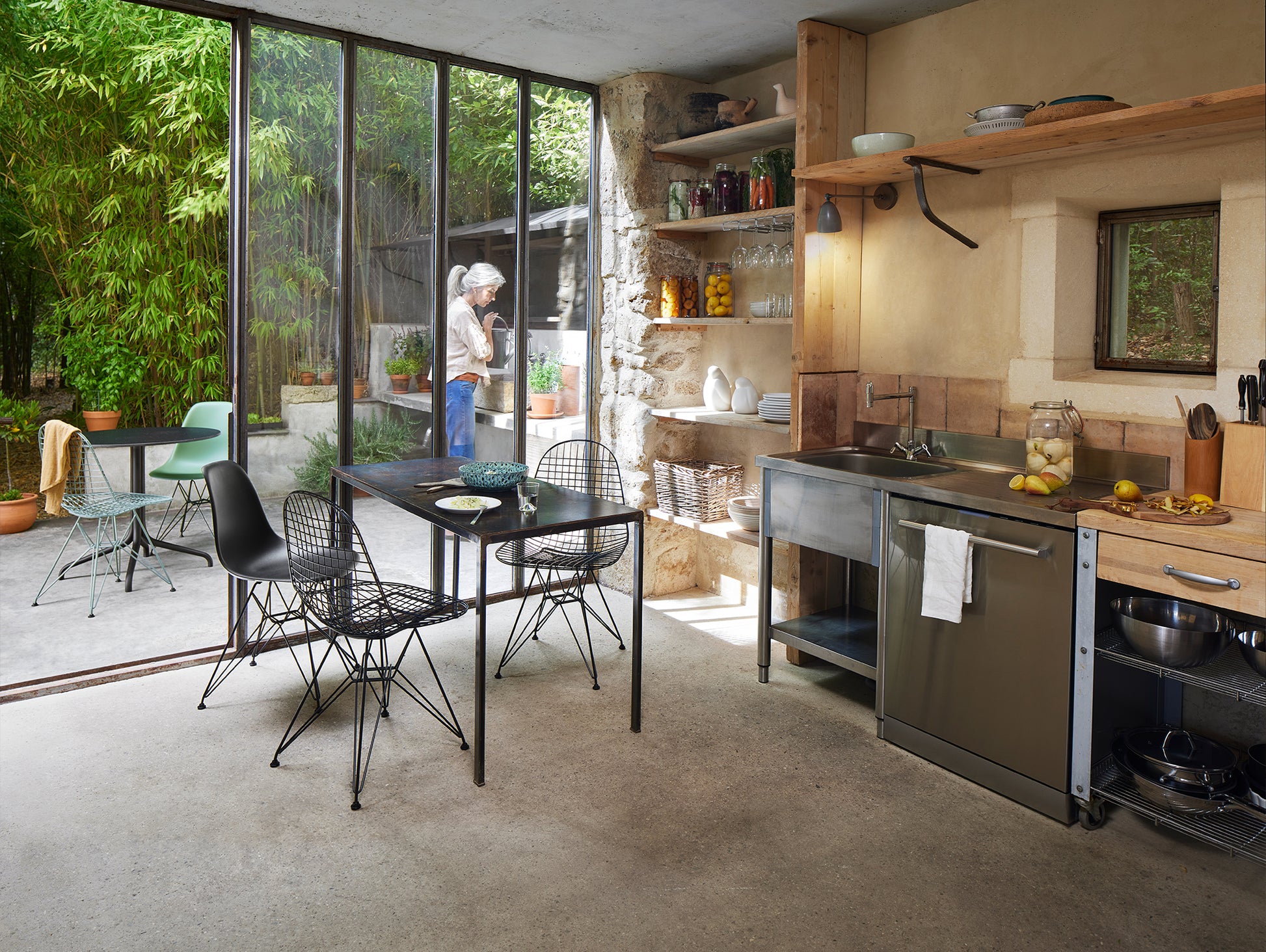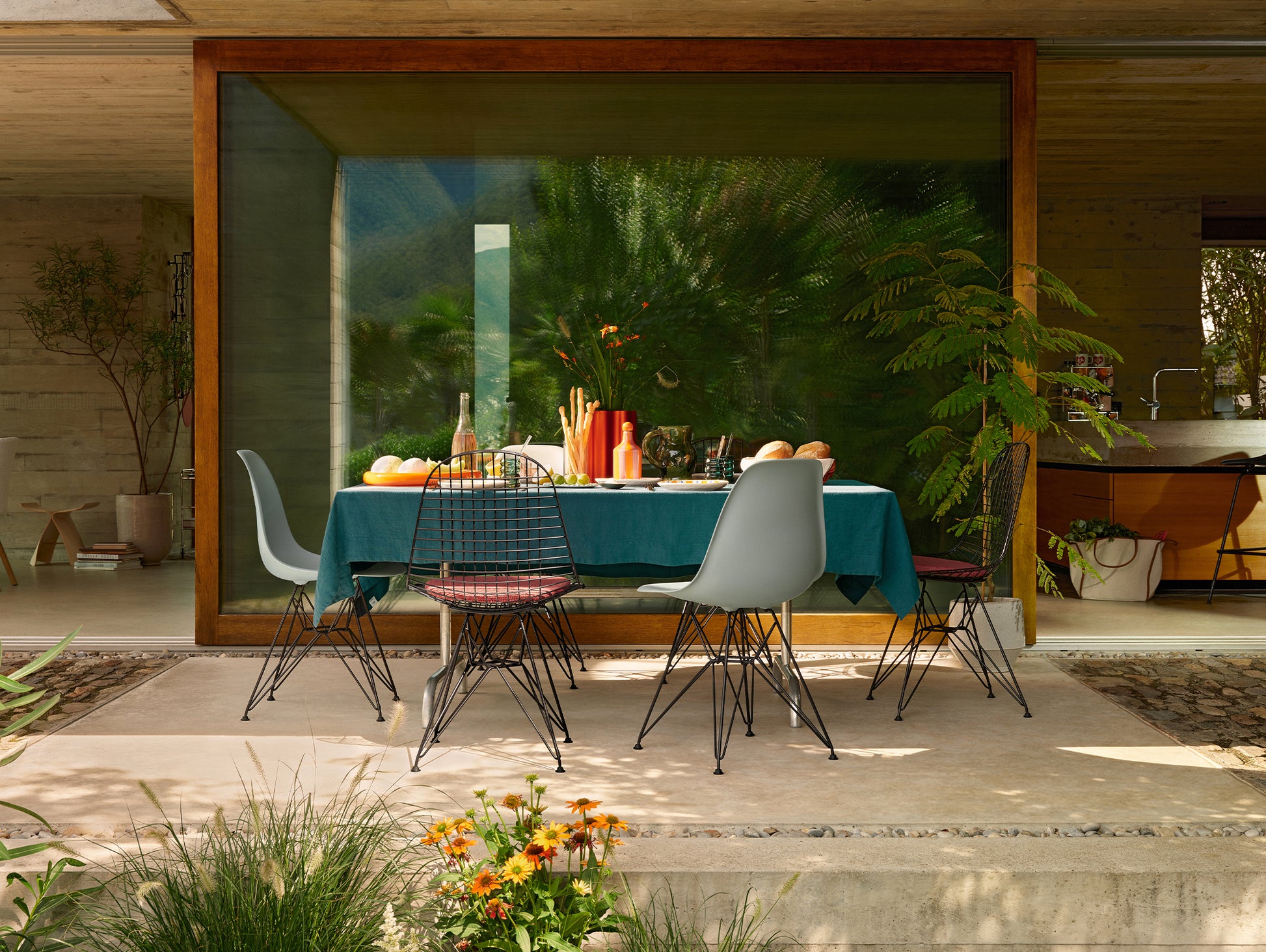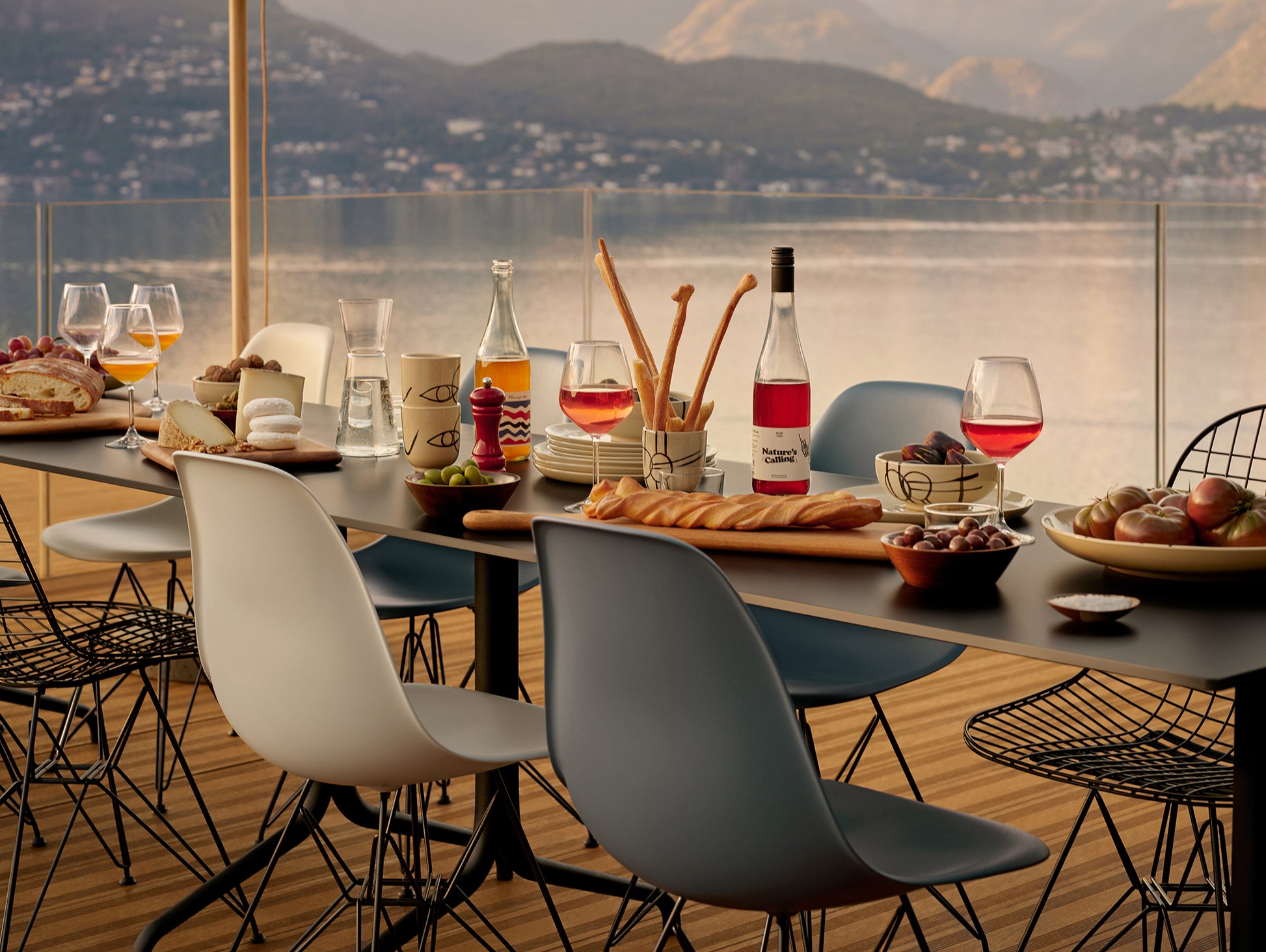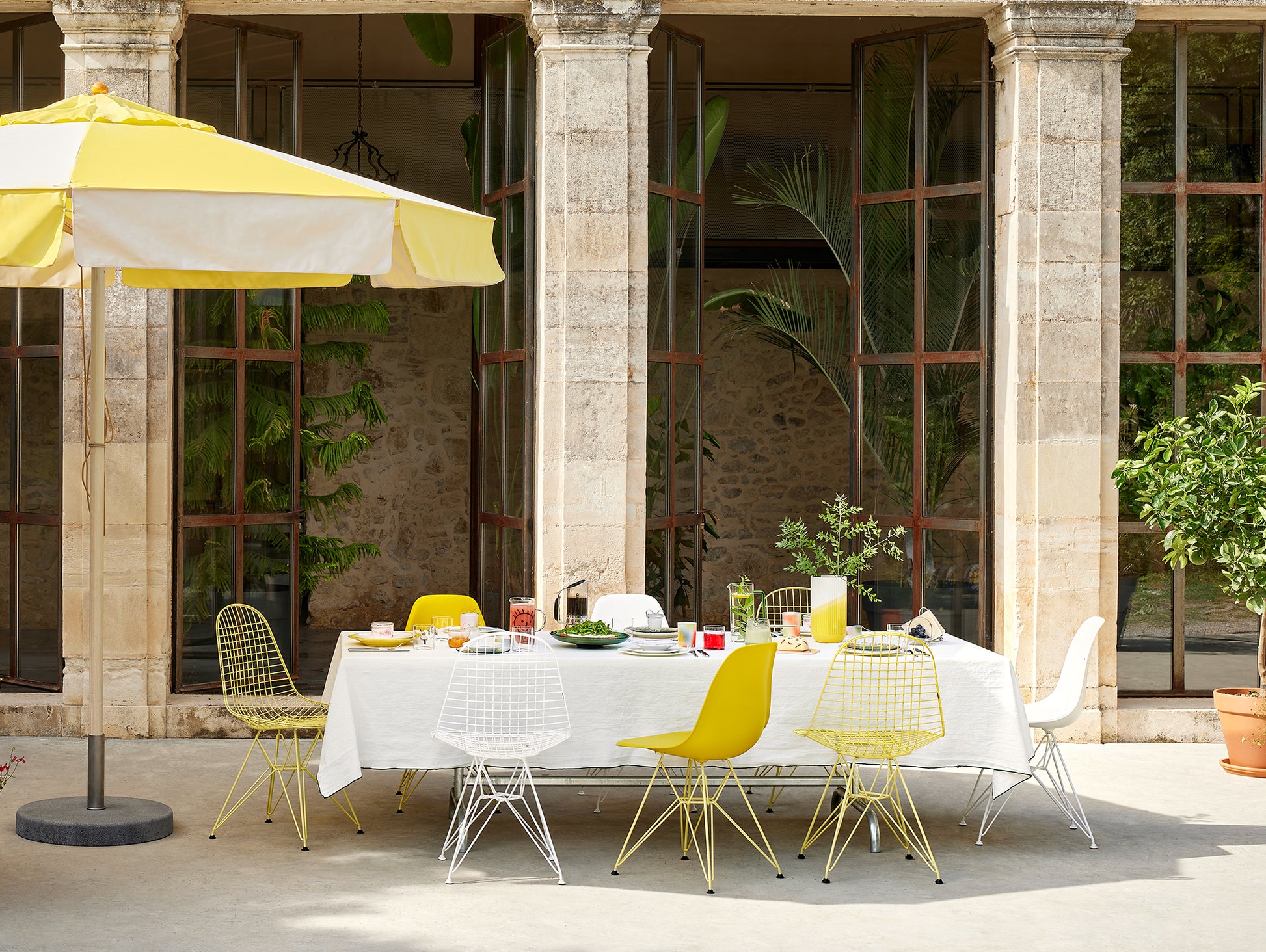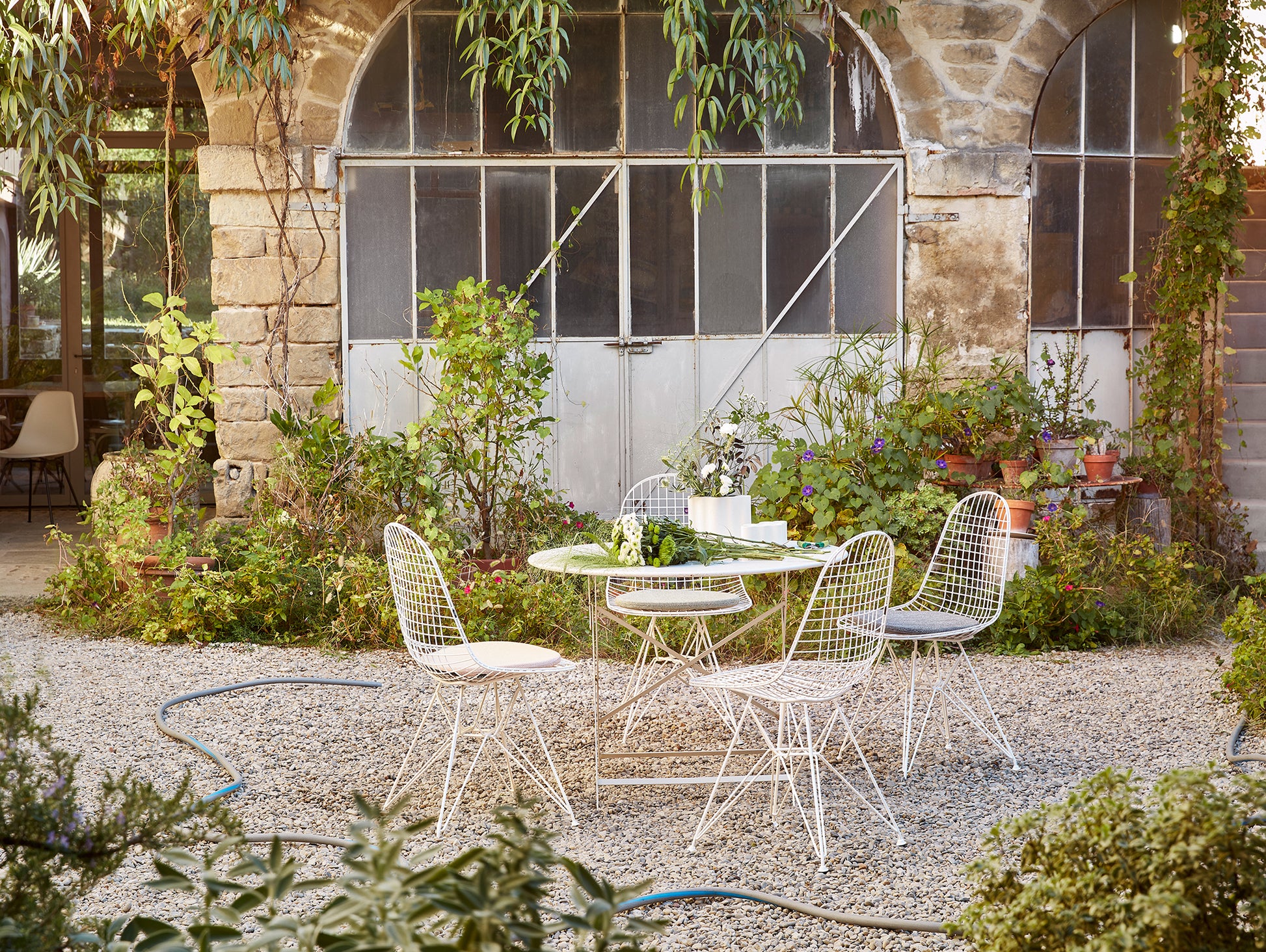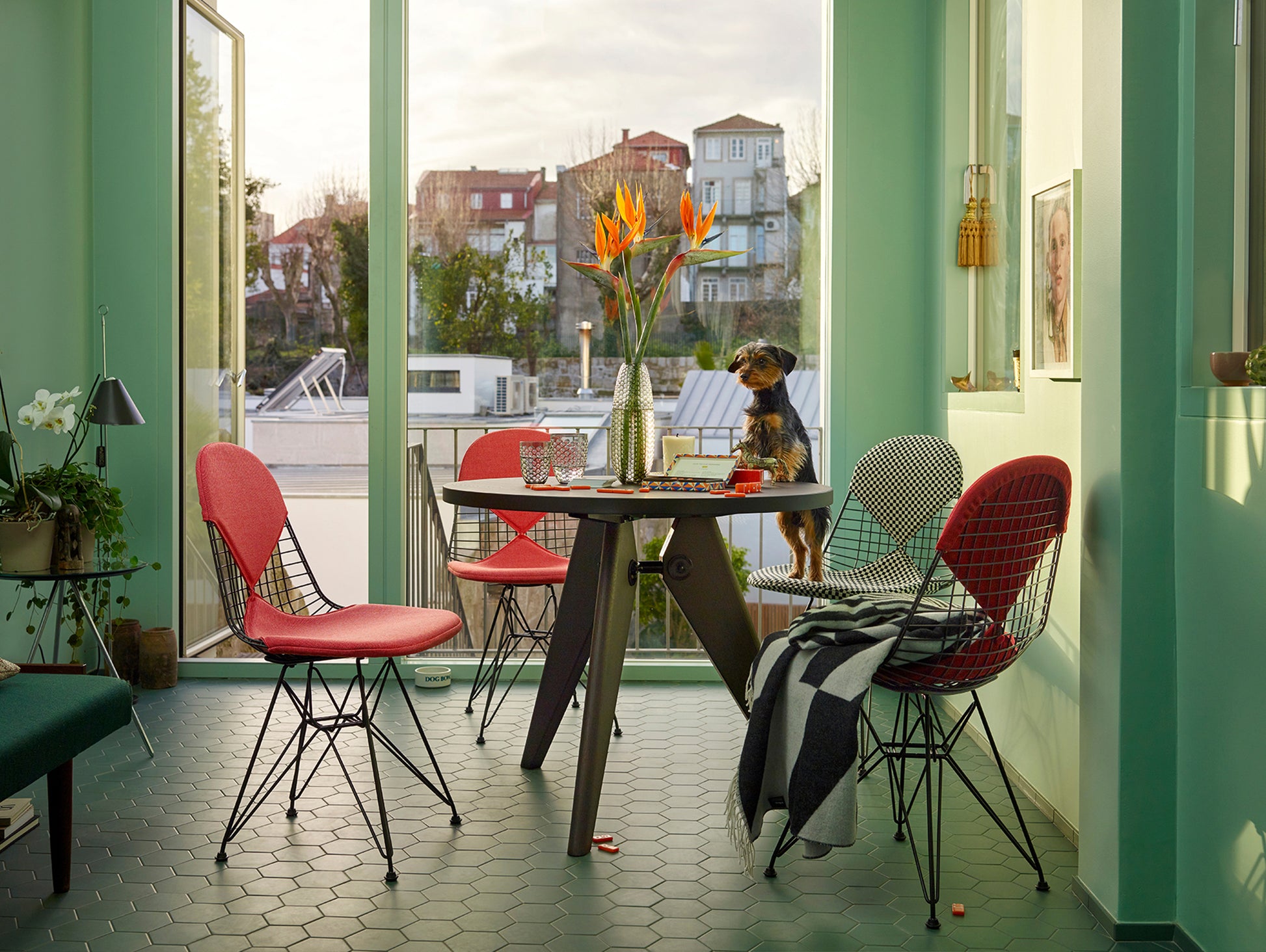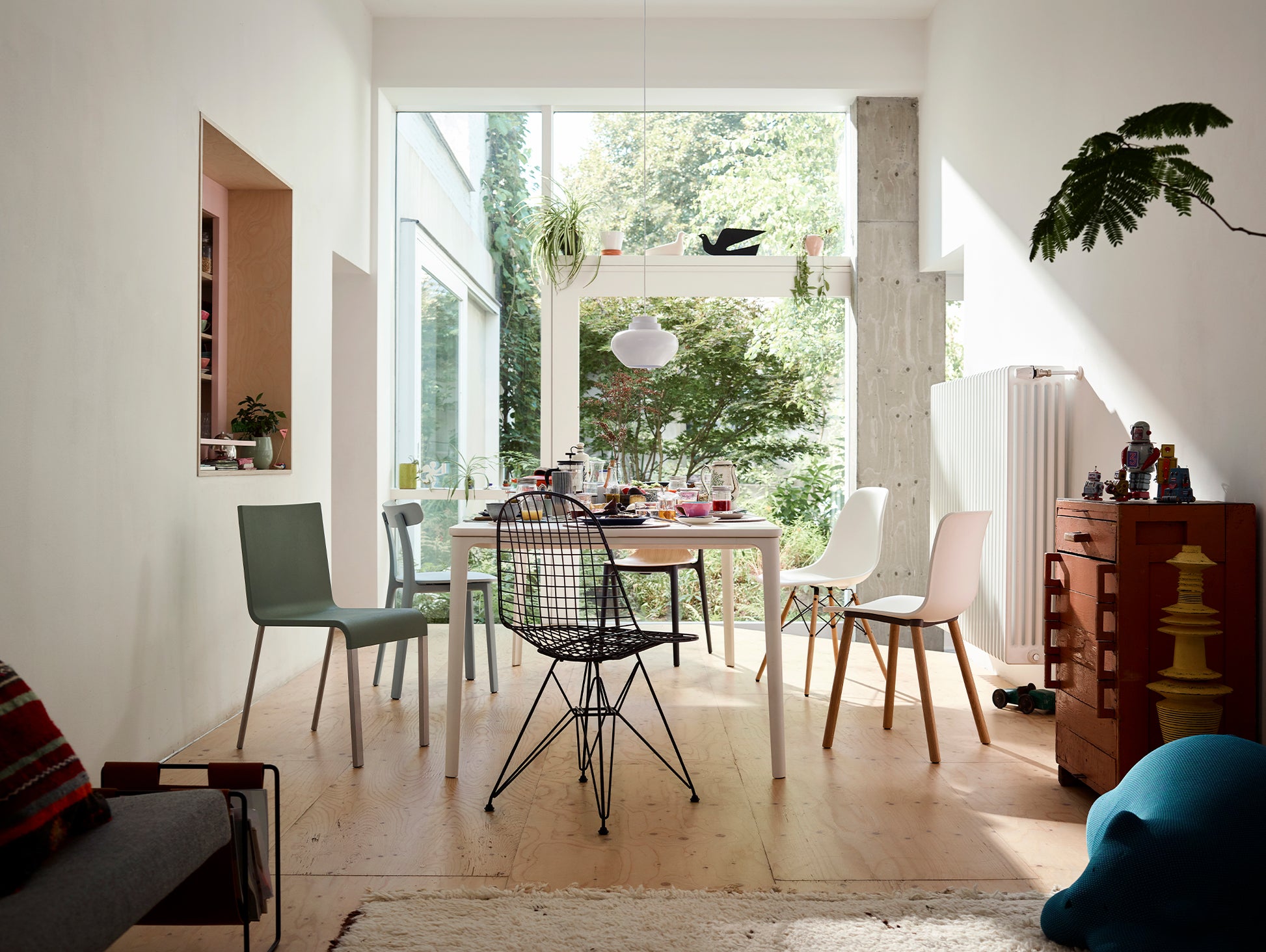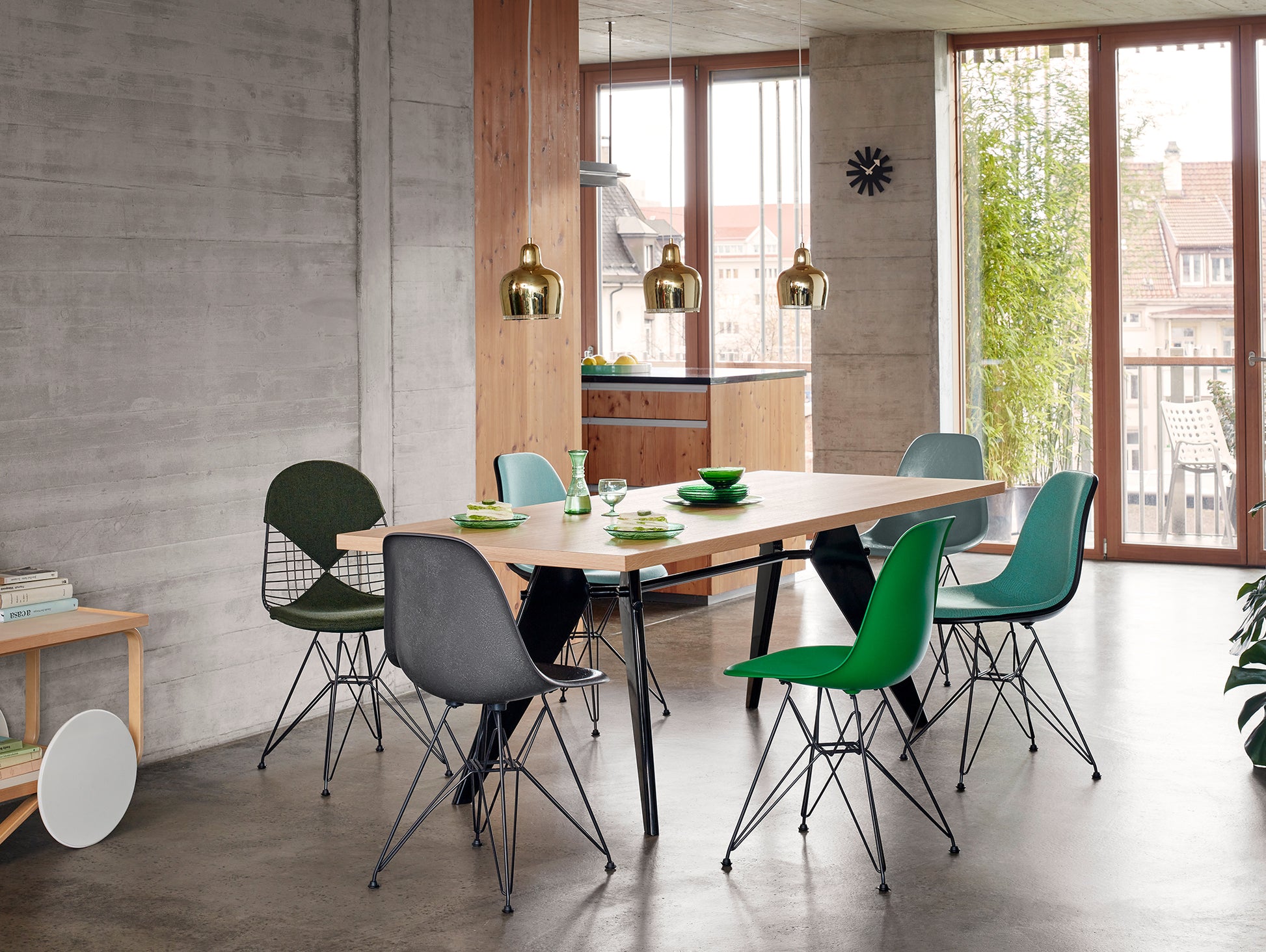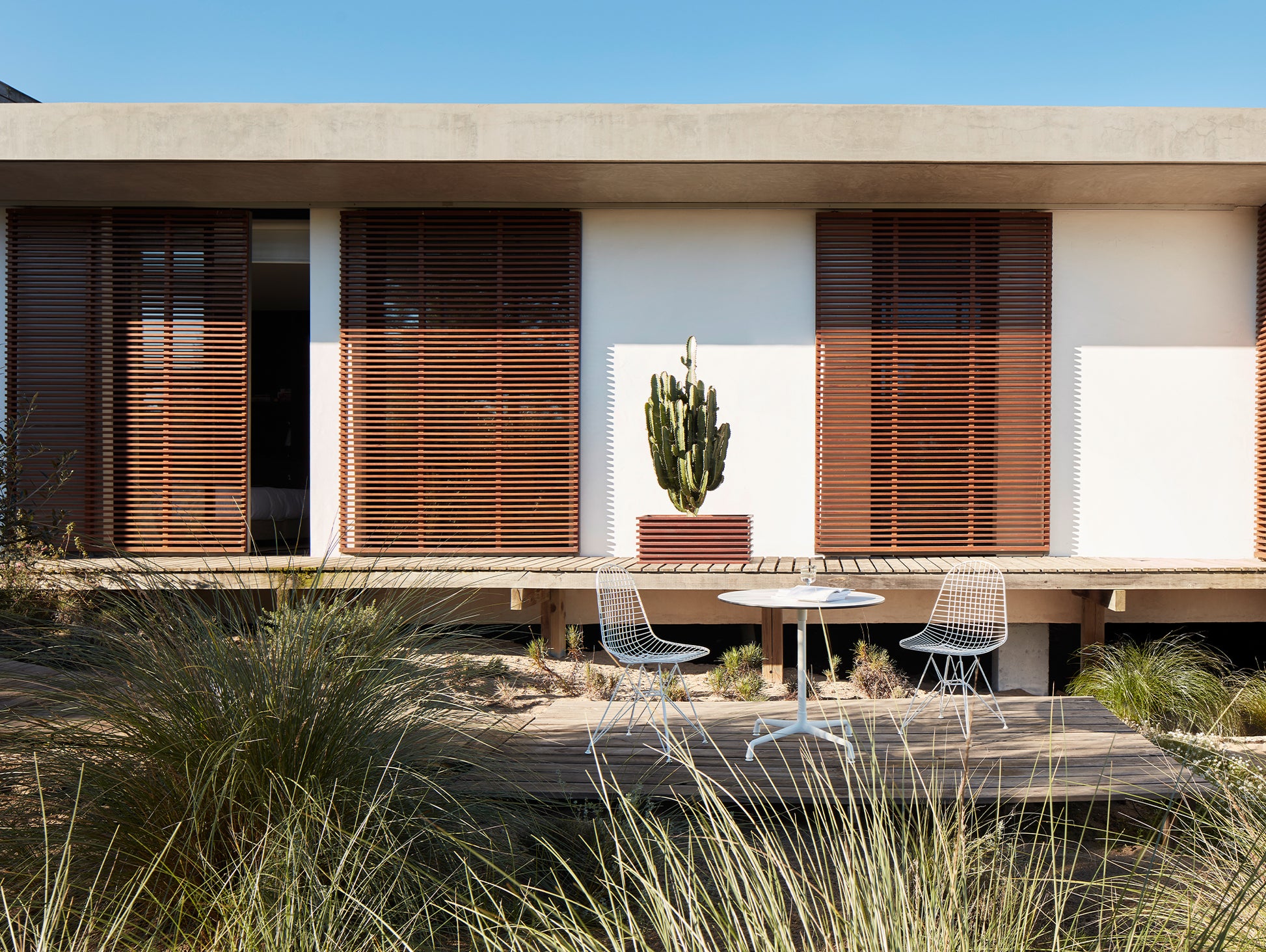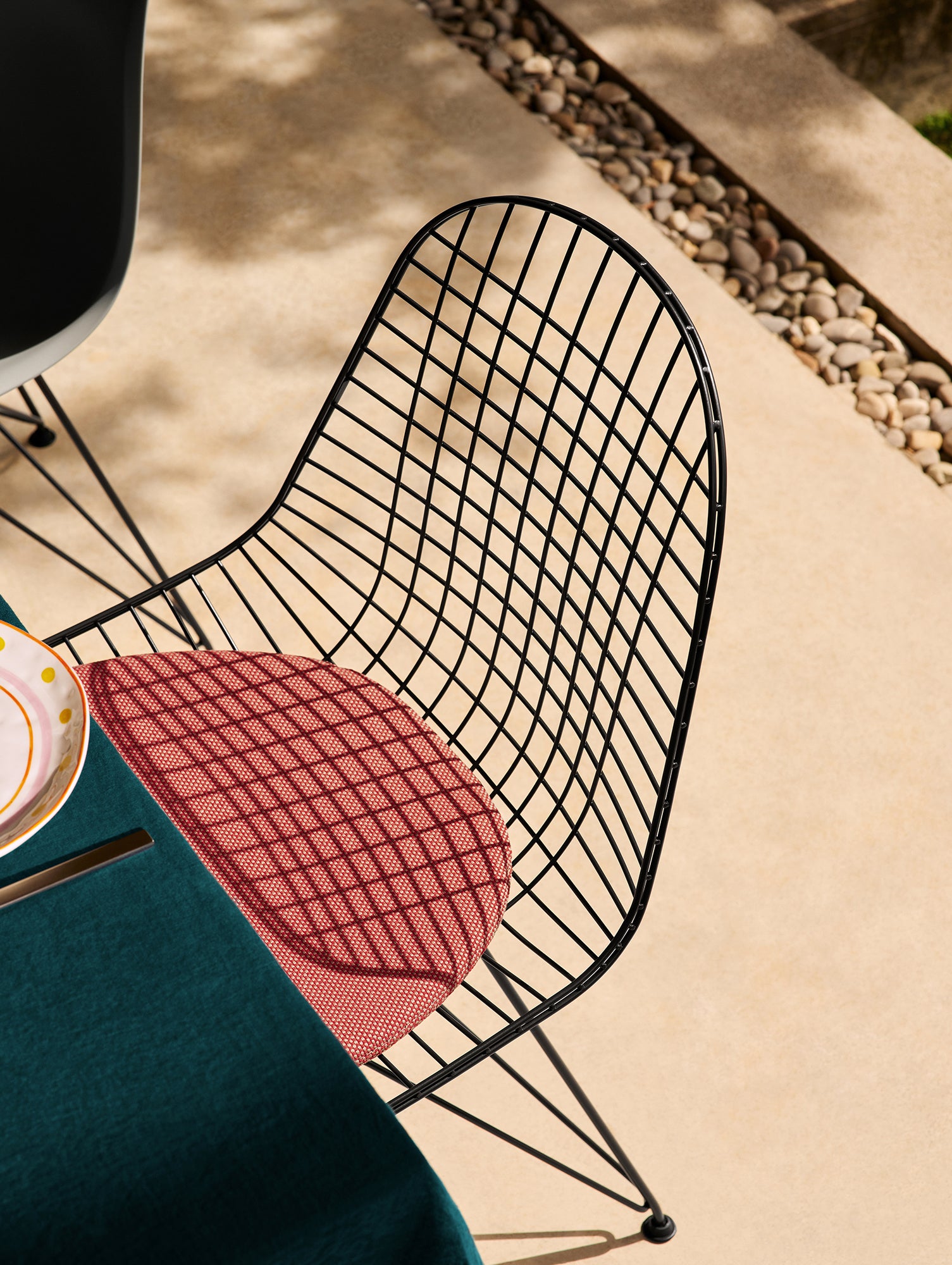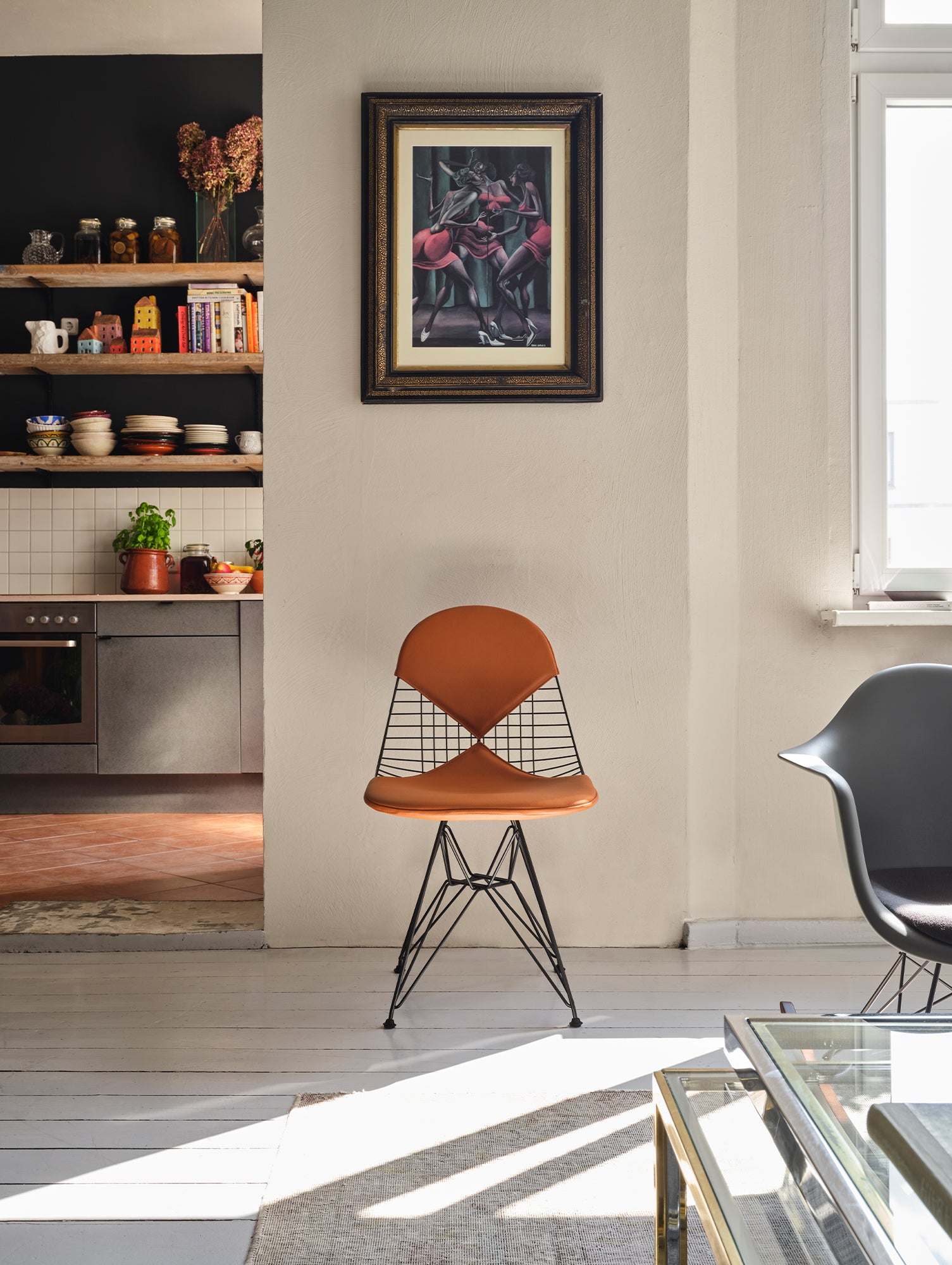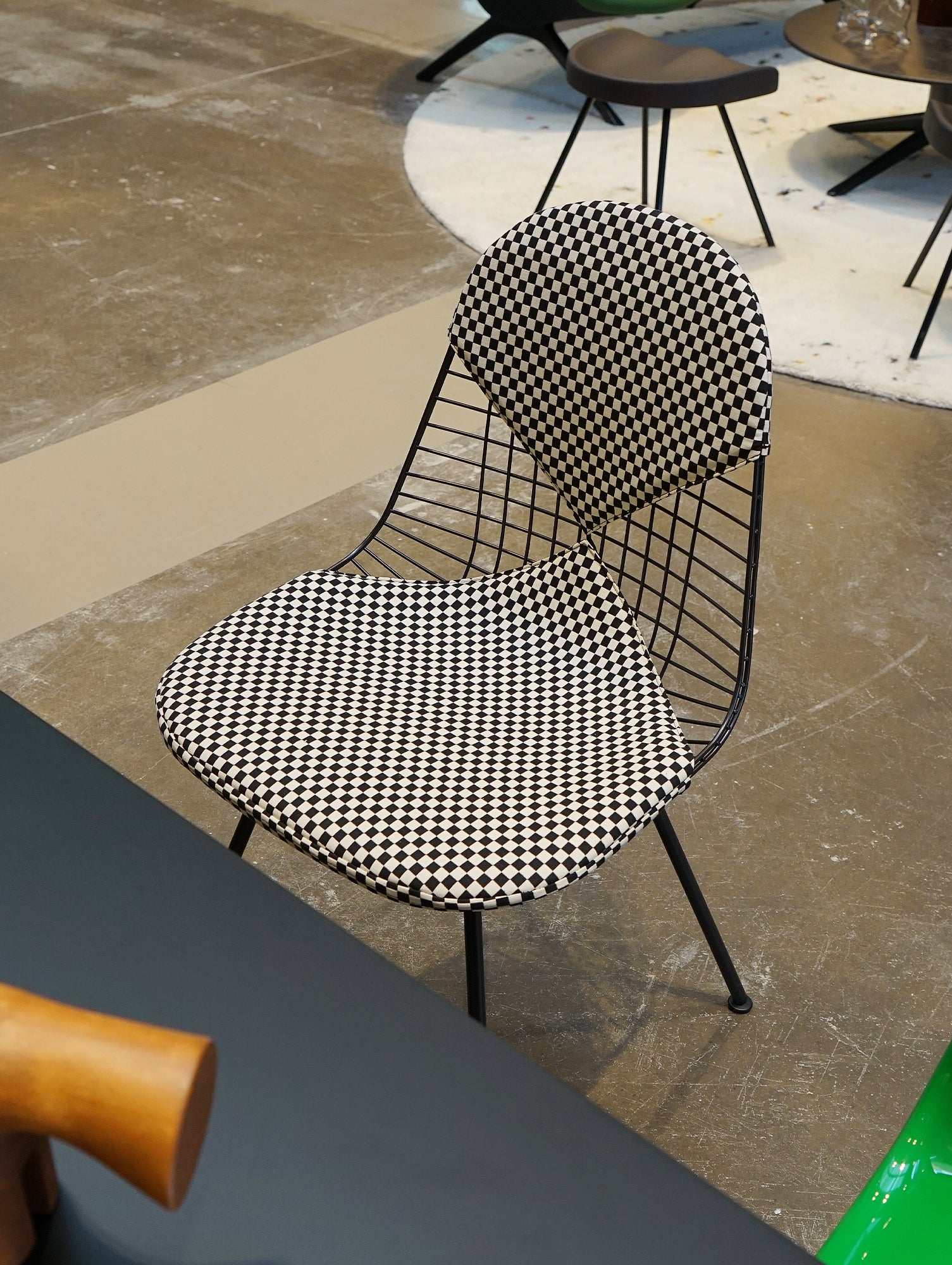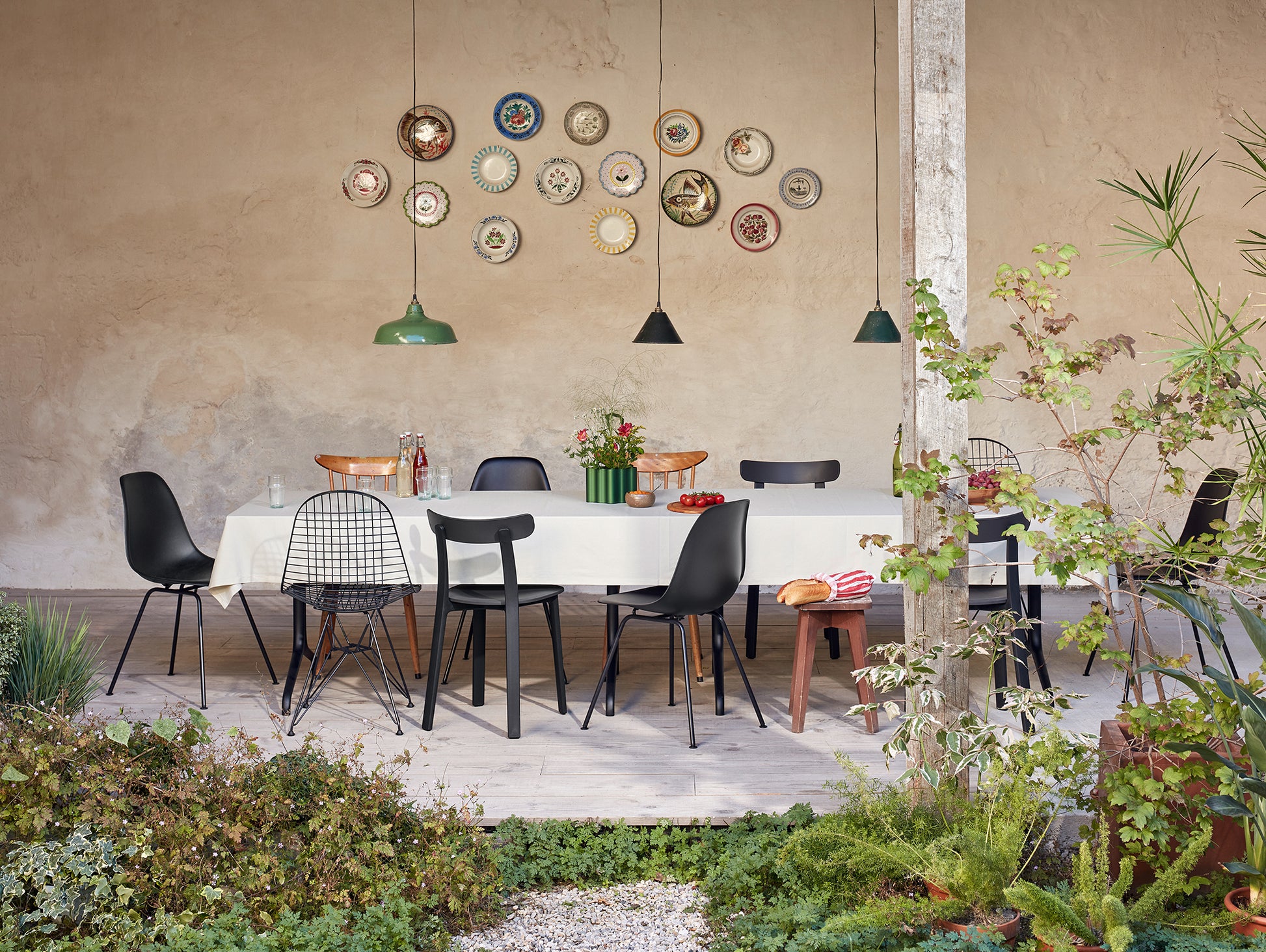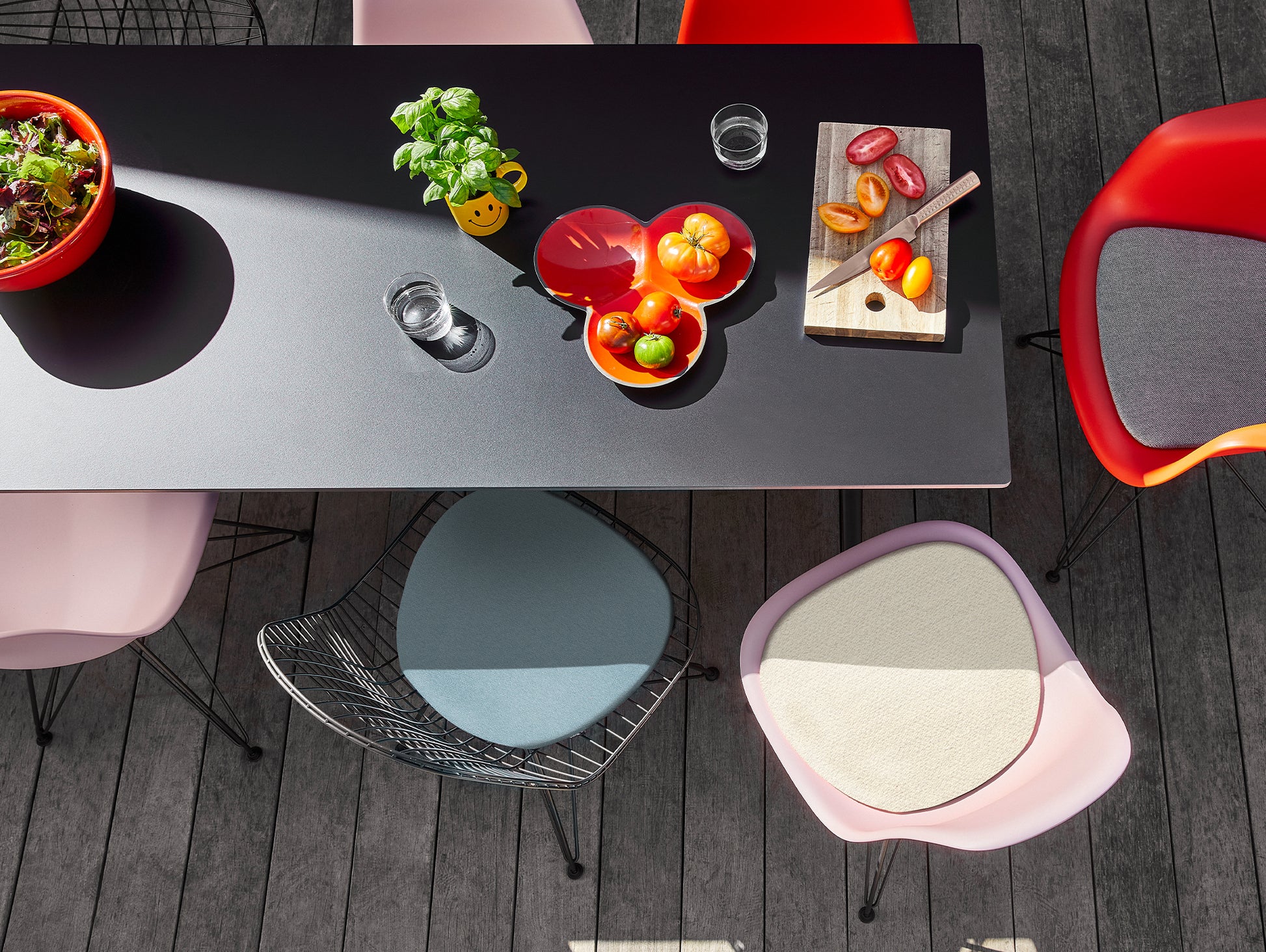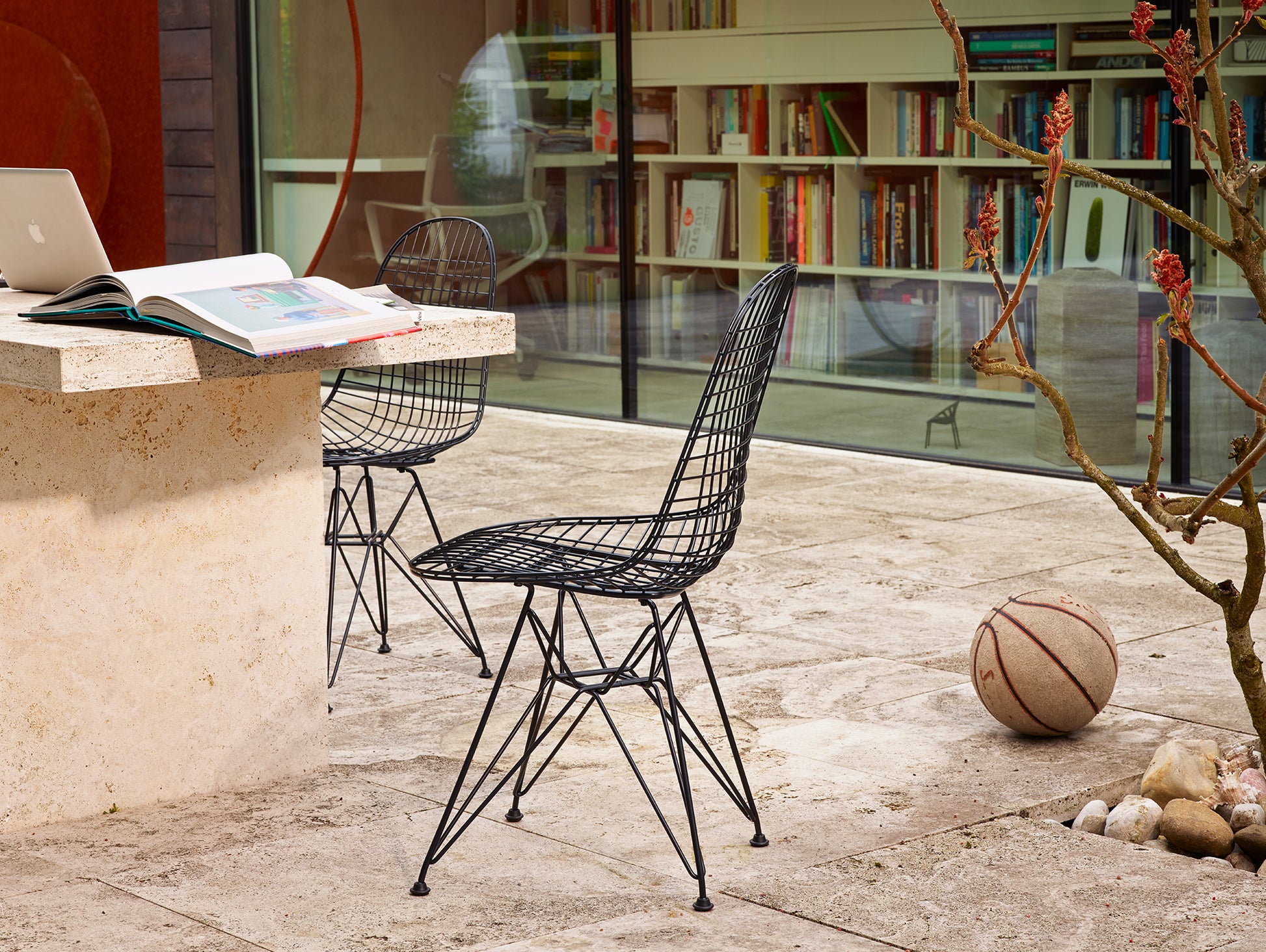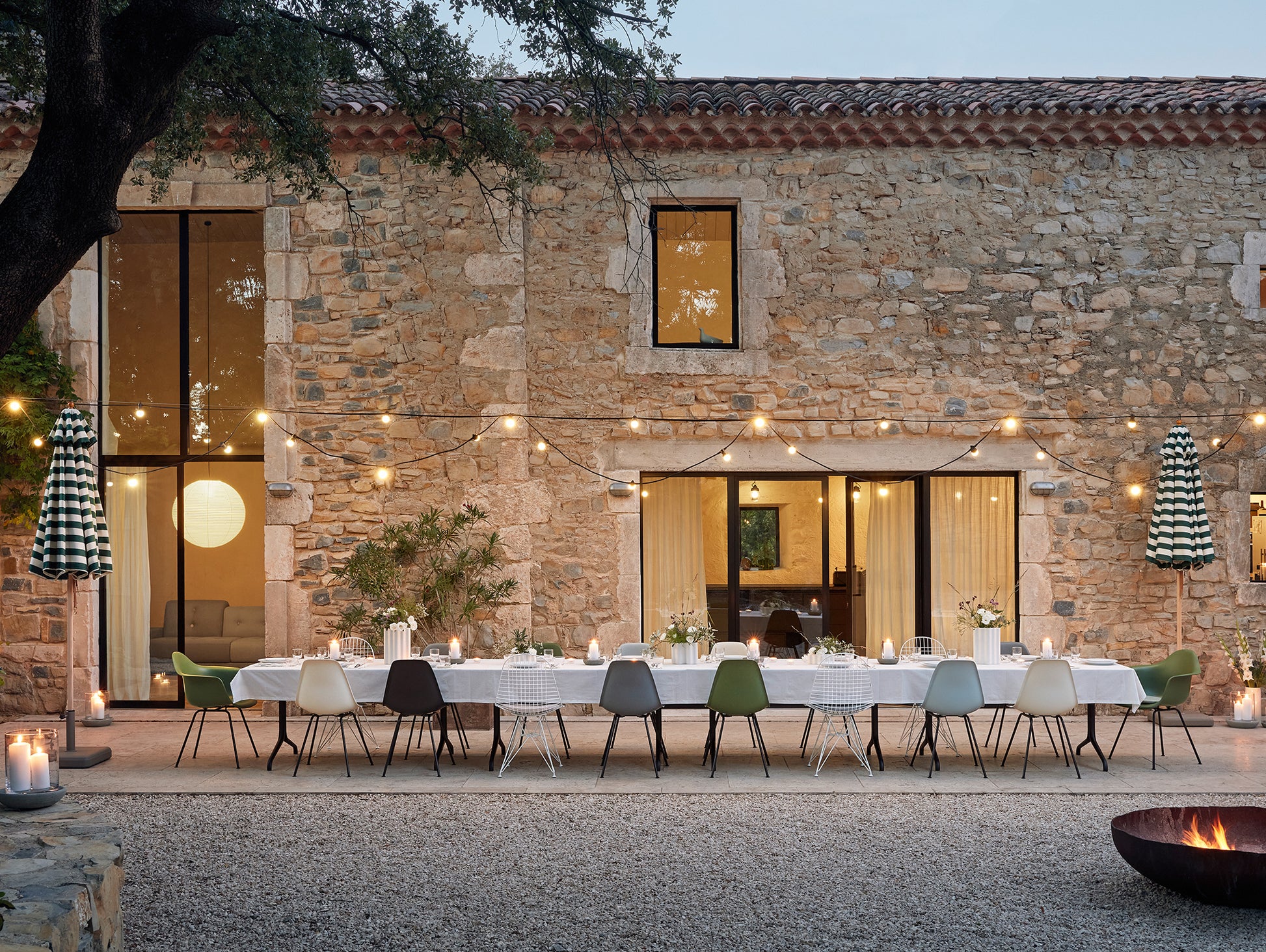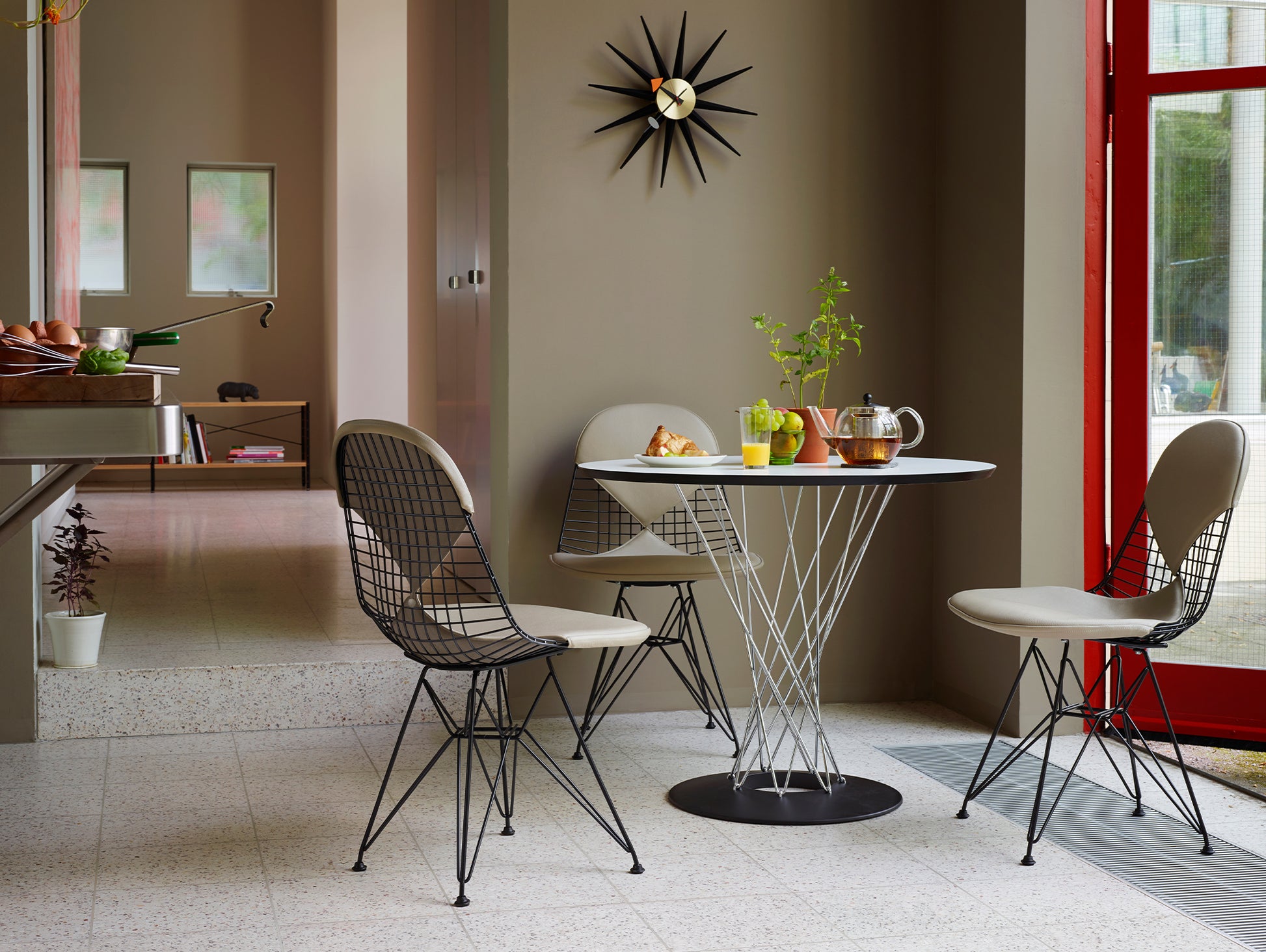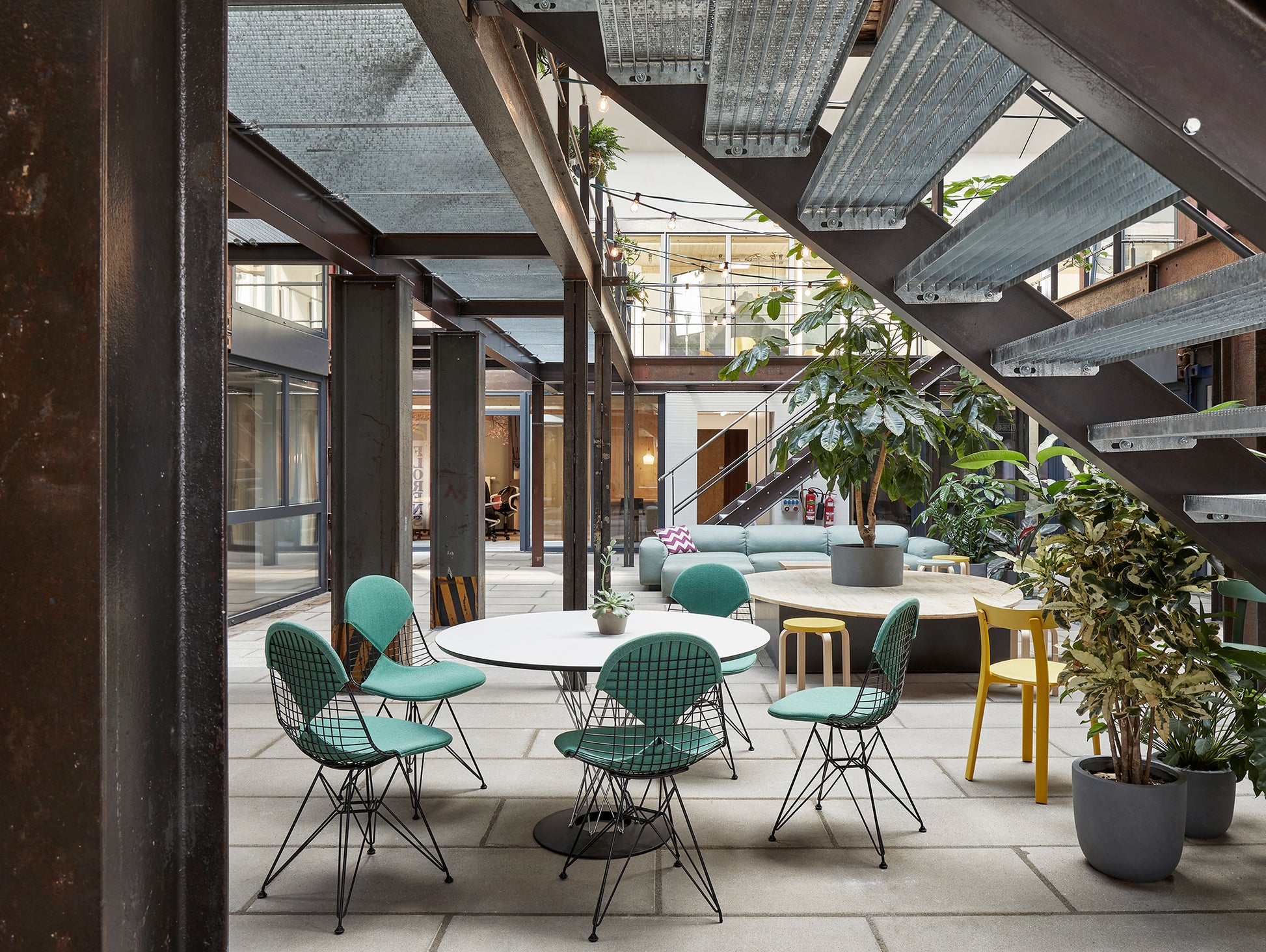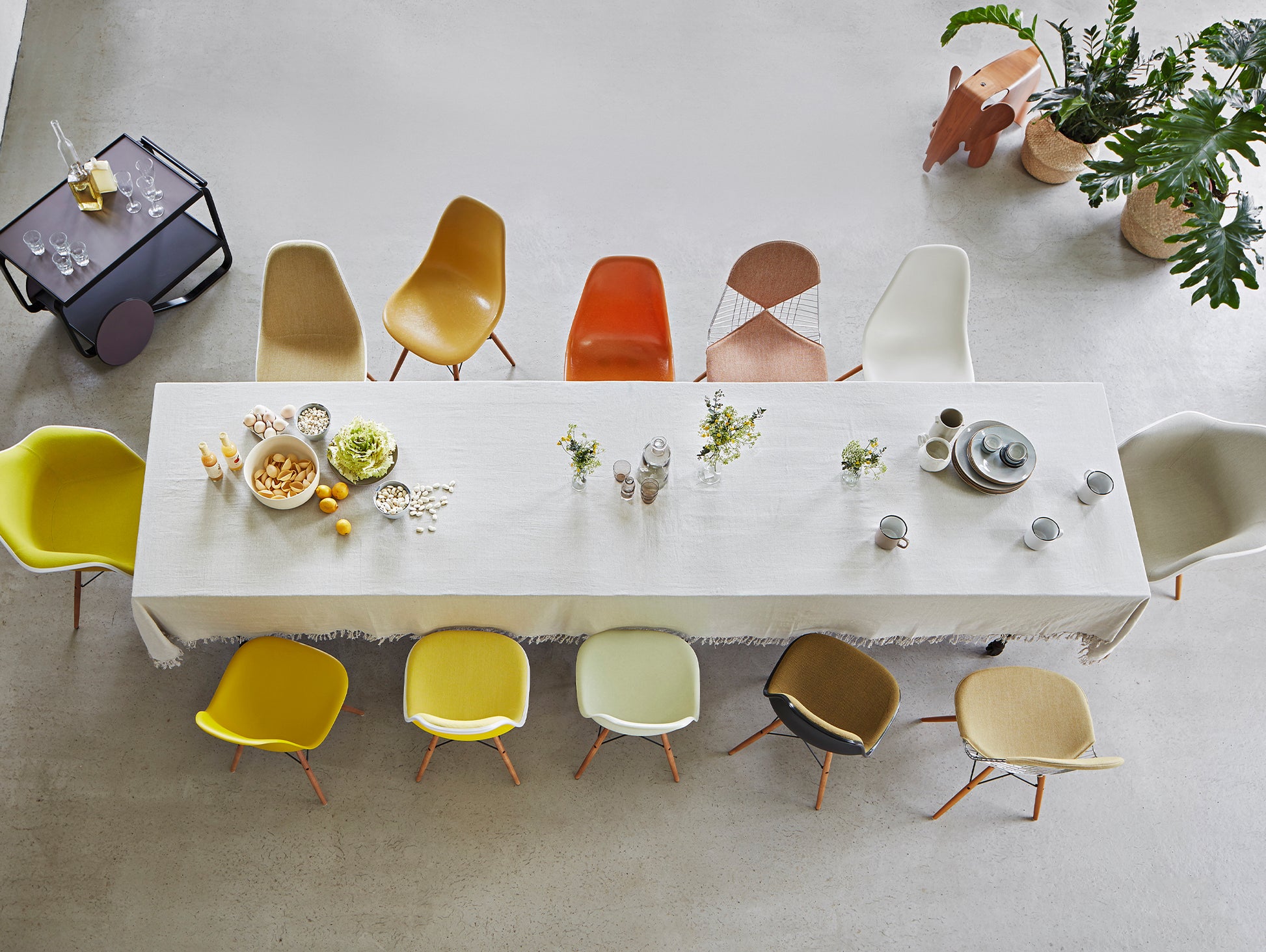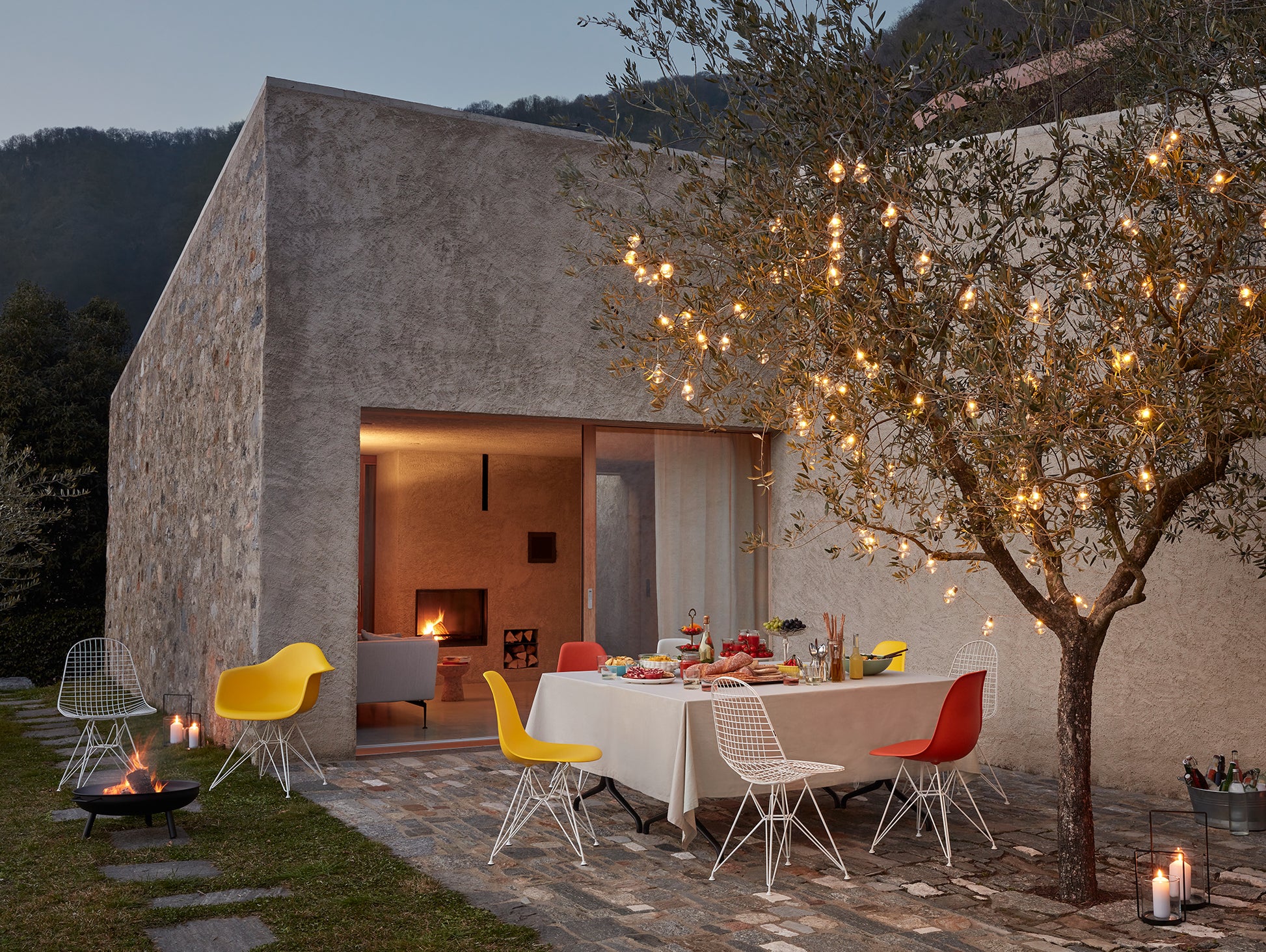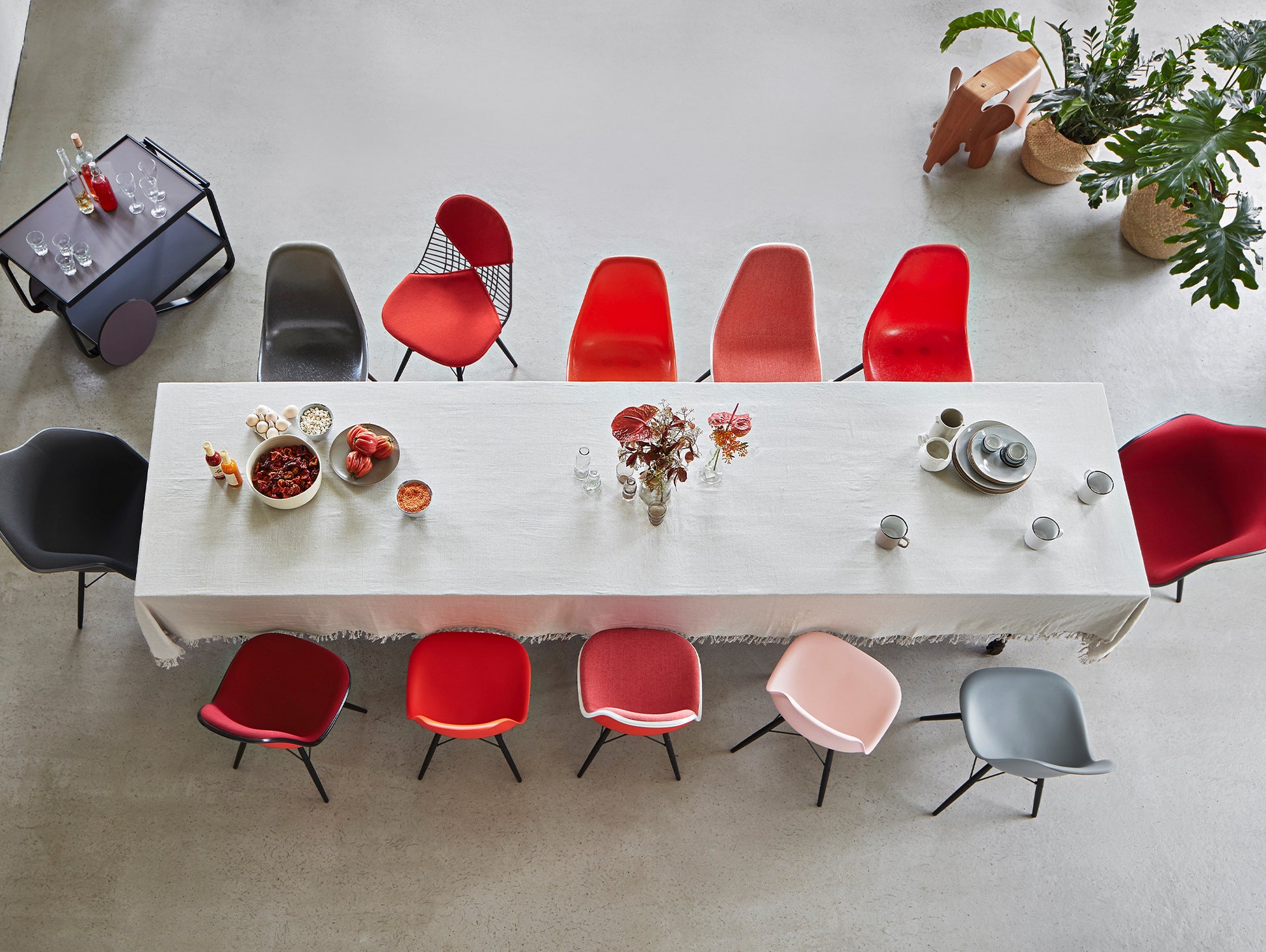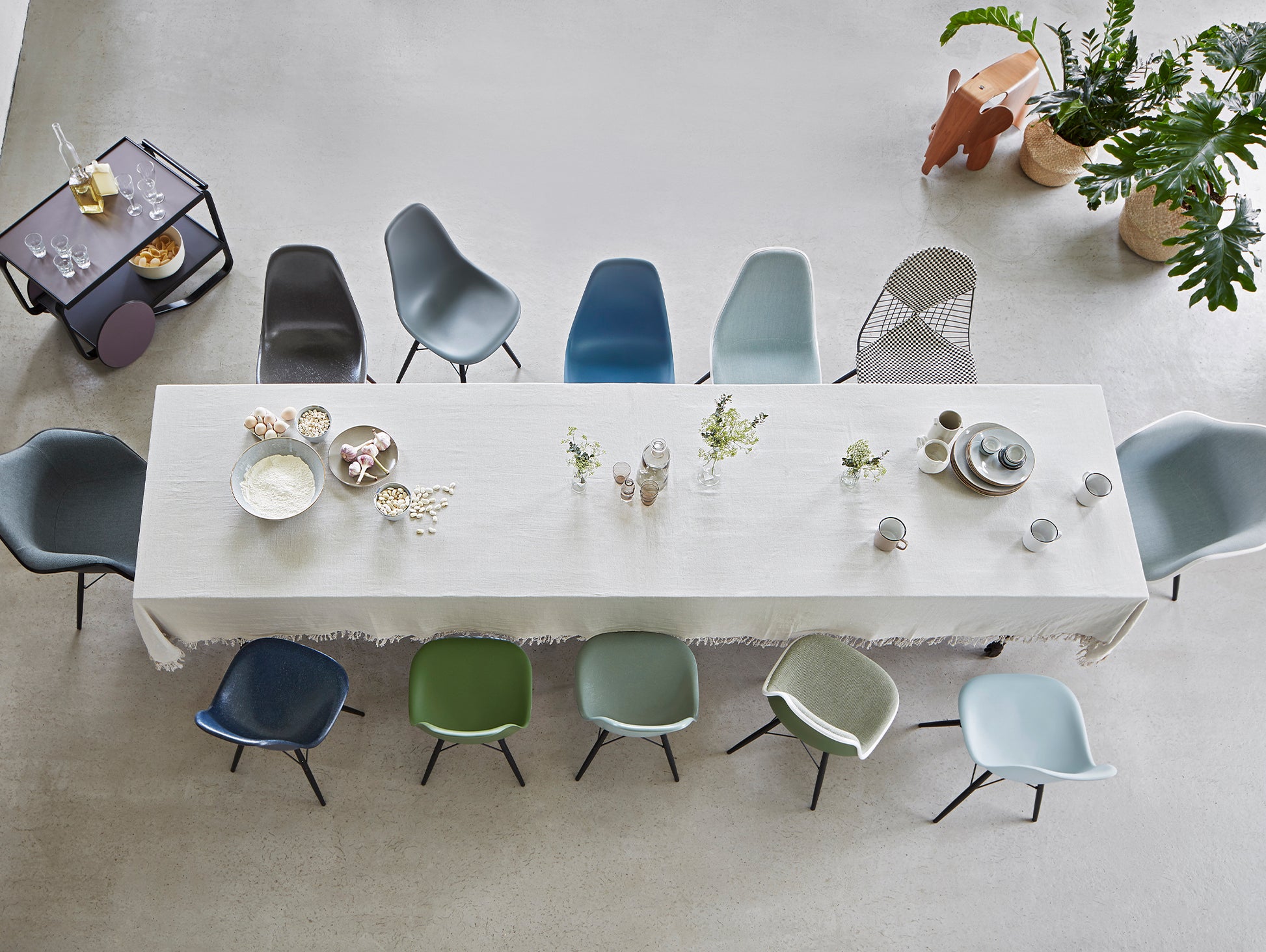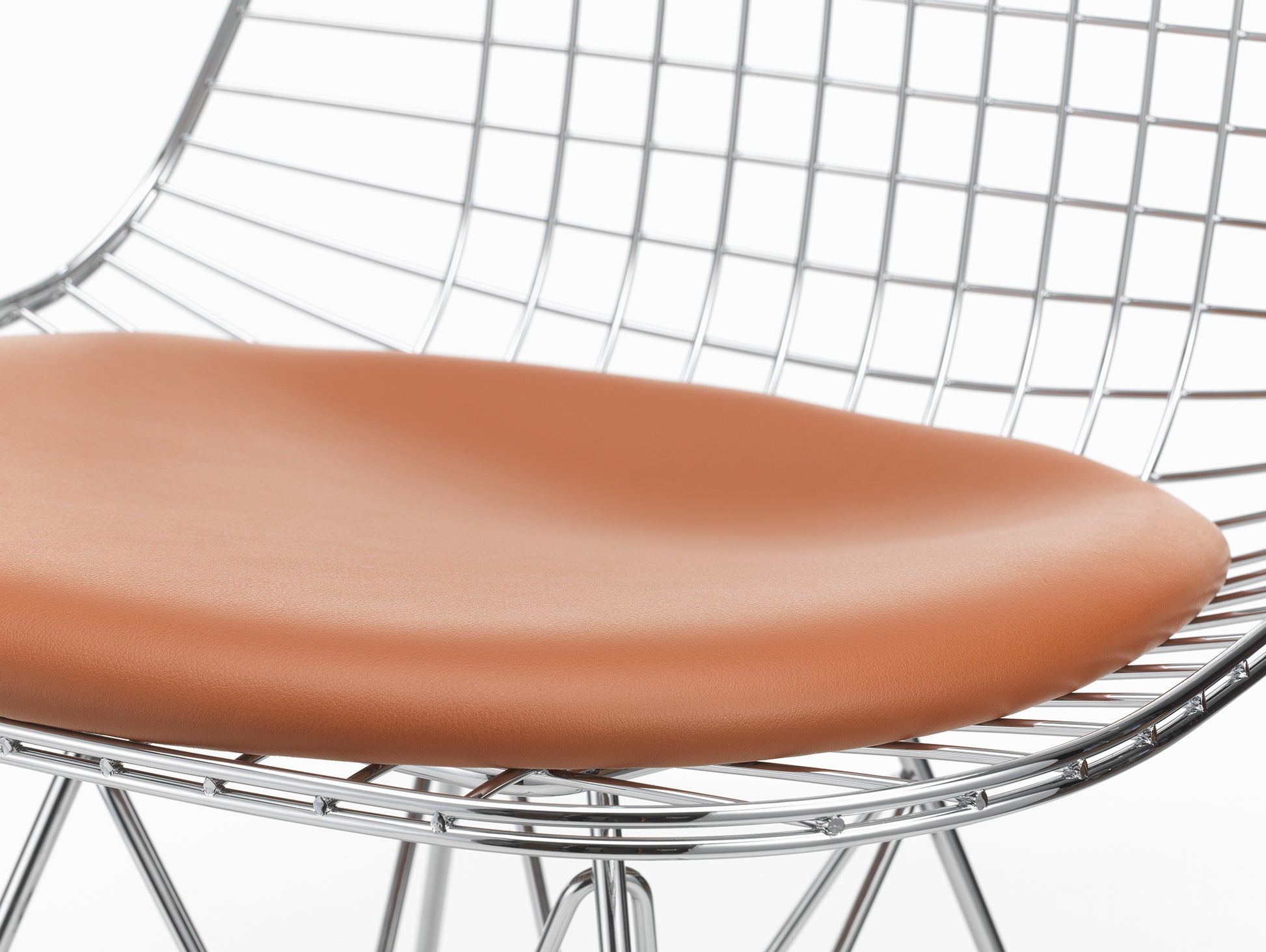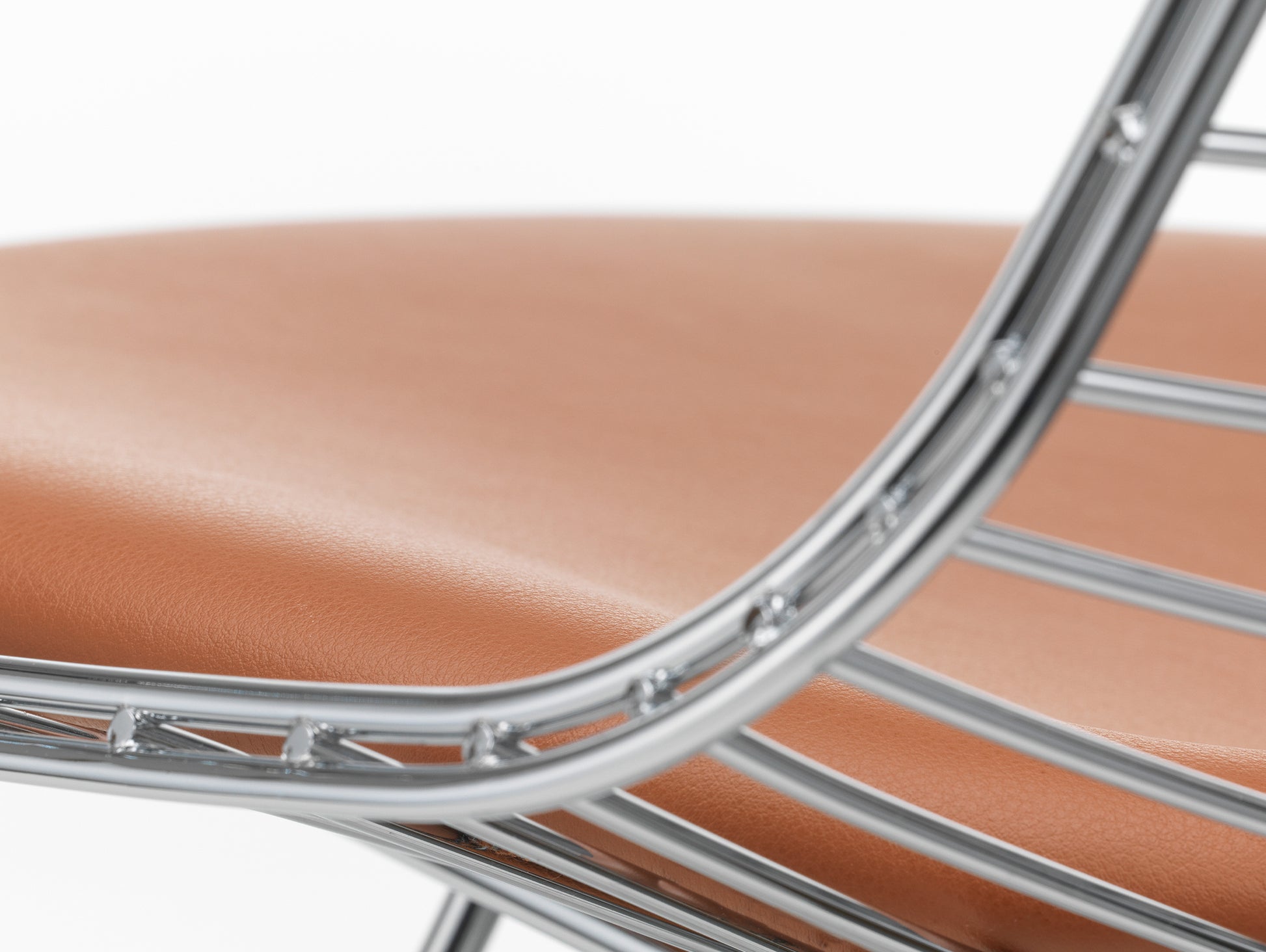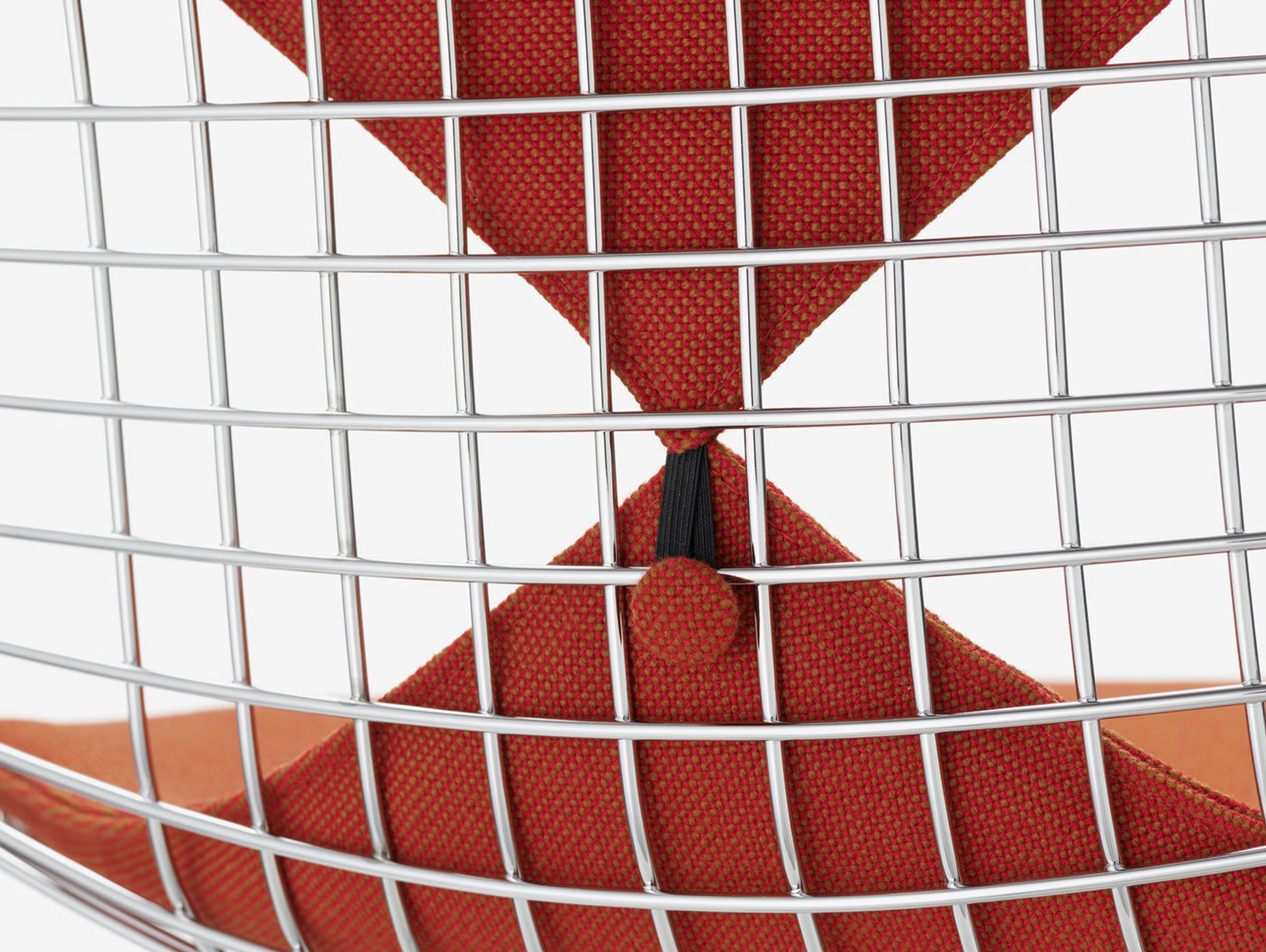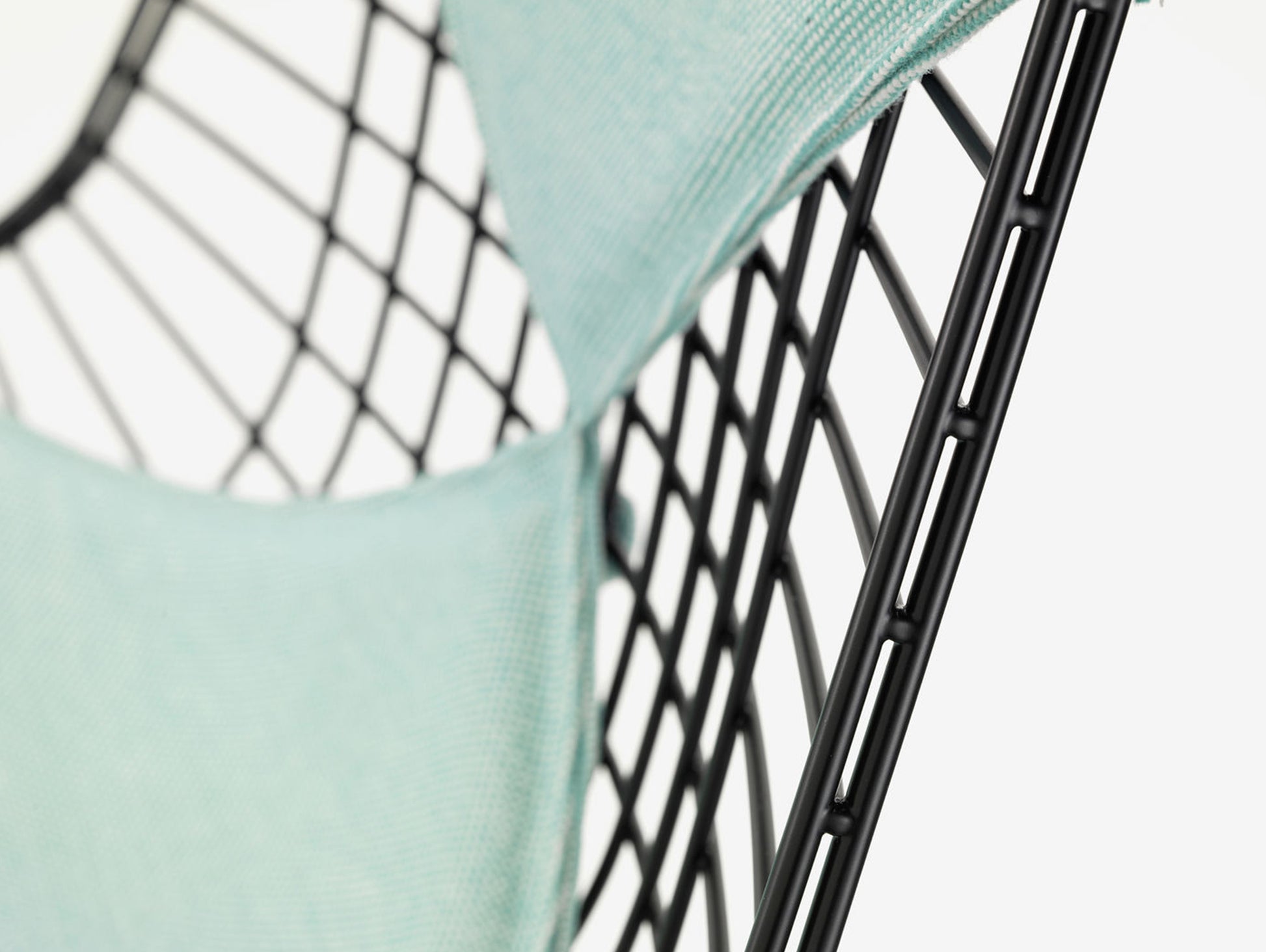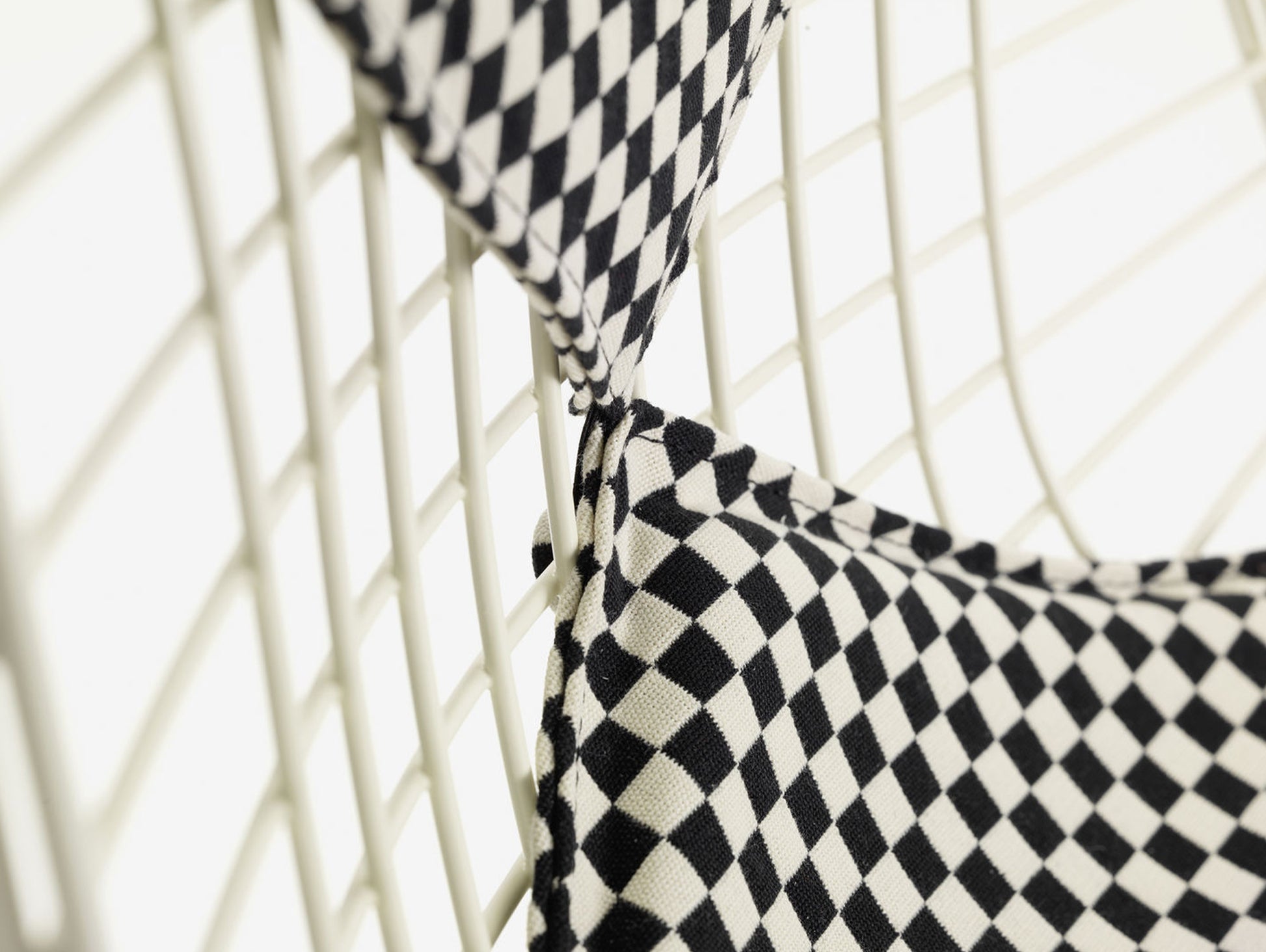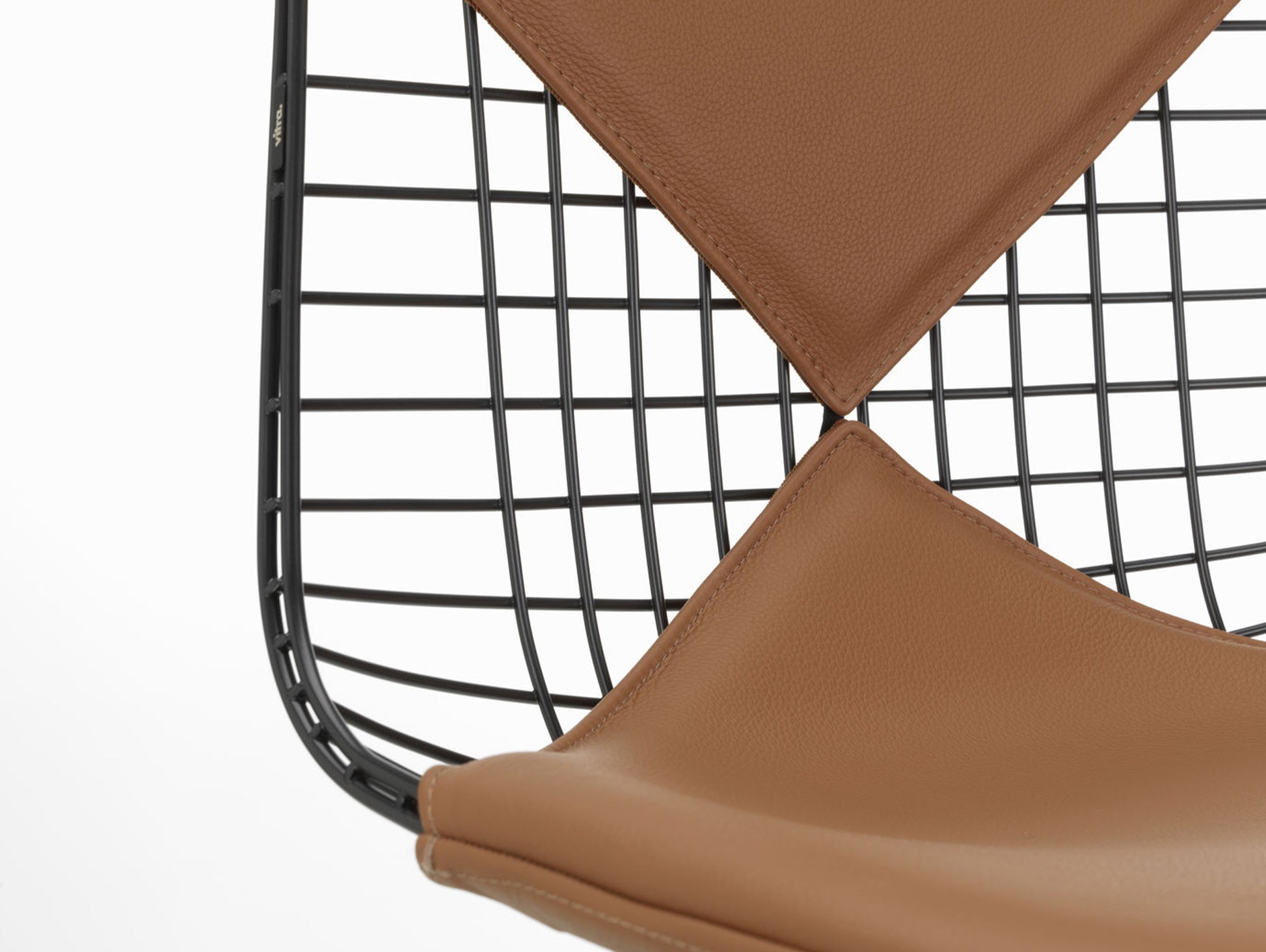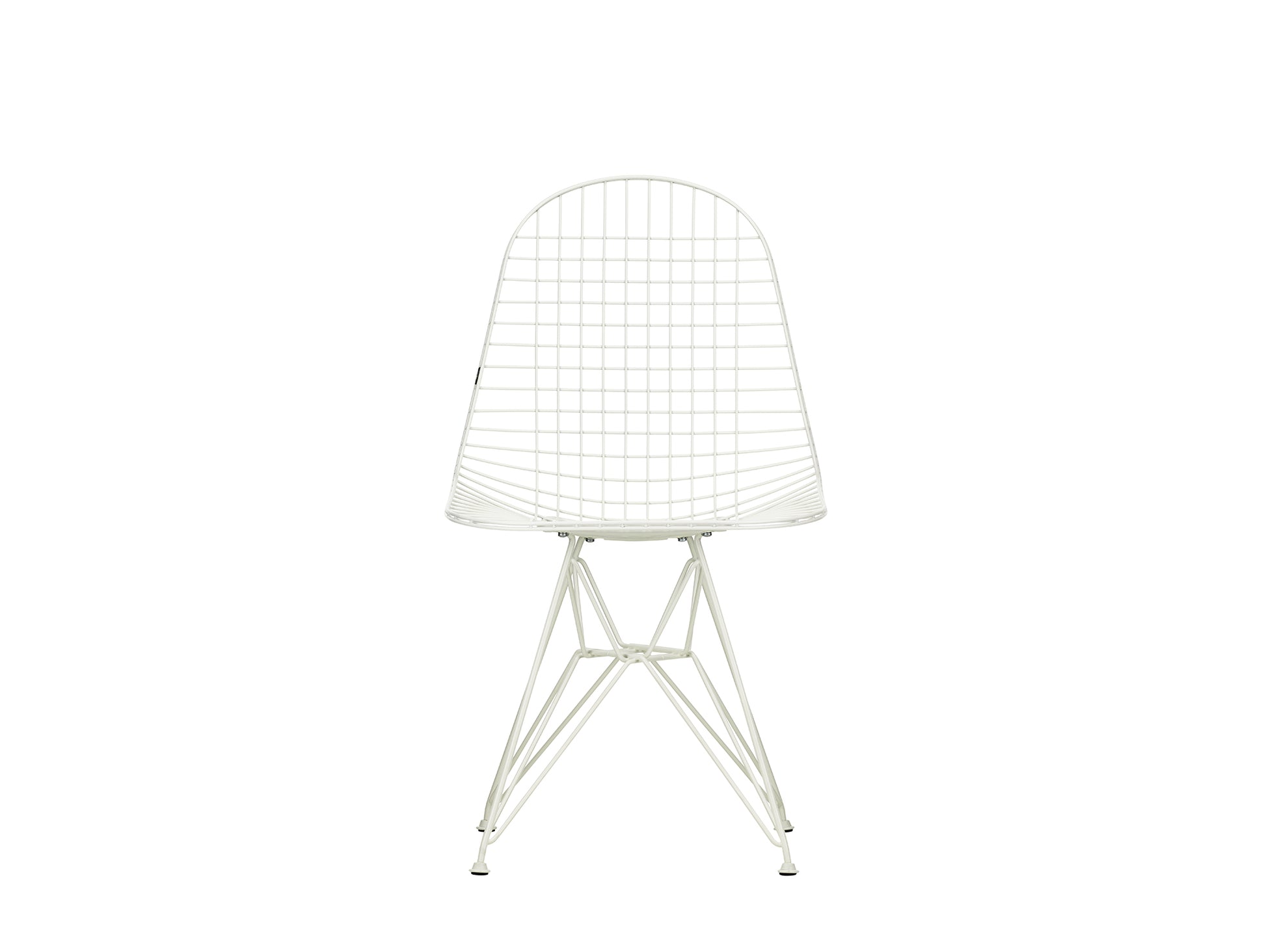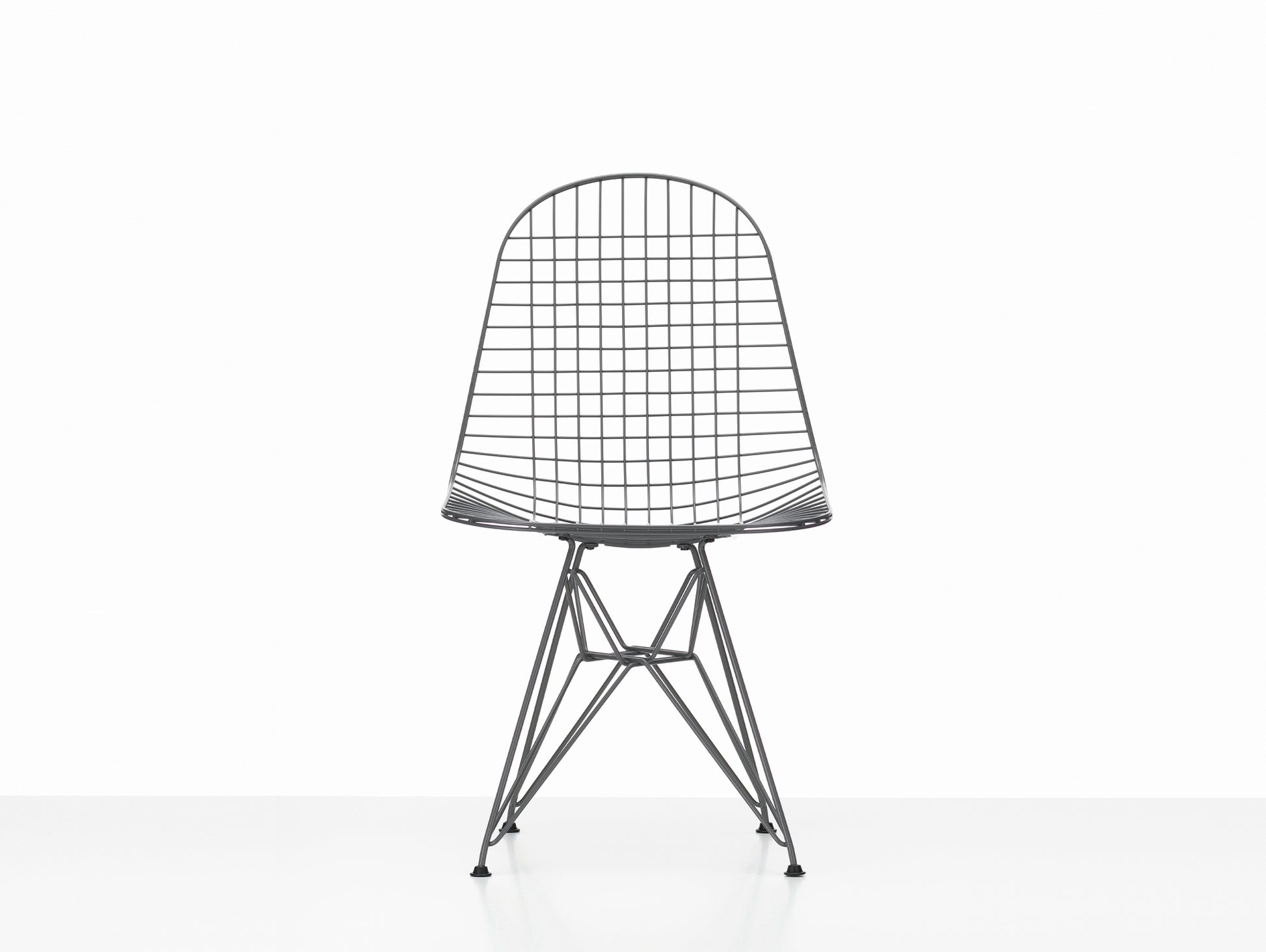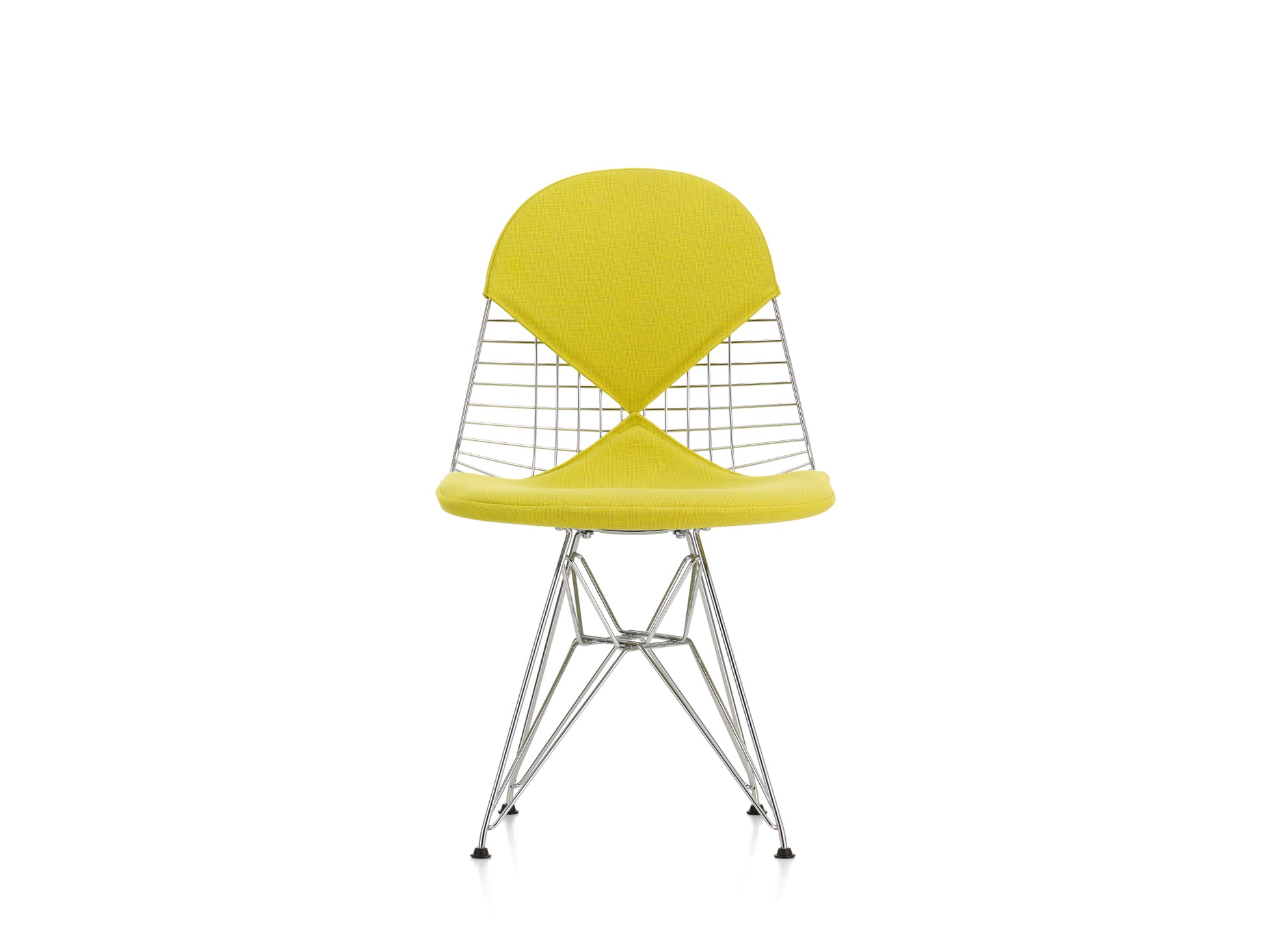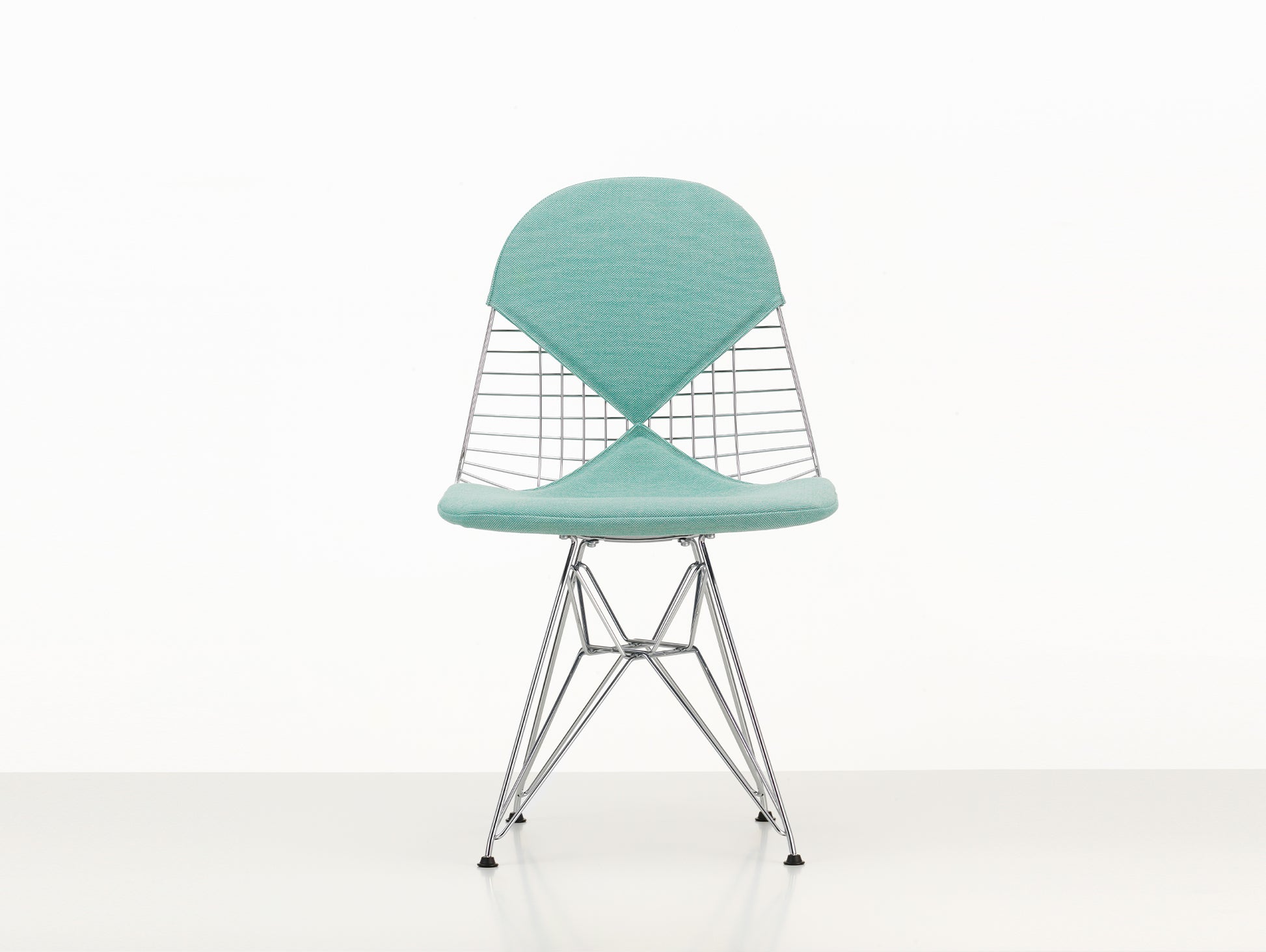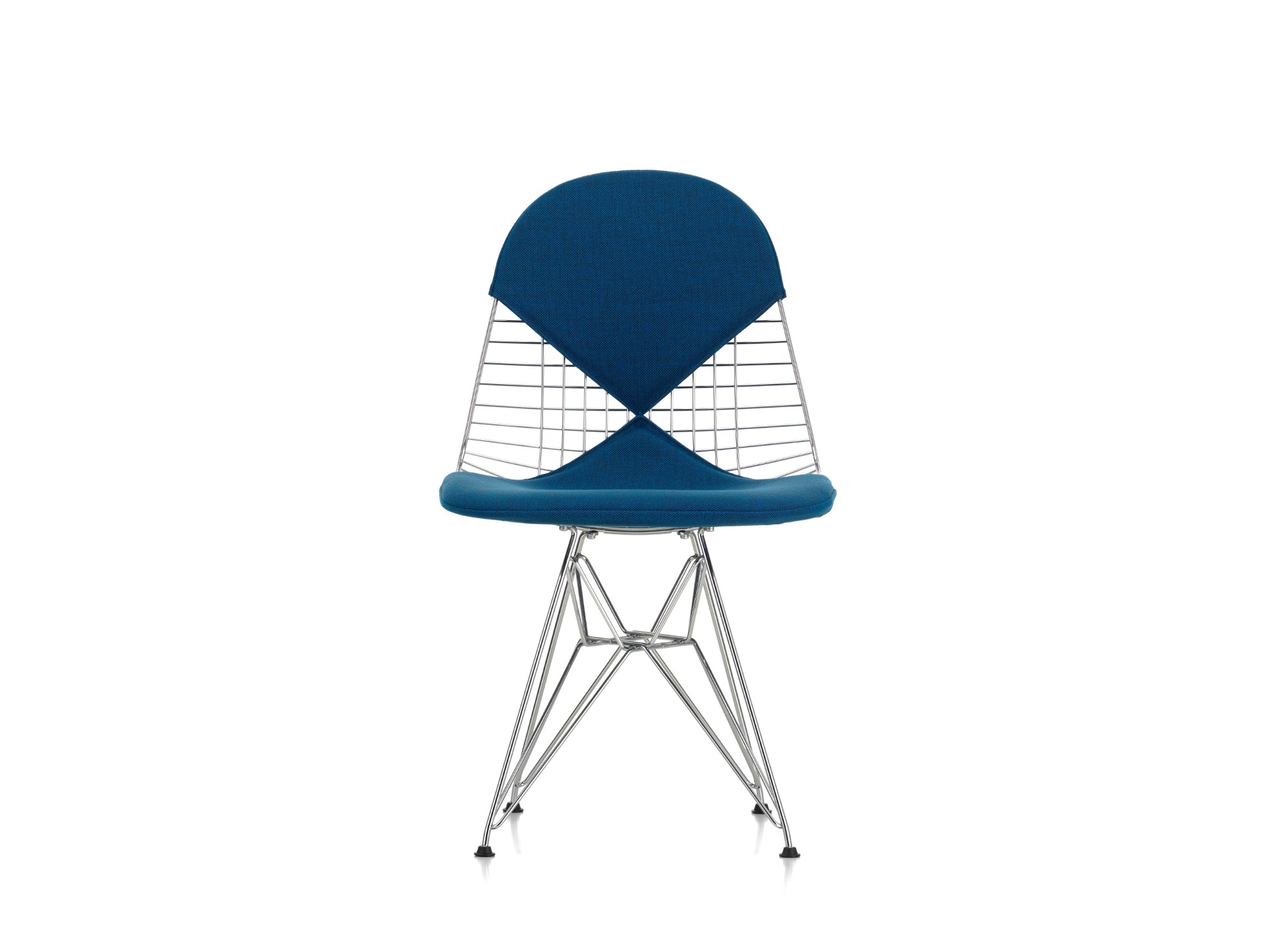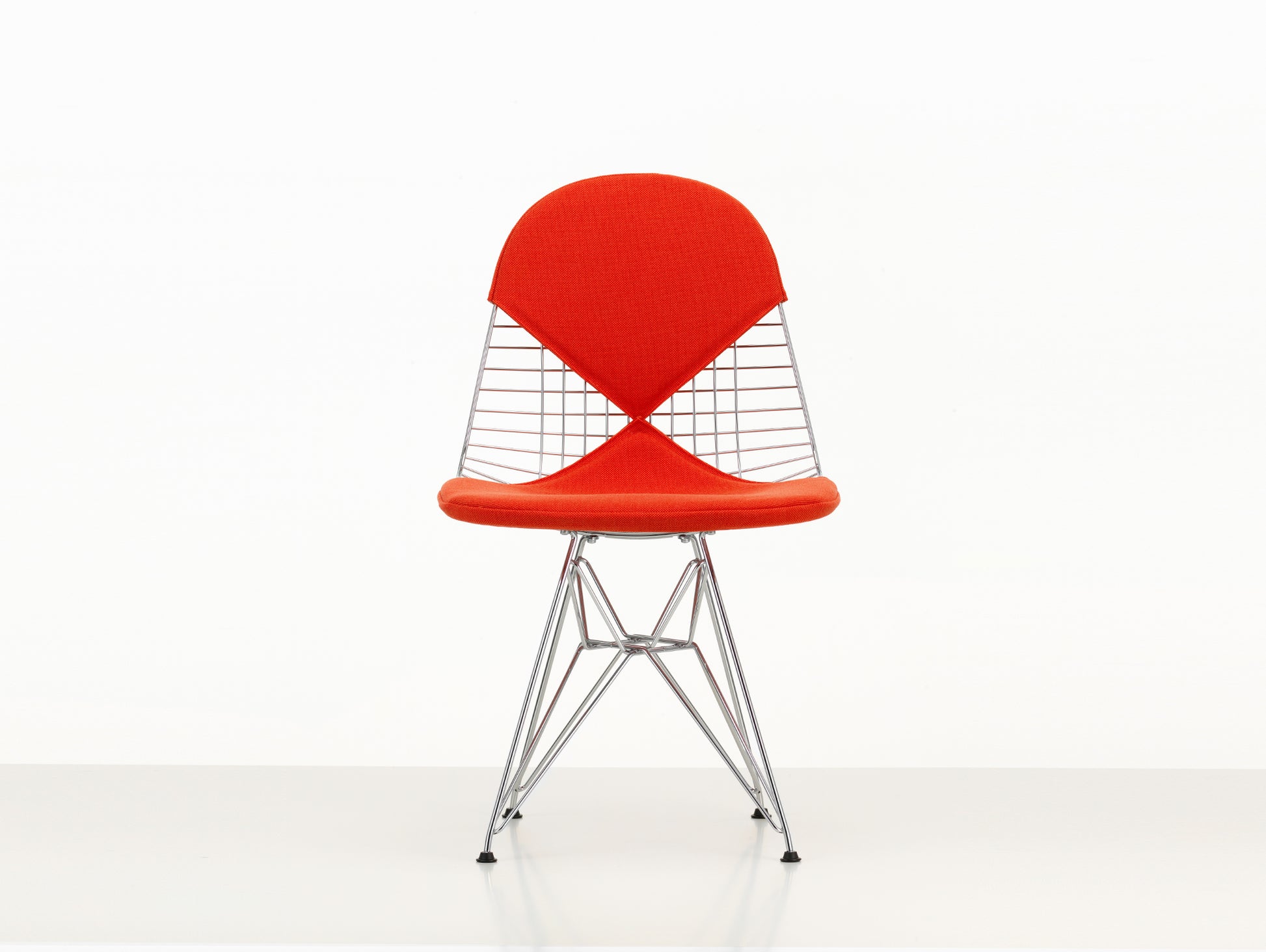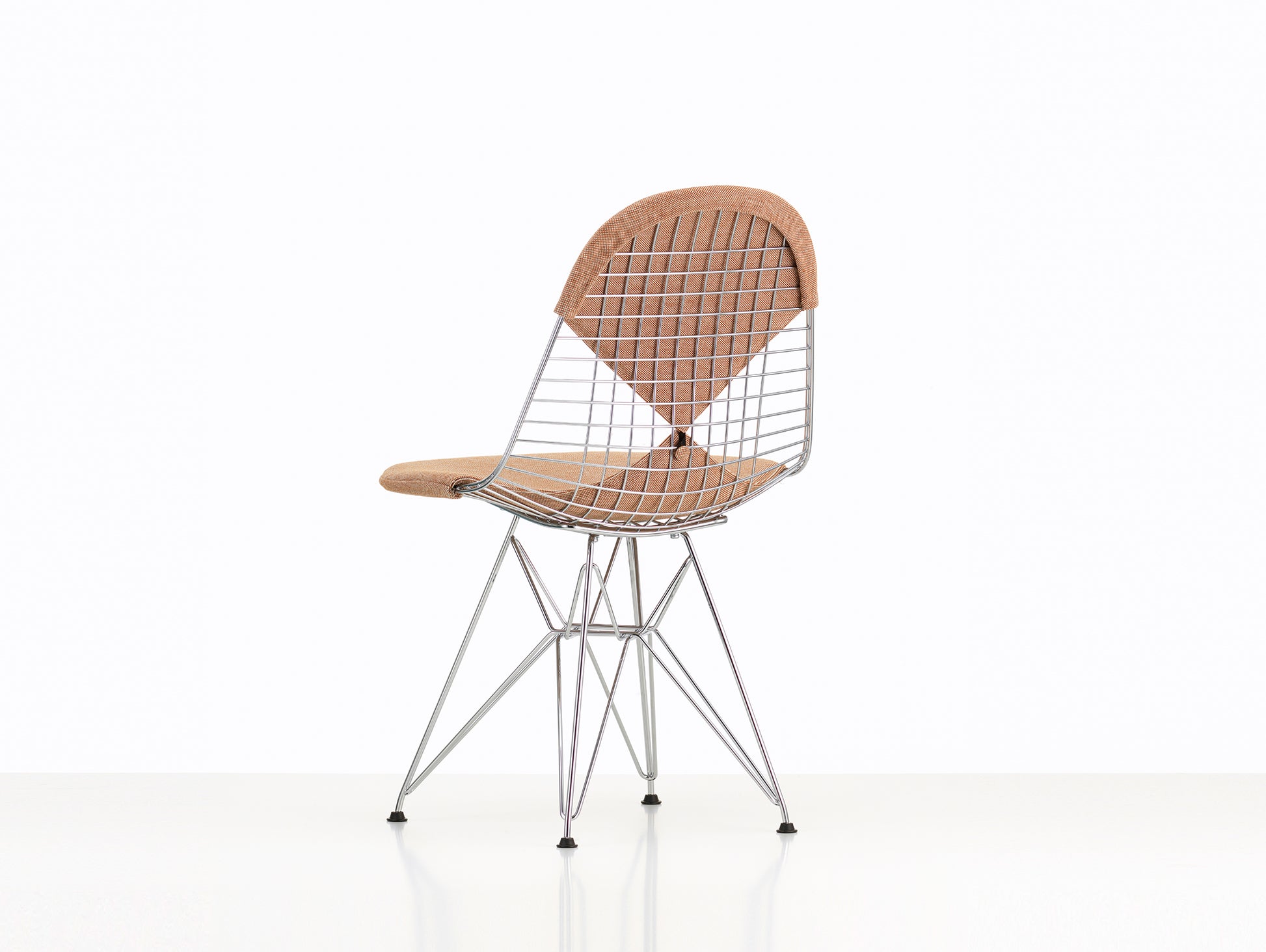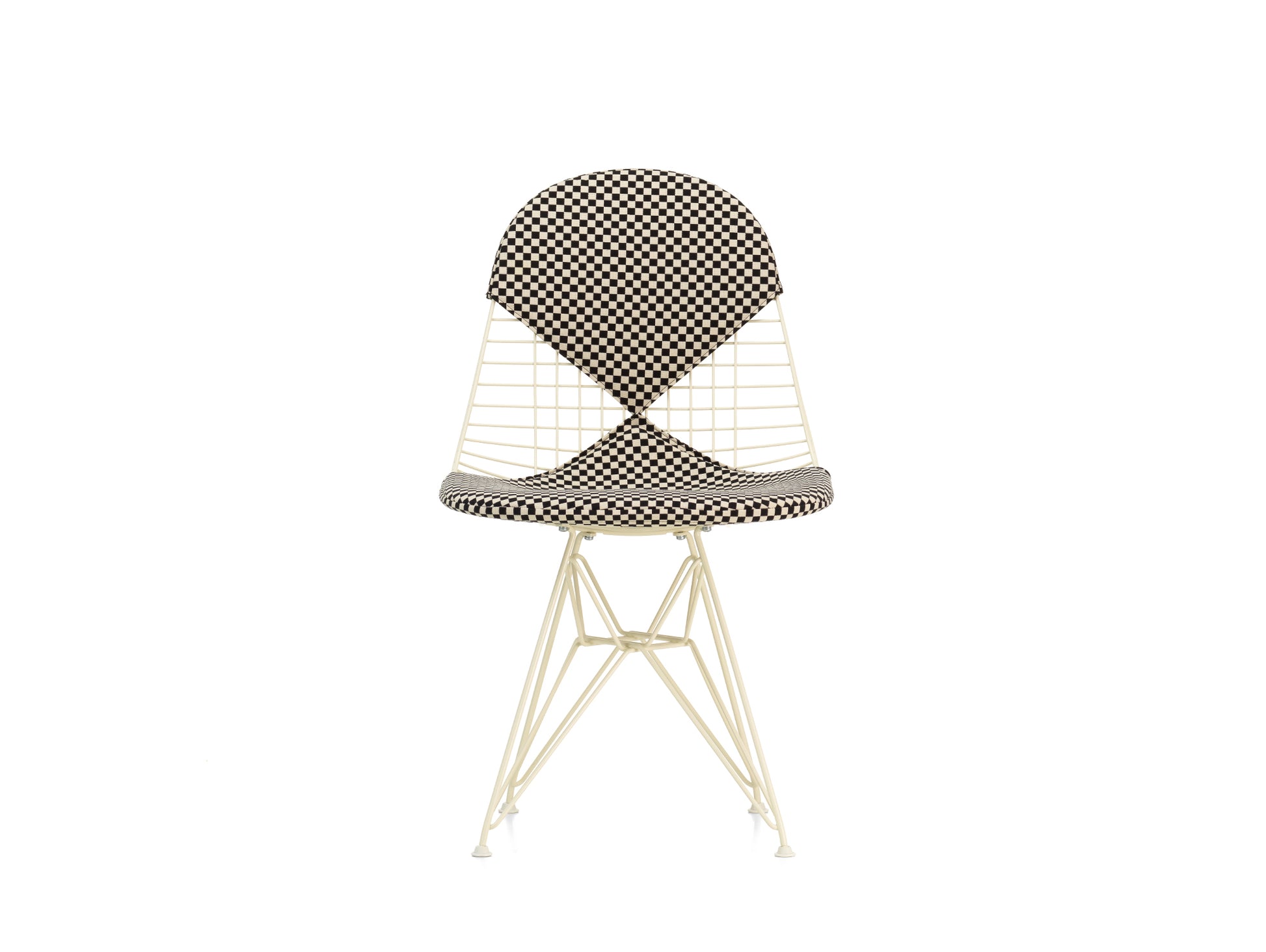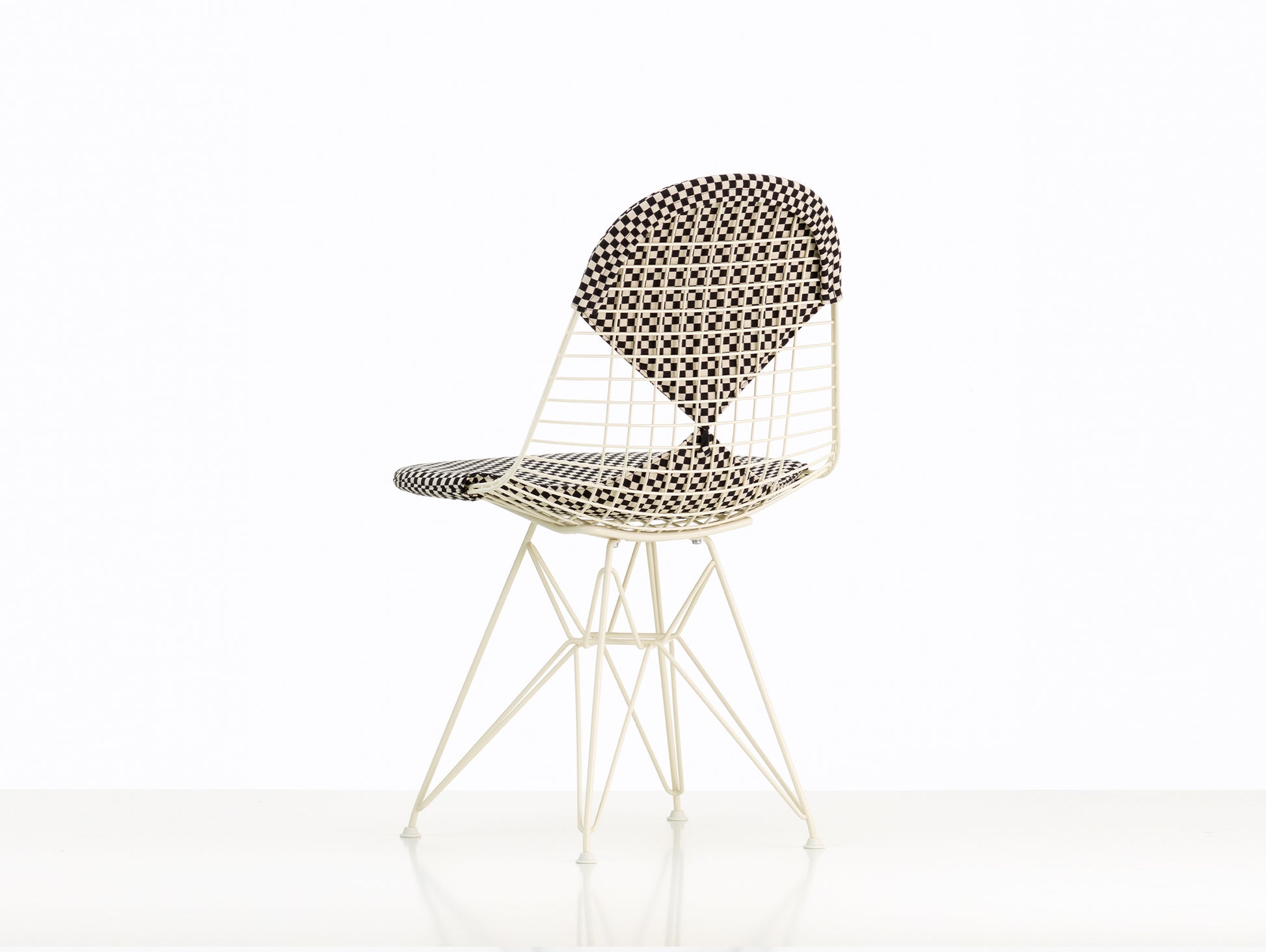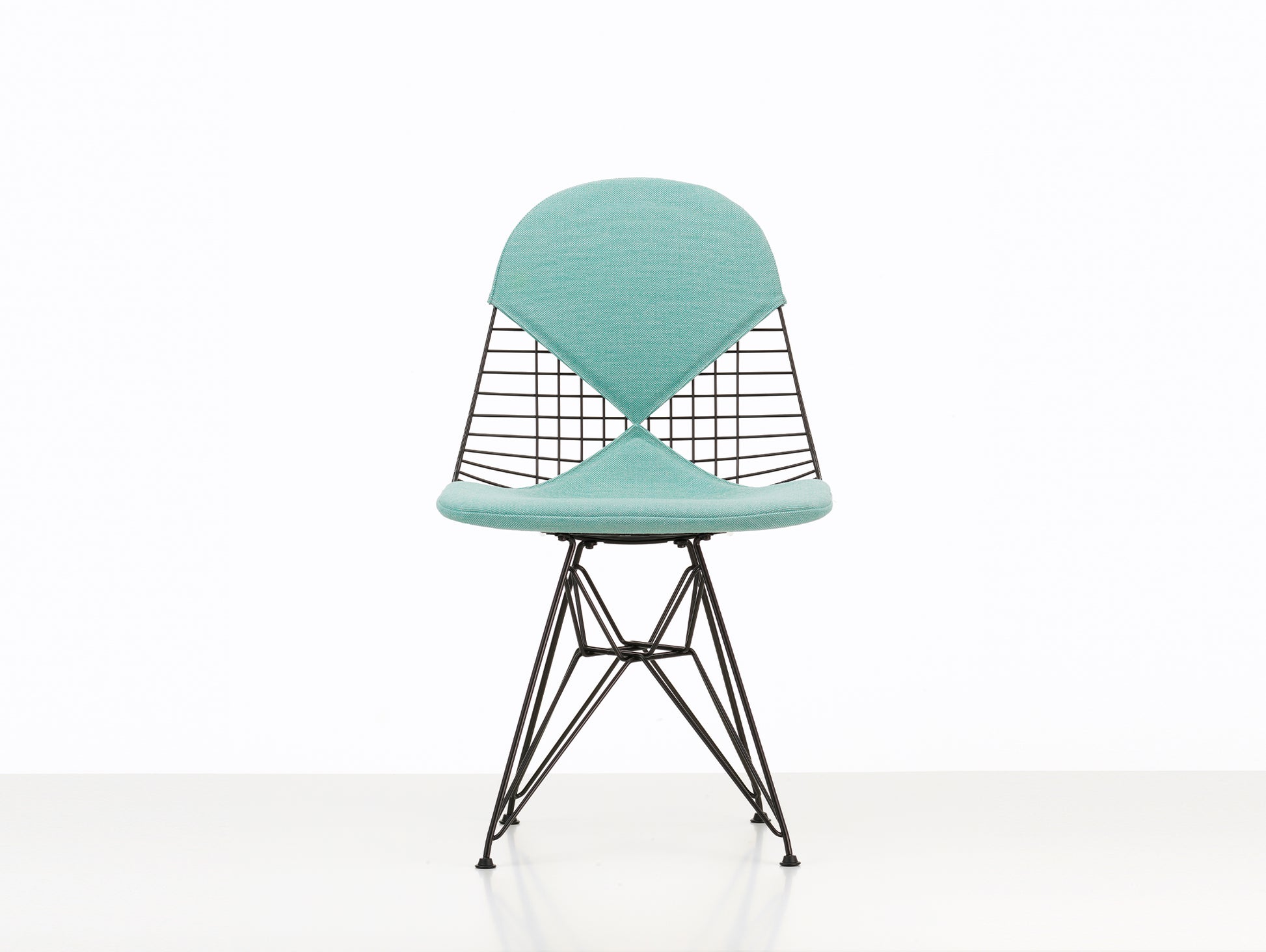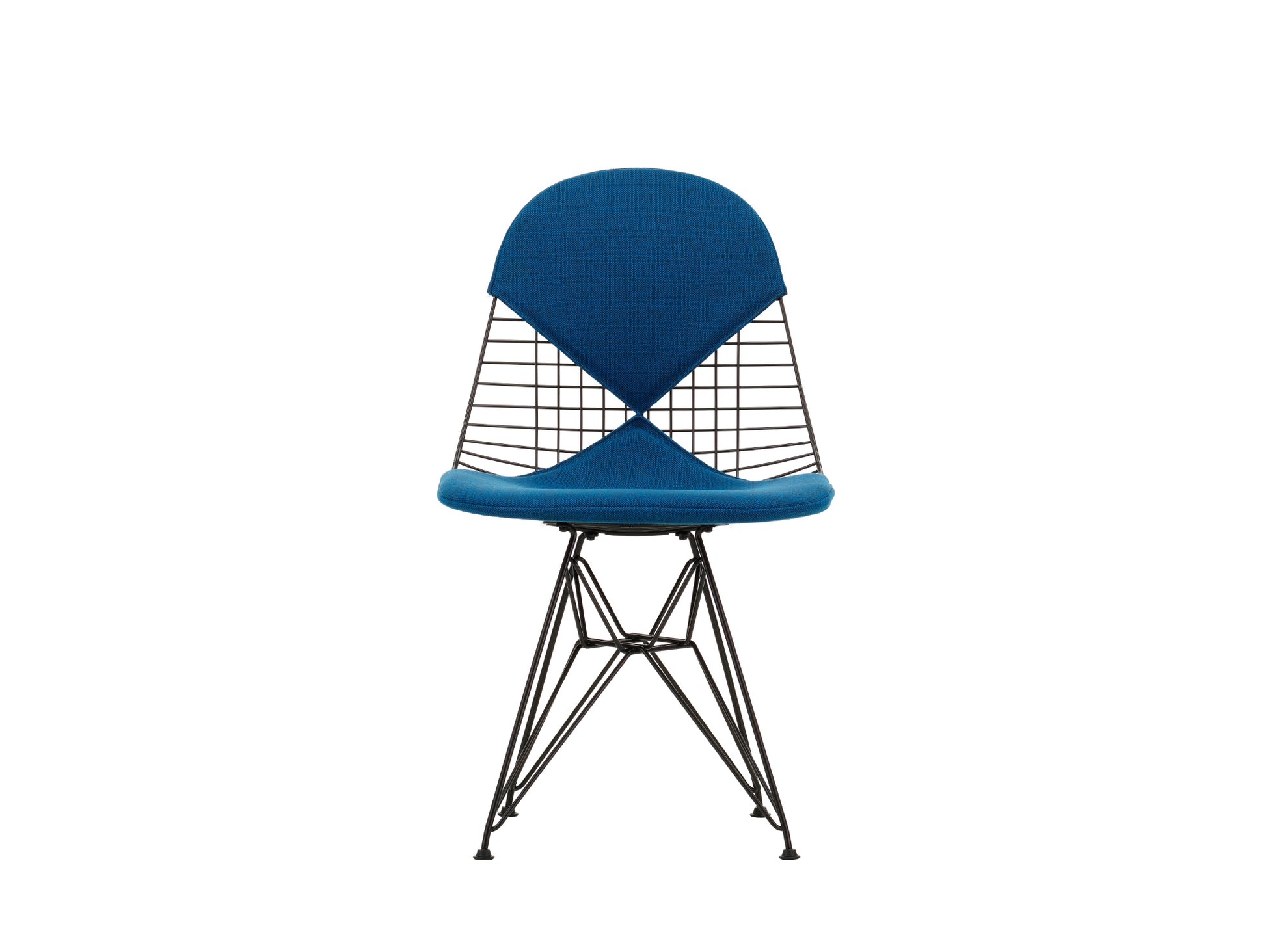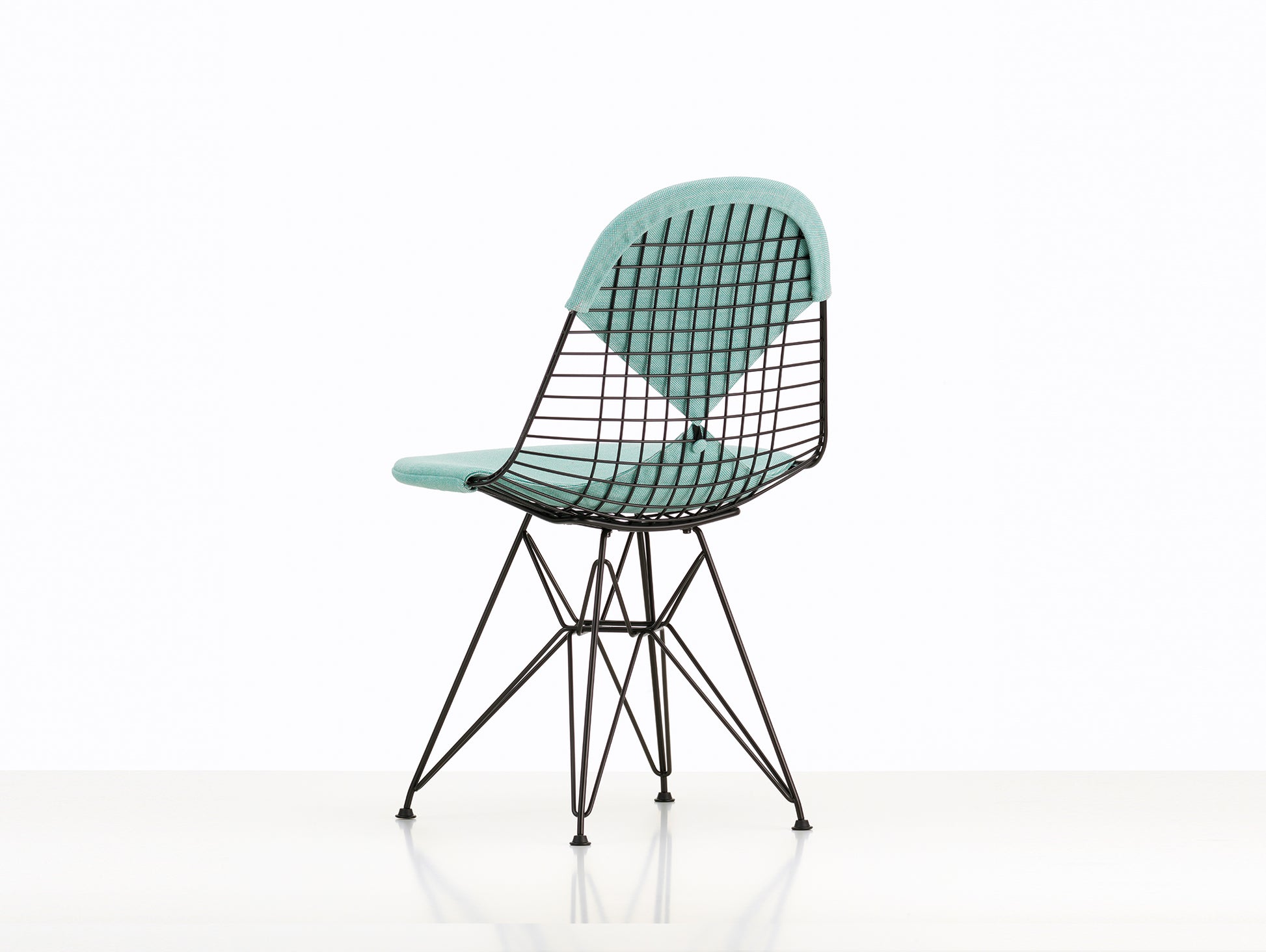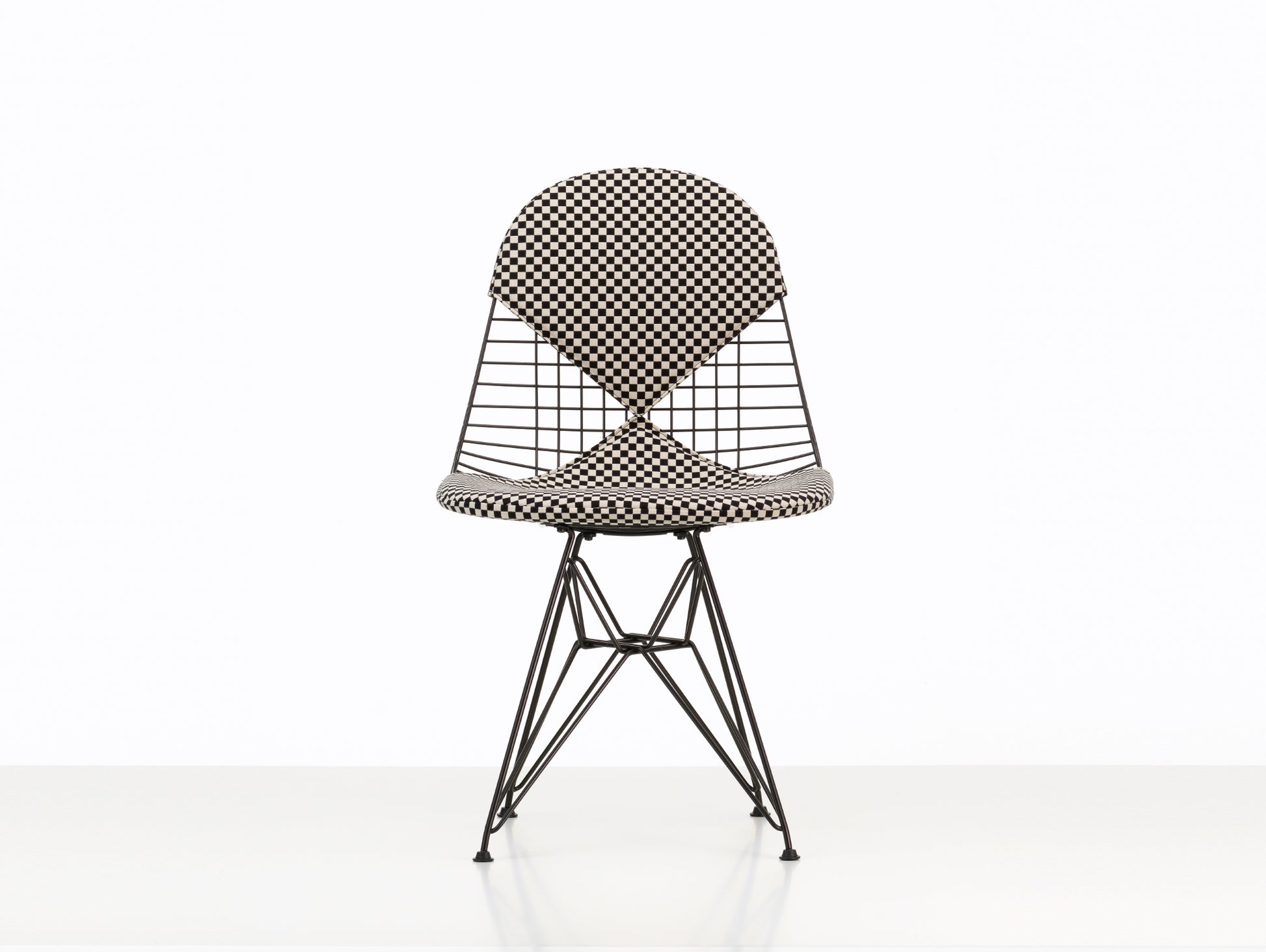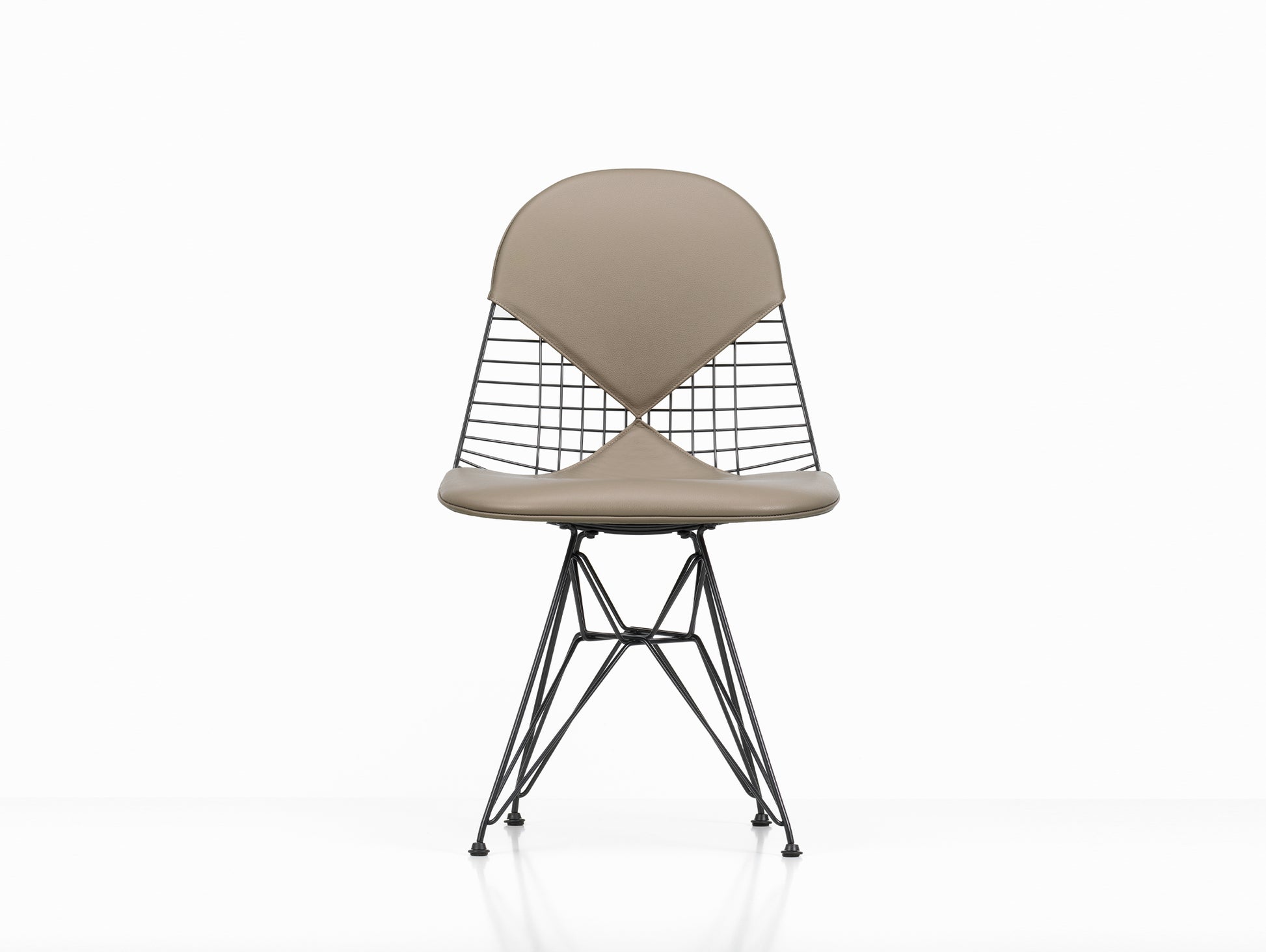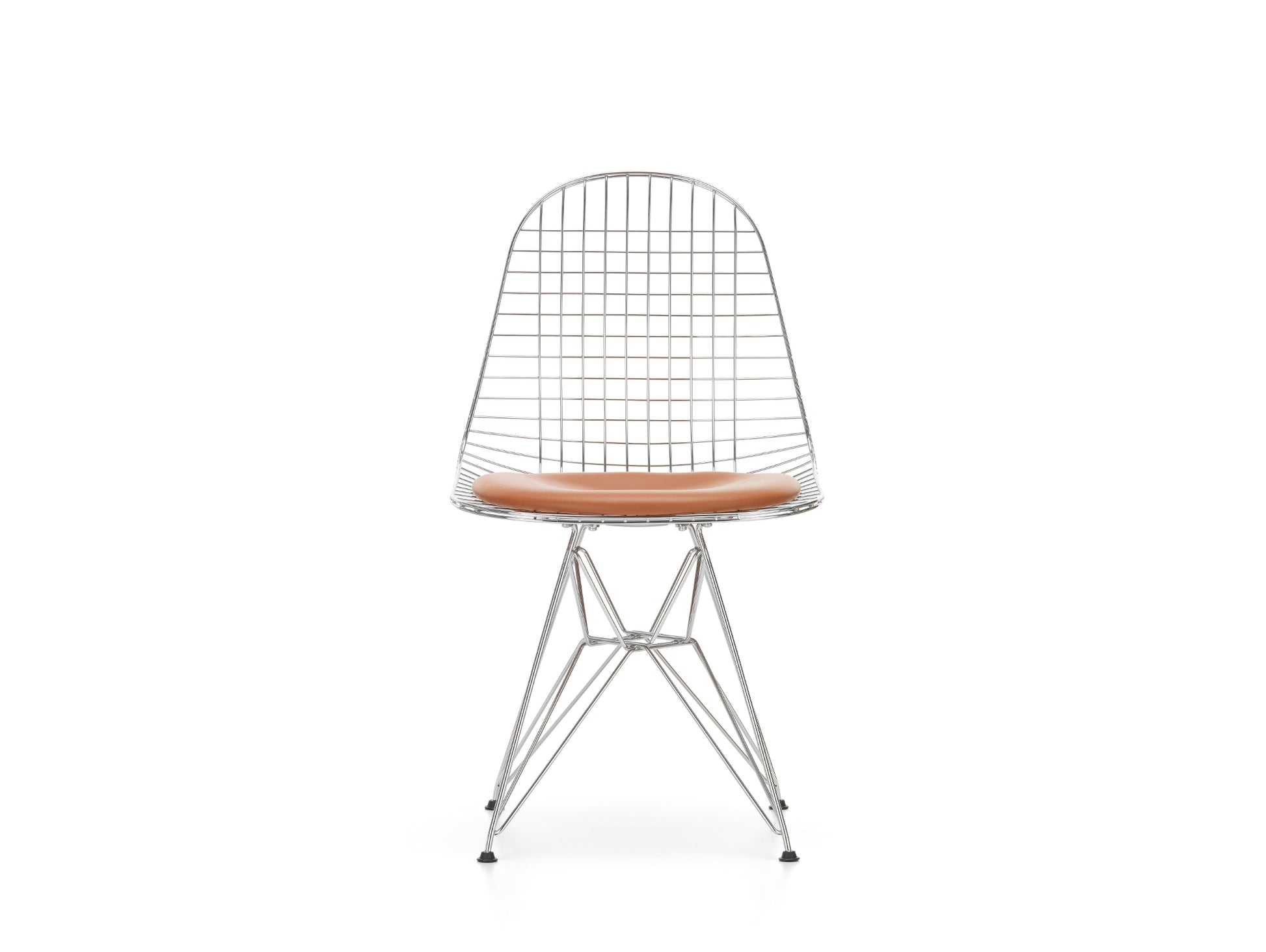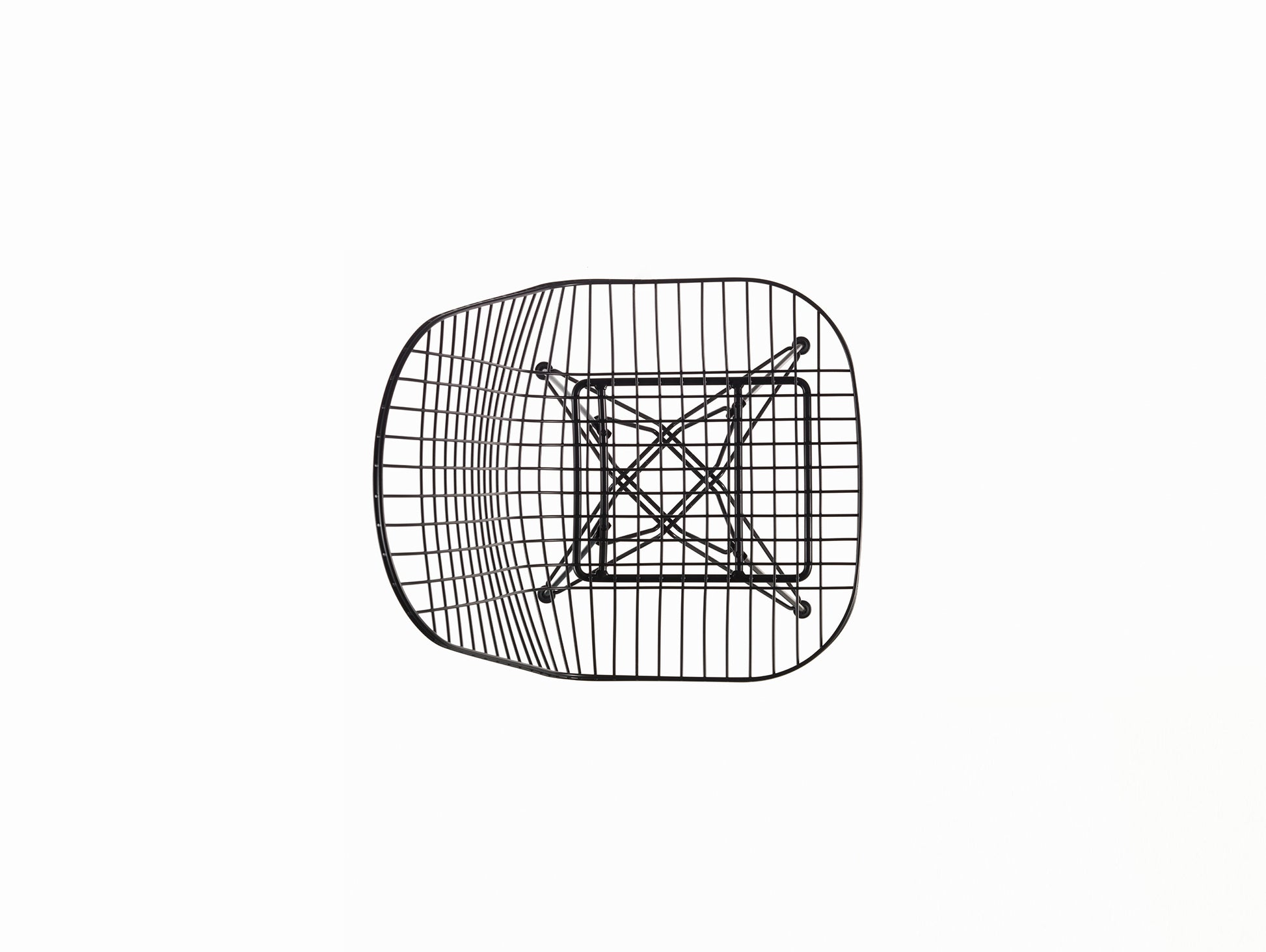Designed in 1951, the Vitra Eames Wire Chair (DKR: Dining Knot-Wire Chair Rod-base) is a variation on the theme of the organically shaped one-piece seat shell, pairing transparent lightness with technological sophistication.
Their intention was to design a light and durable chair using a minimal amount of materials. Inspired by the DSR chair, the first industrially produced plastic chair, they came up with an intelligent design solution which uses a wireframe grid and a classic Eames Eiffel base to create a functional and honest chair with a unique expression.
Despite being an all-metal chair it is very comfortable due to the carefully sculpted form. Impressive yet subtle this iconic chair is a great addition to a broad array of interior and exterior spaces.
The wire shell can be joined with a variety of different bases and is offered without upholstery, with a removable seat cushion, or with a removable two piece seat and back cushion for the ultimate in comfort. DKR models with a powder-coated finish (not chrome) are suited for both indoor and outdoor use.
Eames DKR Wire Chair
Eames DKR Wire Chair
by Vitra
Couldn't load pickup availability
Reasons to shop with us
-

Reliable high quality delivery services
-

Independent London retailer since 2012
-

Found it cheaper? We price match
-

Authentic original designs only
‘Made to Order’ products are ordered in from the manufacturer on the customers request and are considered a bespoke product - special terms and conditions apply. Production (lead) times stated above are an estimate only and do not include transit times from the supplier, or the time taken to deliver to you.
In stock items are available for immediate dispatch from our London-based warehouse. The daily cut-off time is 12:00 am for same day shipping, orders placed in the afternoon will be shipped the following day. Please refer to inventory levels above for live stock availability.
Technical Information
Dimensions:-
Width: 49 cm, Depth: 51 cm, Height: 85 cm, Seat Height: 43 cm, Seat Depth: 43 cm
Materials/Construction
Upholstery: un-upholstered, with seat cushion (DKR-5) or with seat and back pad (DKR-2). Seat and back pads can be removed and reattached; available in Hopsak fabric or Premium L20 cowhide leather.
Seat shell: bent and welded steel wire, chrome-plated or powder-coated in white or dark colour. The powder-coated version is suitable for outdoor use.
Base: four-legged base with cross struts, surface finish matched to seat shell.
Glides: fitted with plastic glides for carpet. Felt glides for hard floors are available upon request.
Designed in 1951, the Vitra Eames Wire Chair (DKR: Dining Knot-Wire Chair Rod-base) is a variation on the theme of the organically shaped one-piece seat shell, pairing transparent lightness with technological sophistication.
Their intention was to design a light and durable chair using a minimal amount of materials. Inspired by the DSR chair, the first industrially produced plastic chair, they came up with an intelligent design solution which uses a wireframe grid and a classic Eames Eiffel base to create a functional and honest chair with a unique expression.
Despite being an all-metal chair it is very comfortable due to the carefully sculpted form. Impressive yet subtle this iconic chair is a great addition to a broad array of interior and exterior spaces.
The wire shell can be joined with a variety of different bases and is offered without upholstery, with a removable seat cushion, or with a removable two piece seat and back cushion for the ultimate in comfort. DKR models with a powder-coated finish (not chrome) are suited for both indoor and outdoor use.
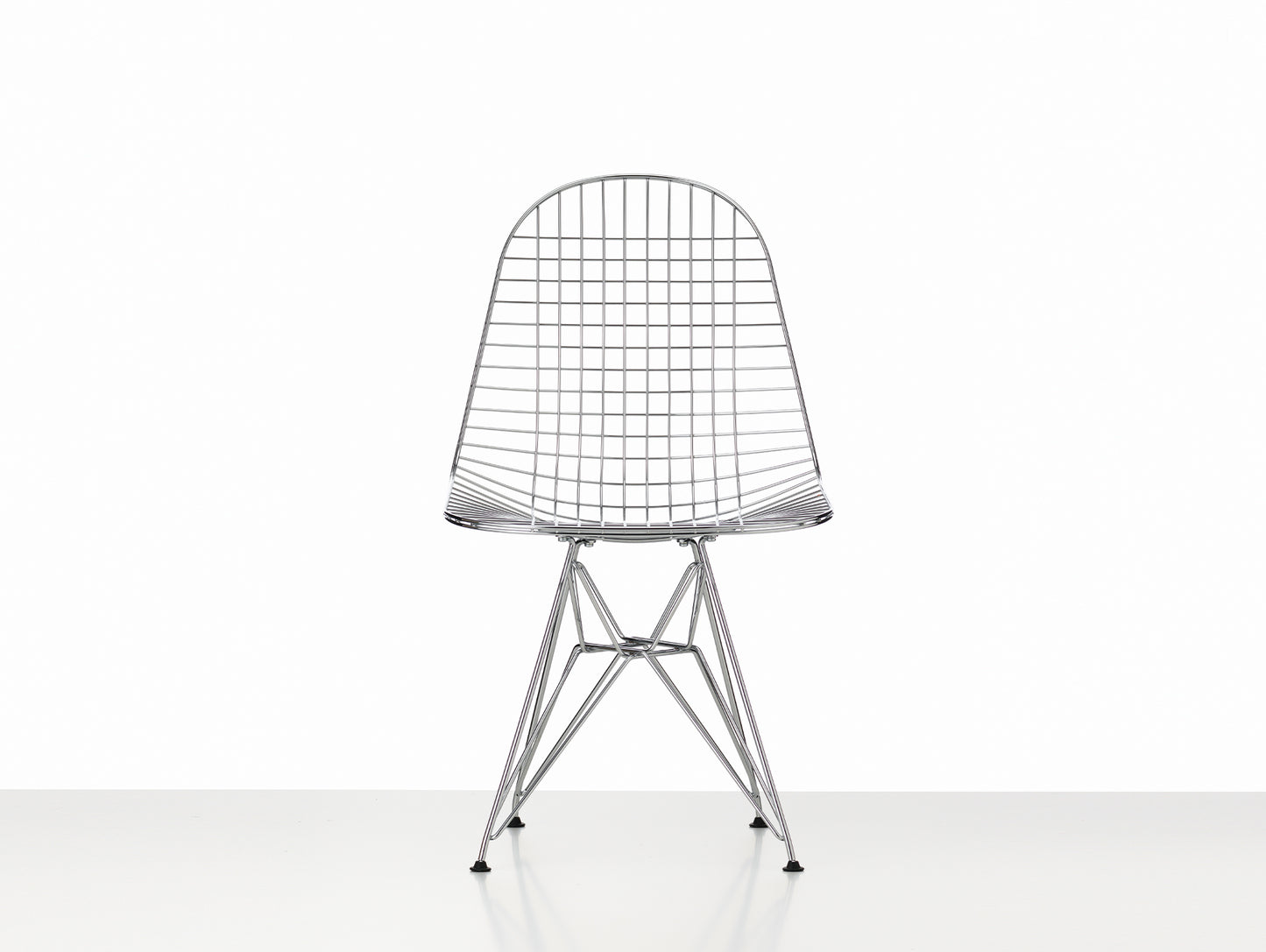
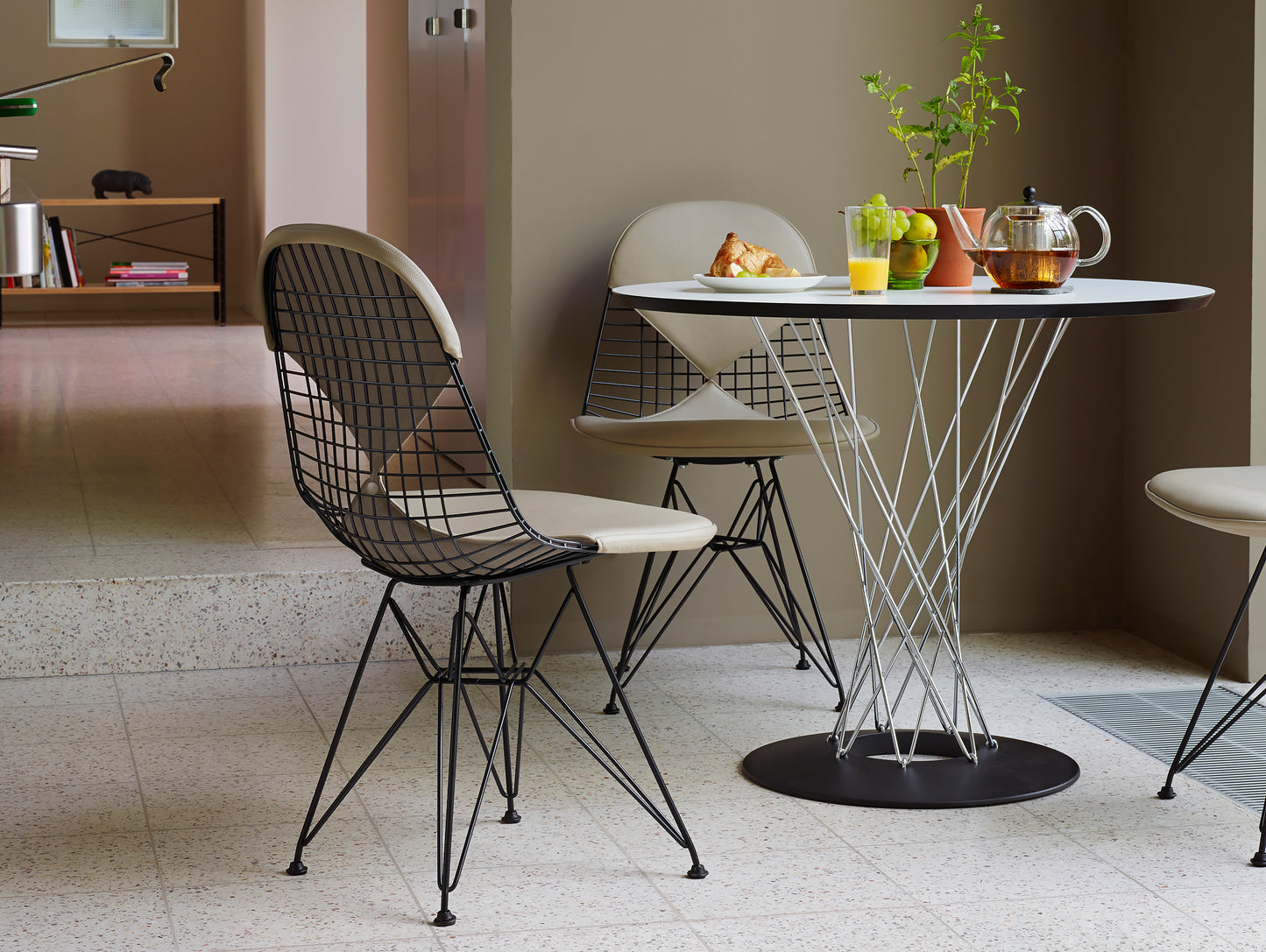
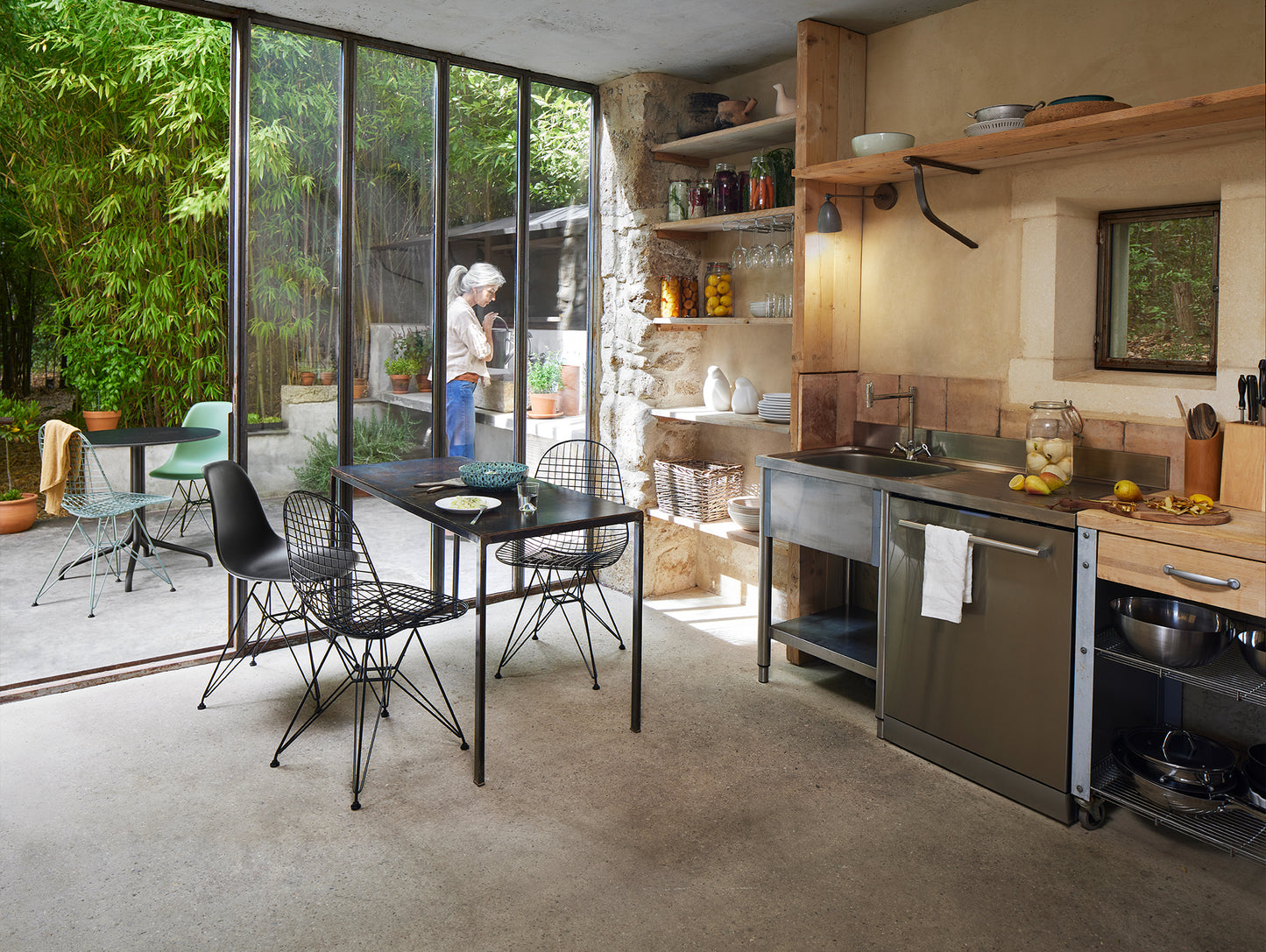
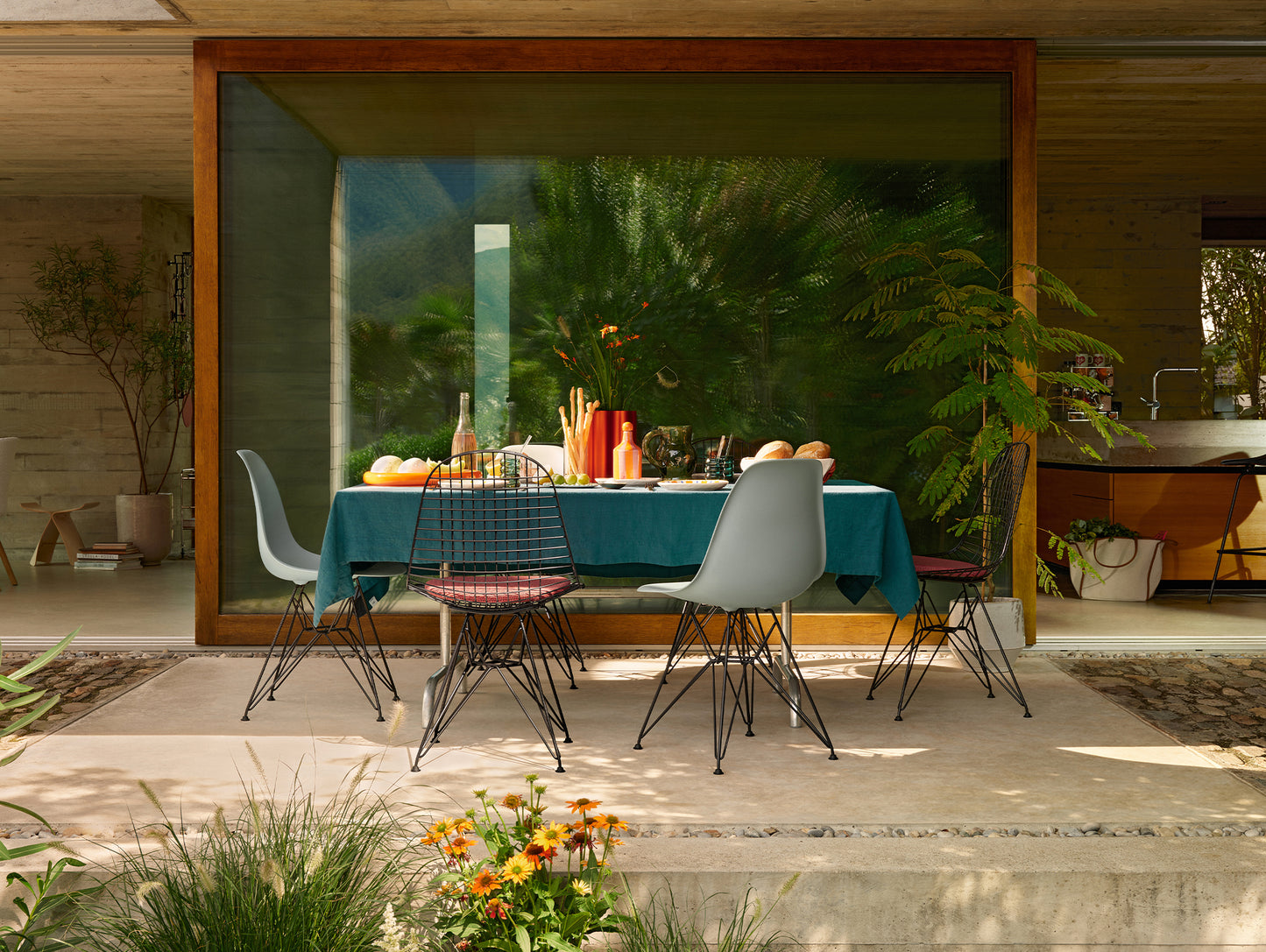
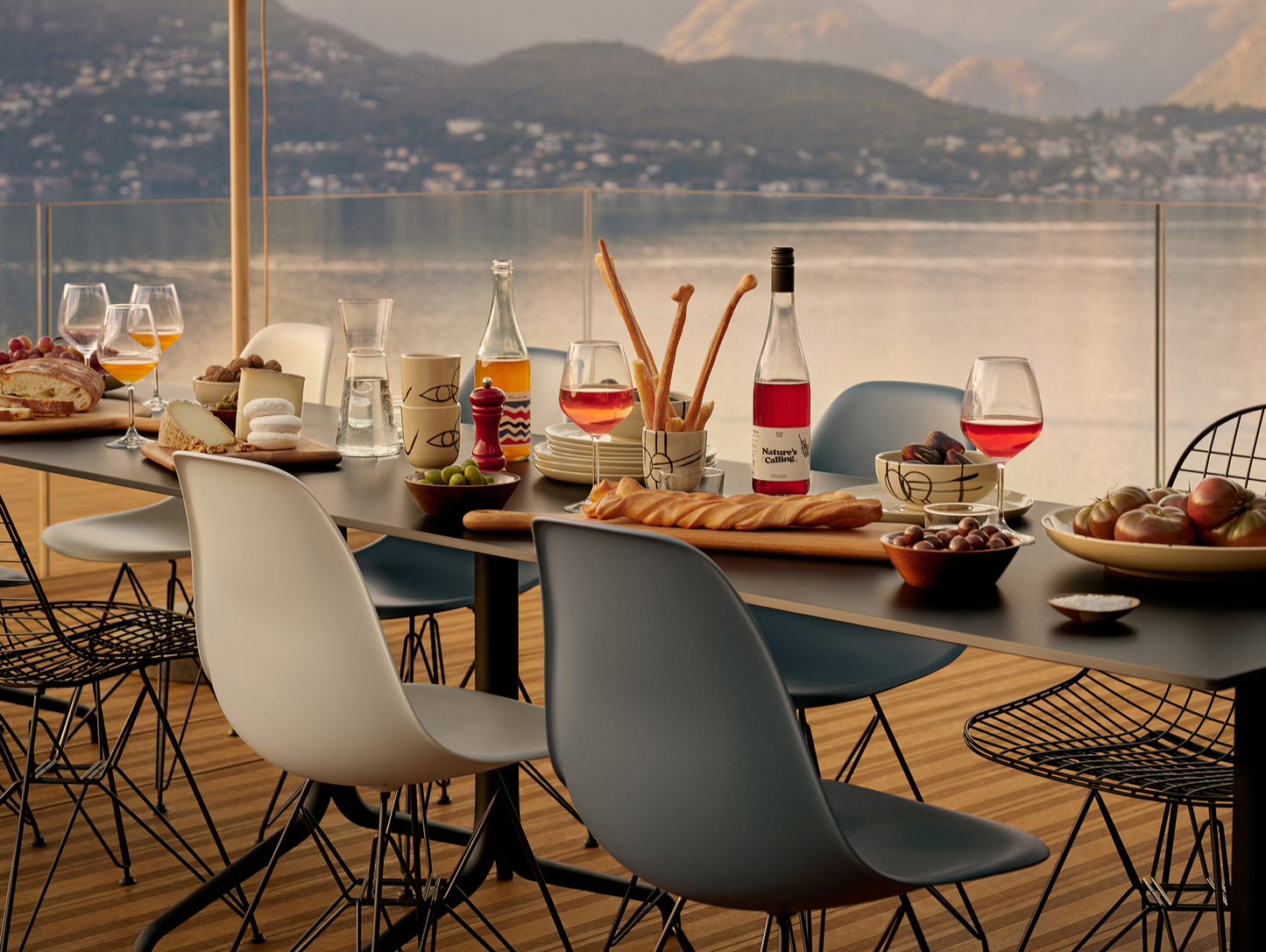
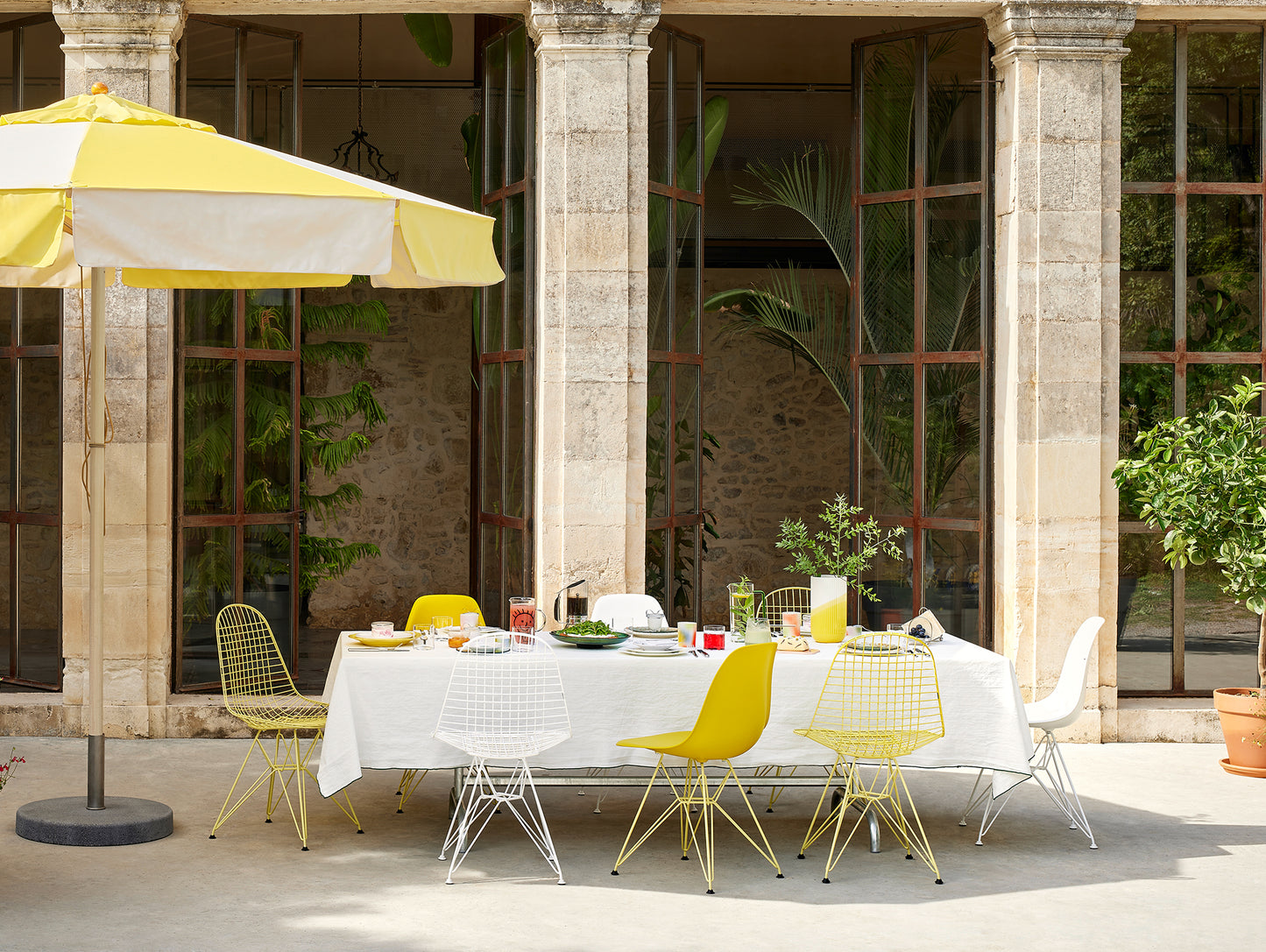
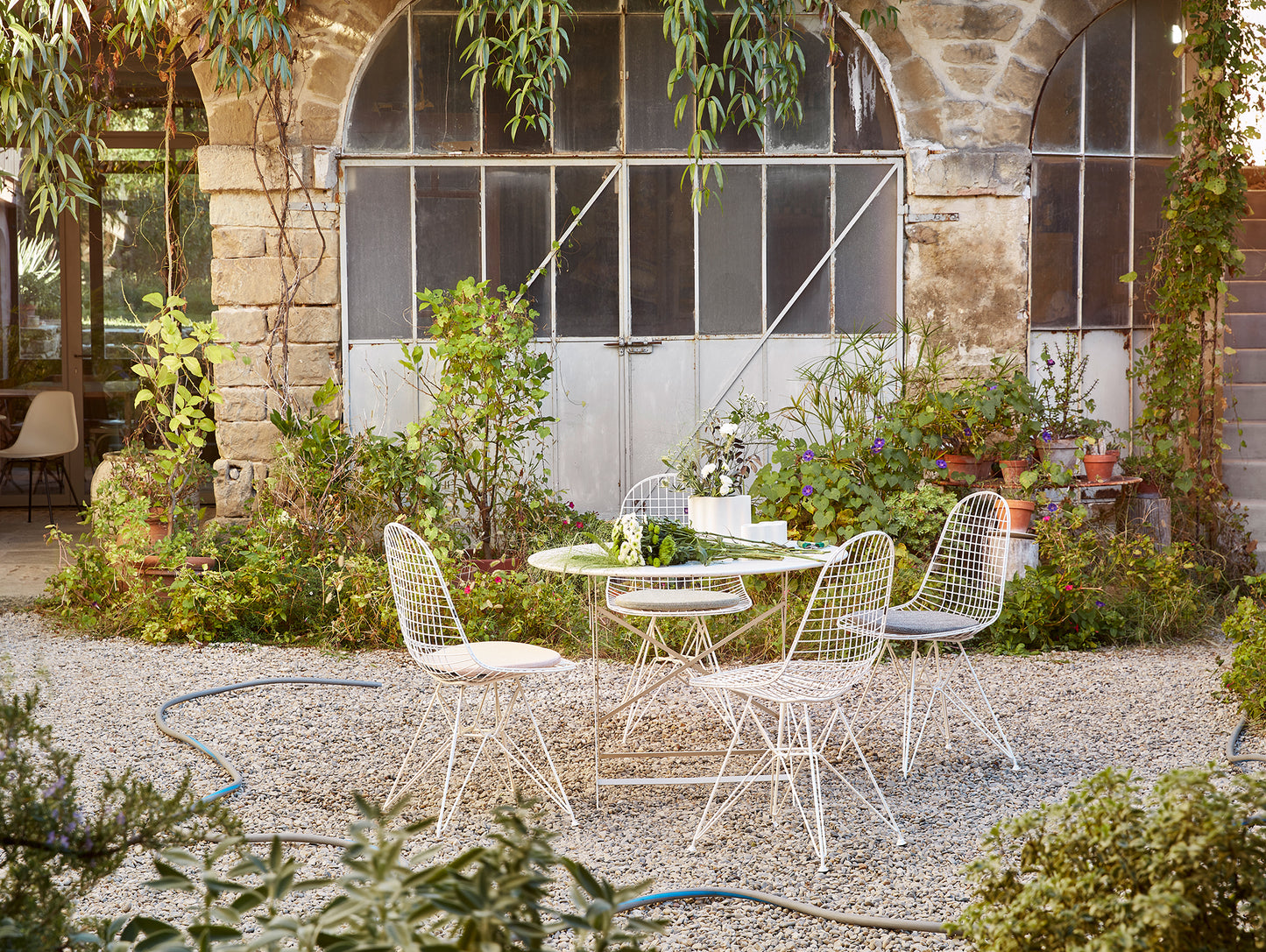
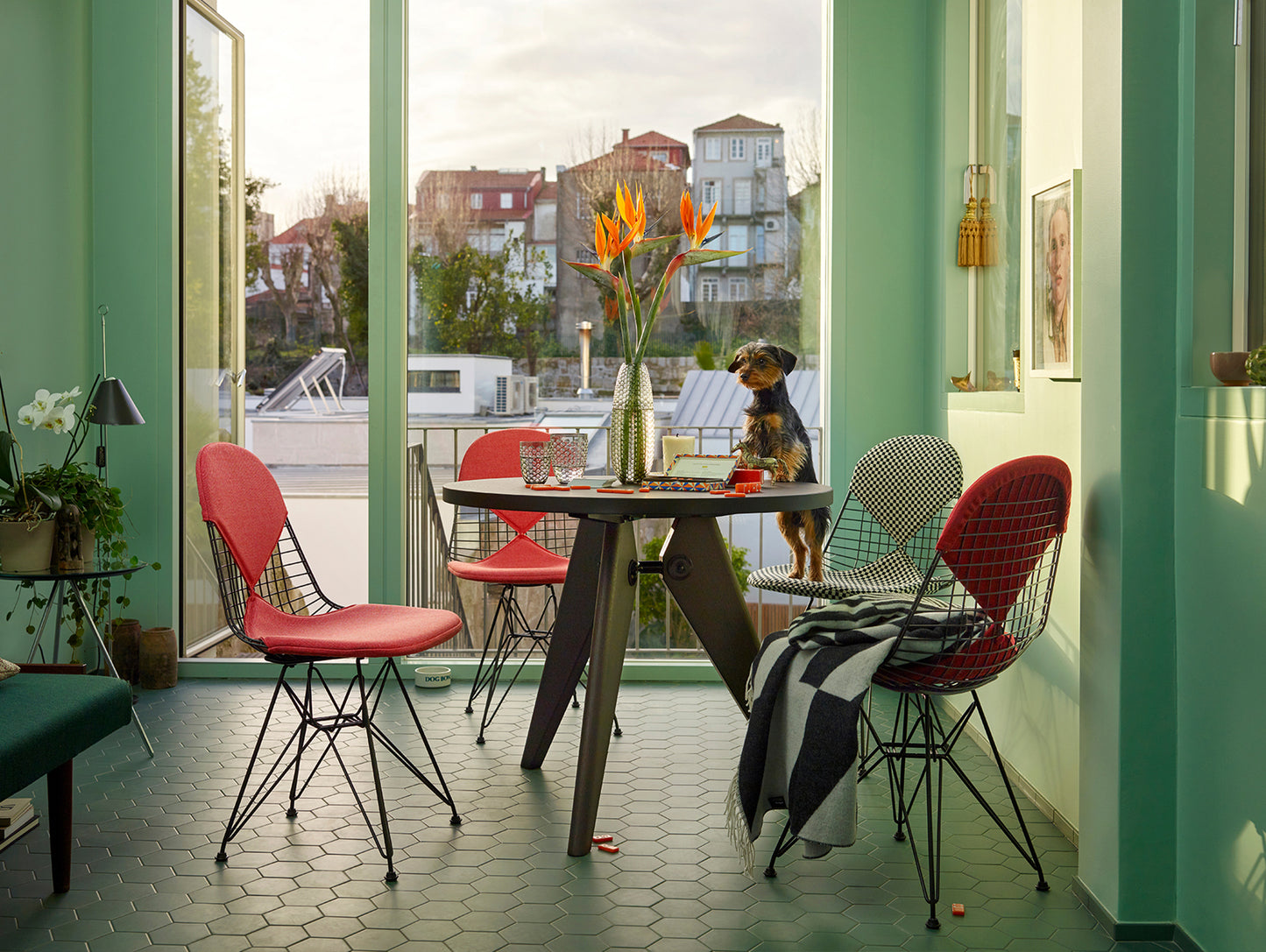
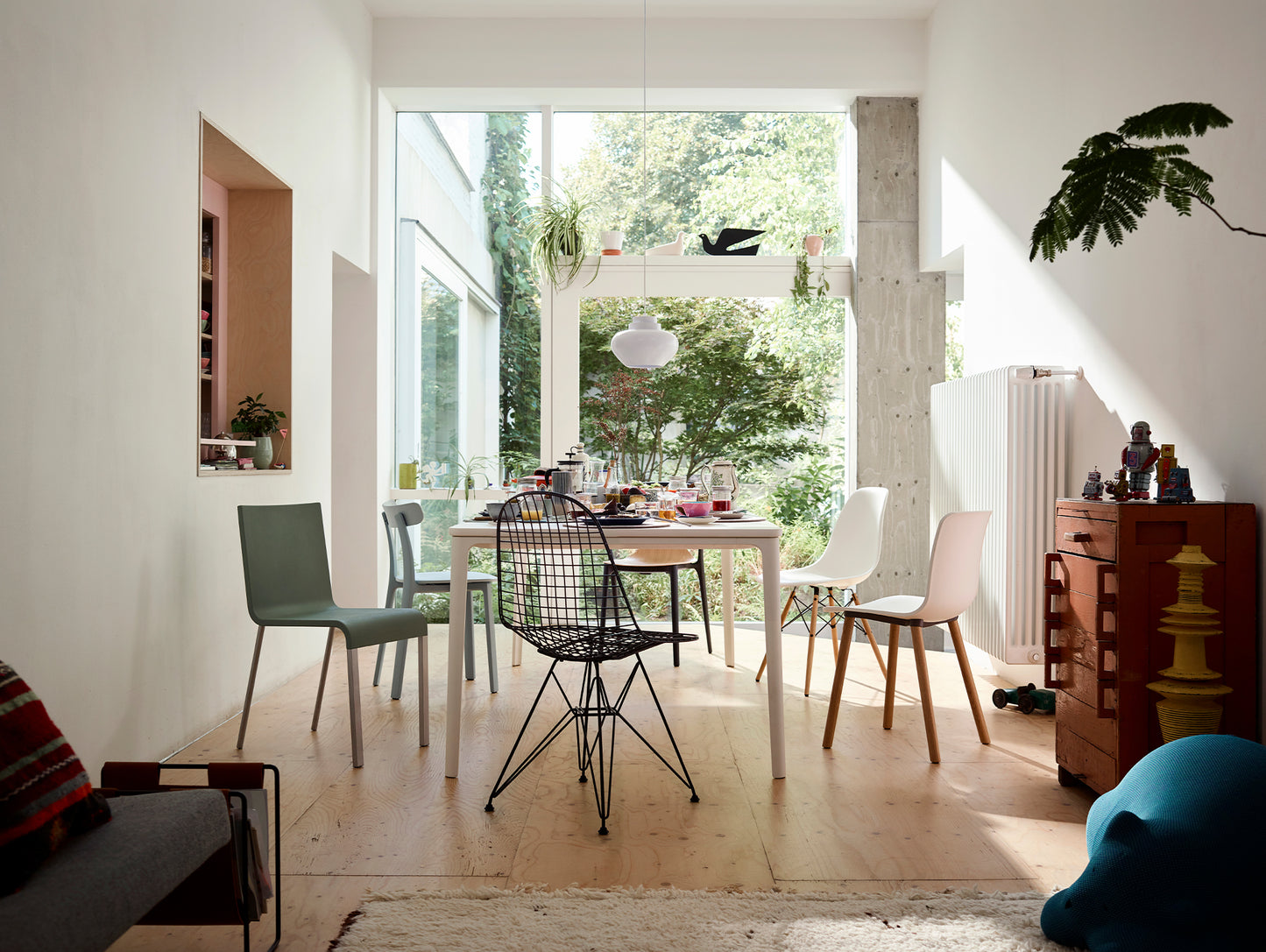
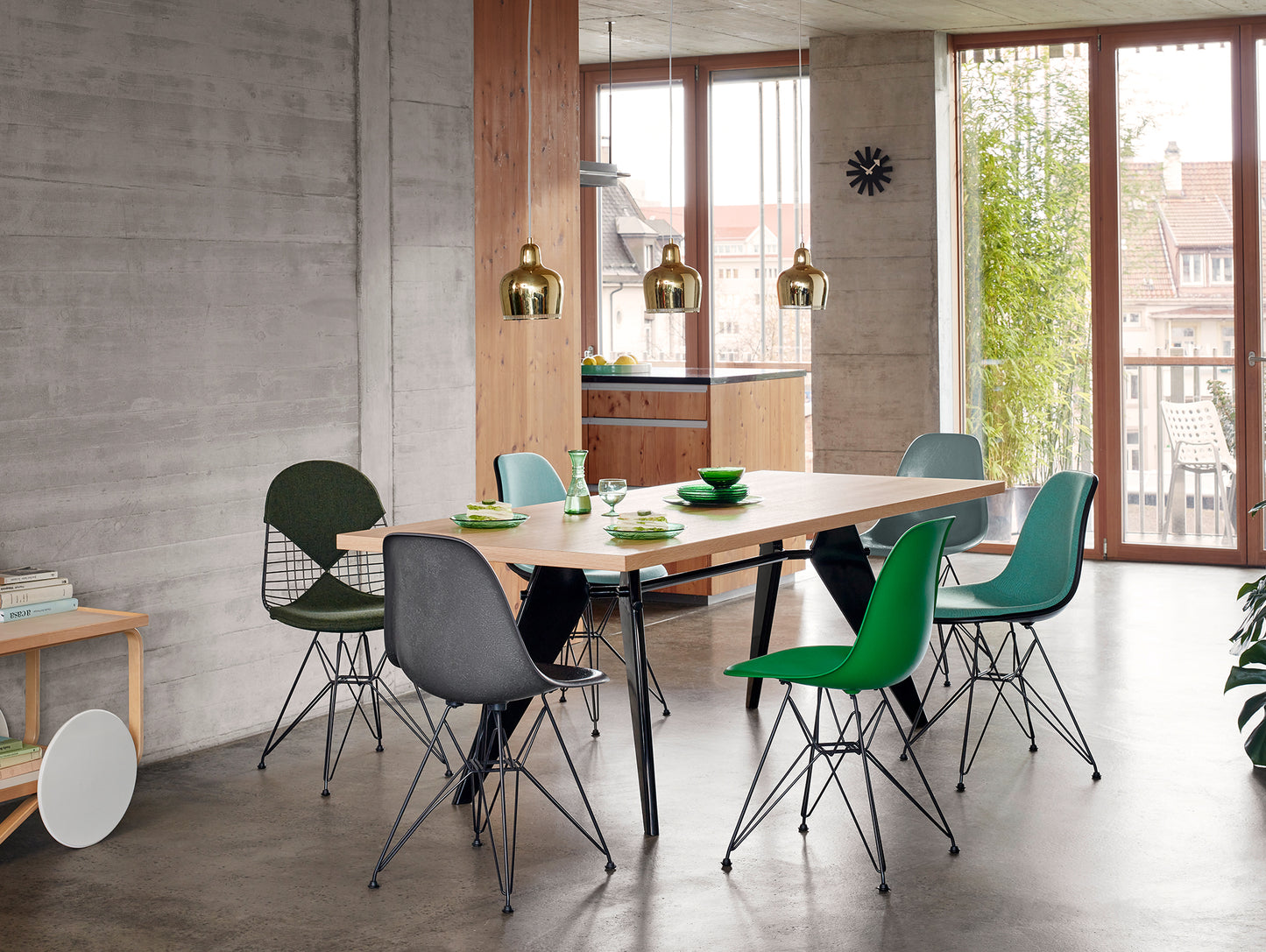
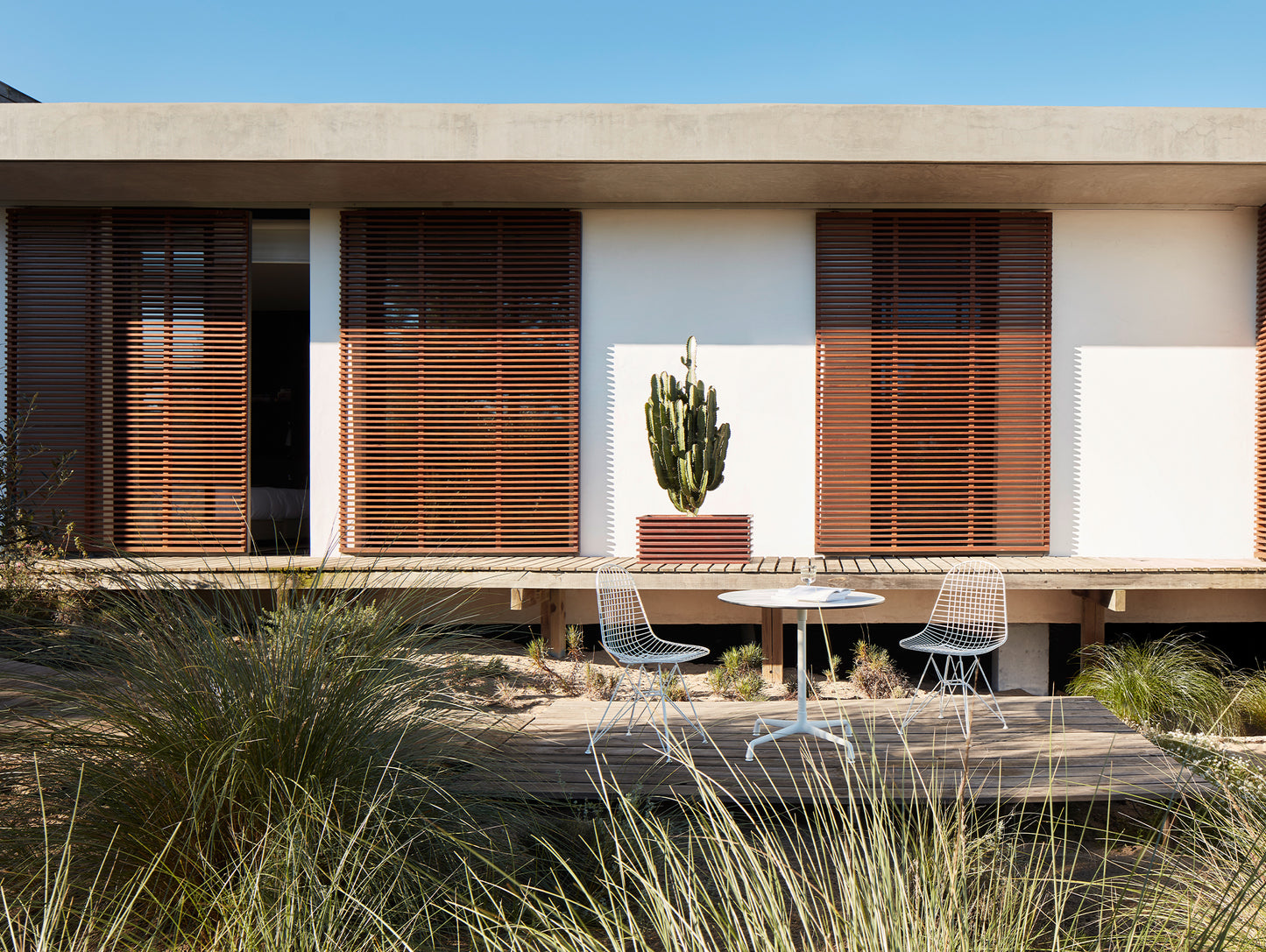
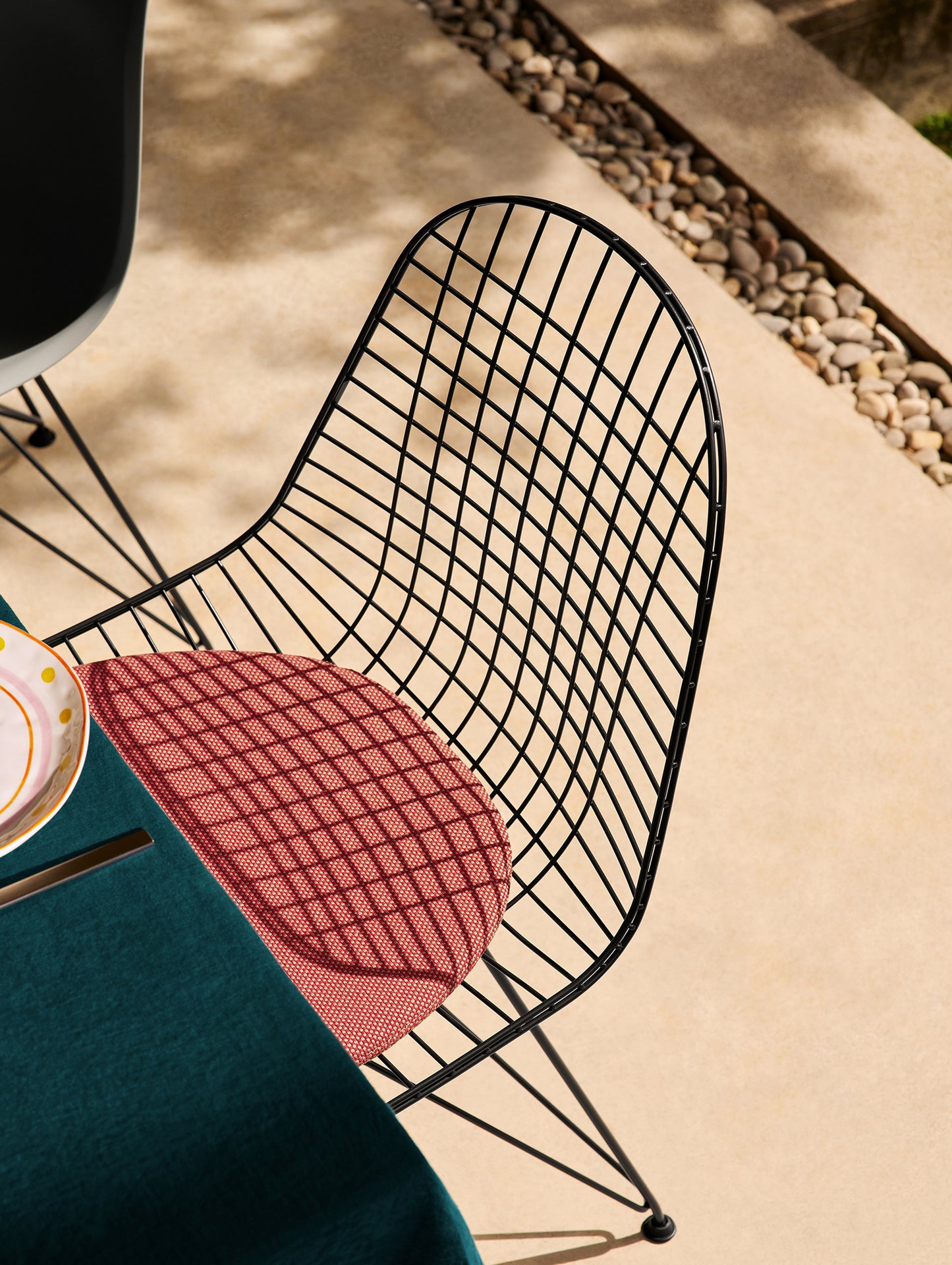
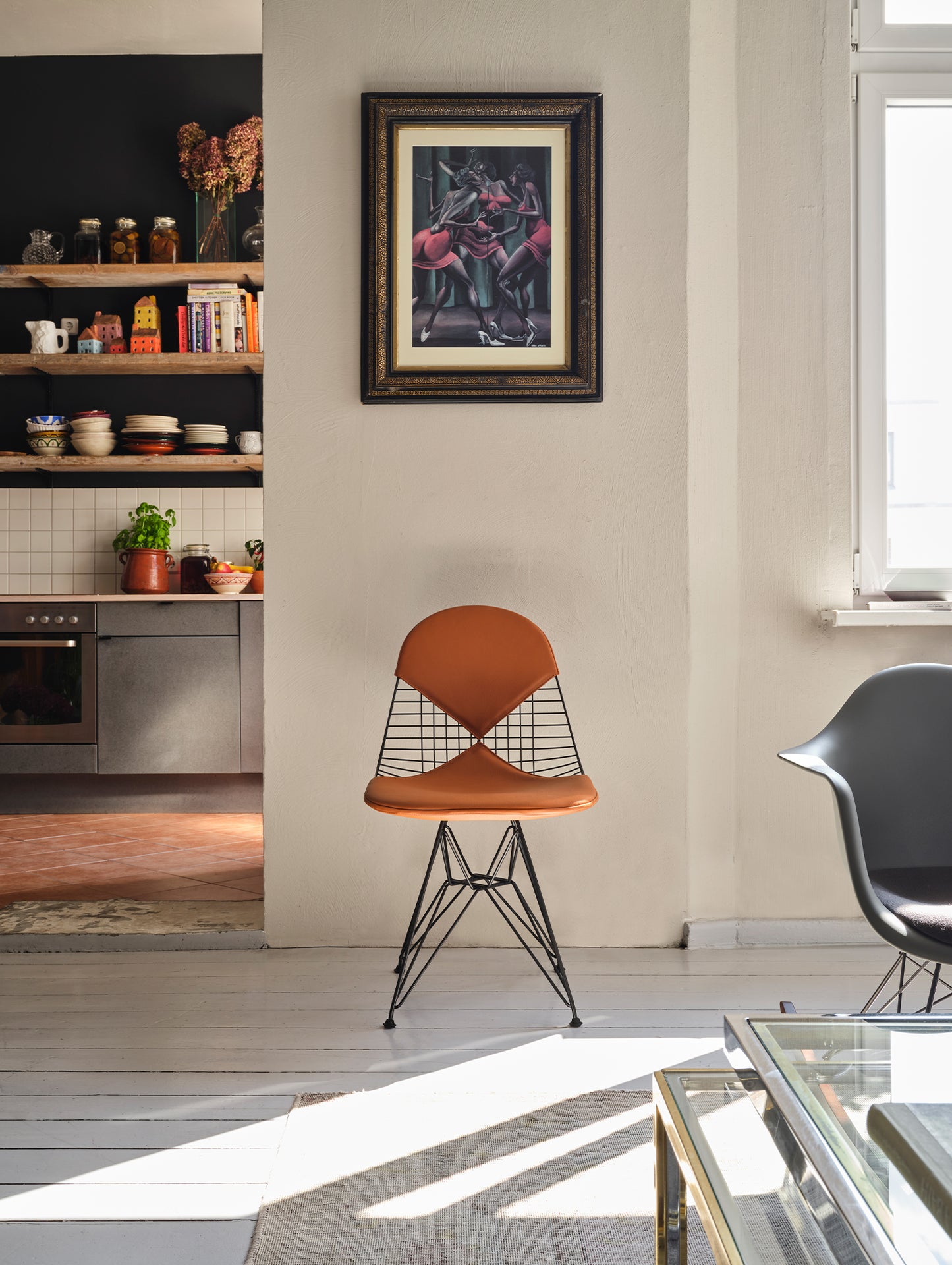
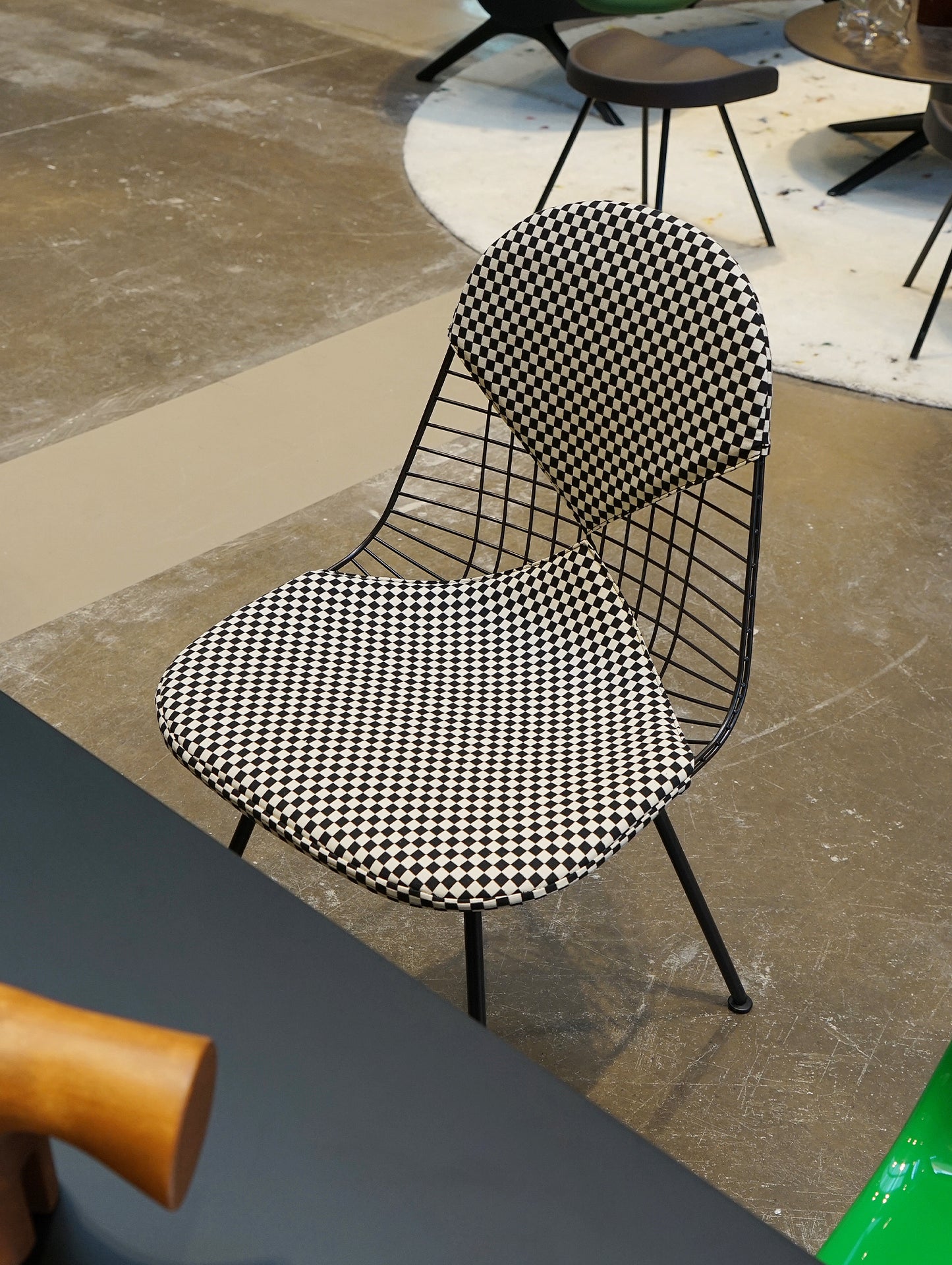
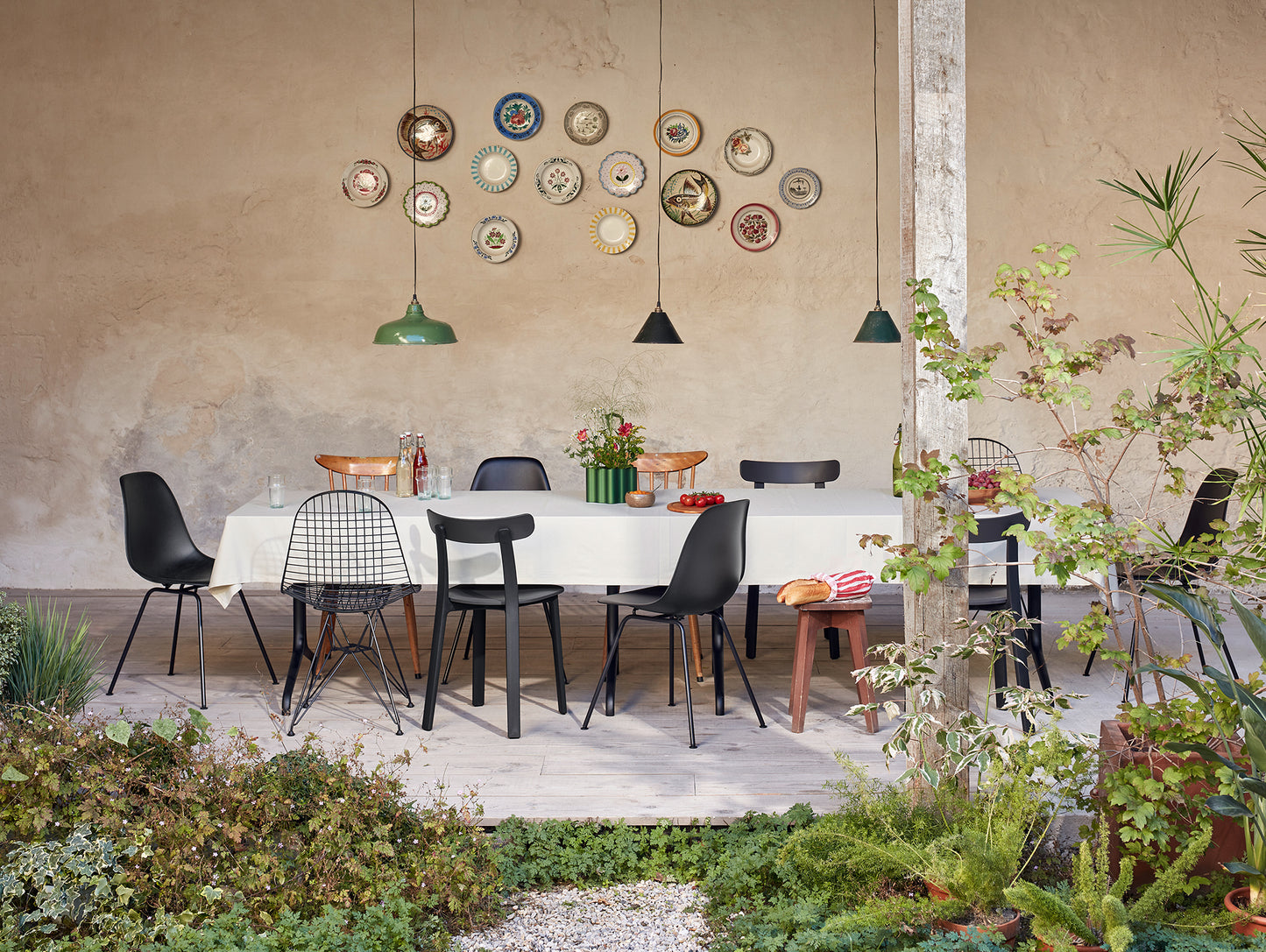
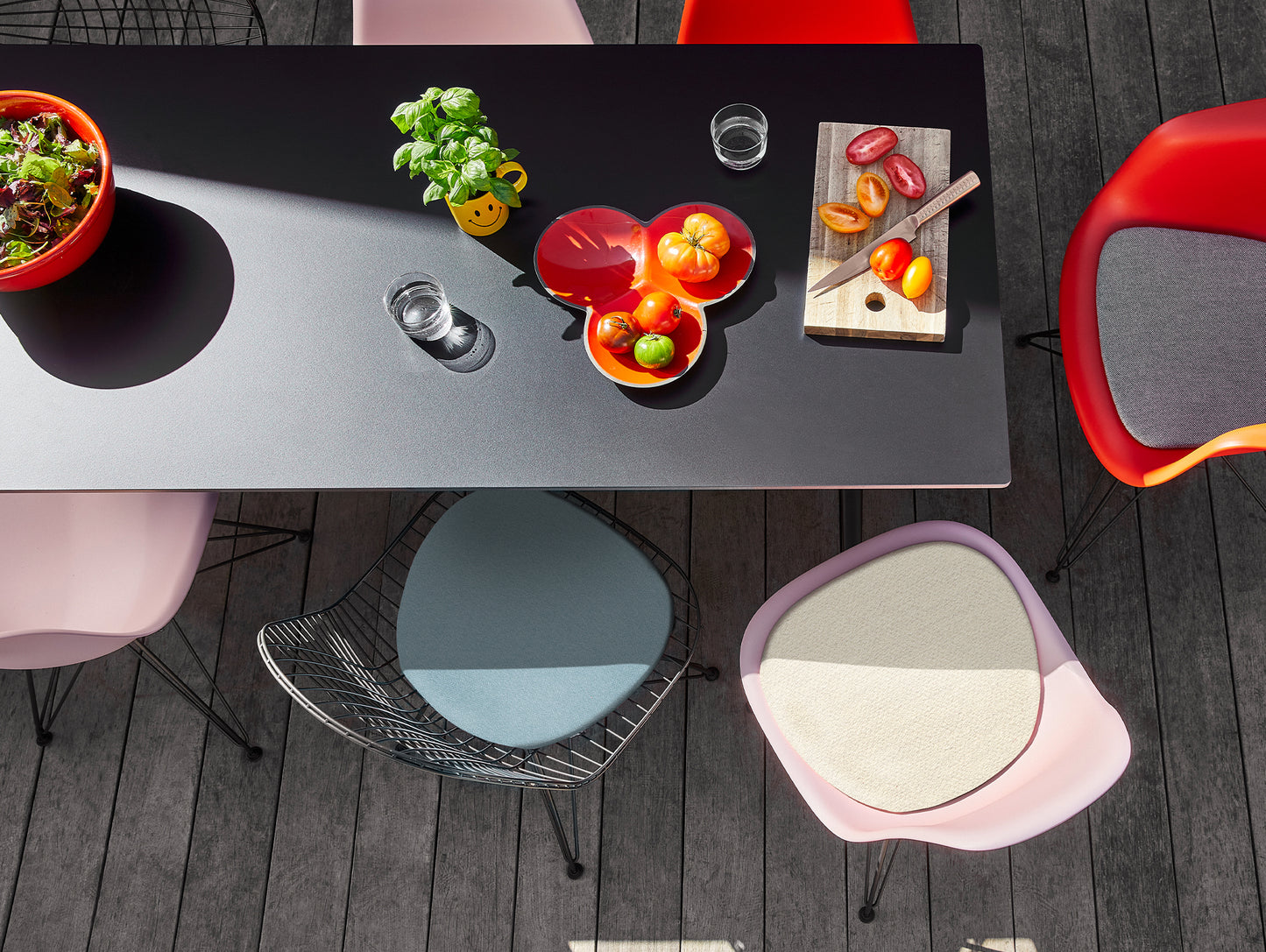
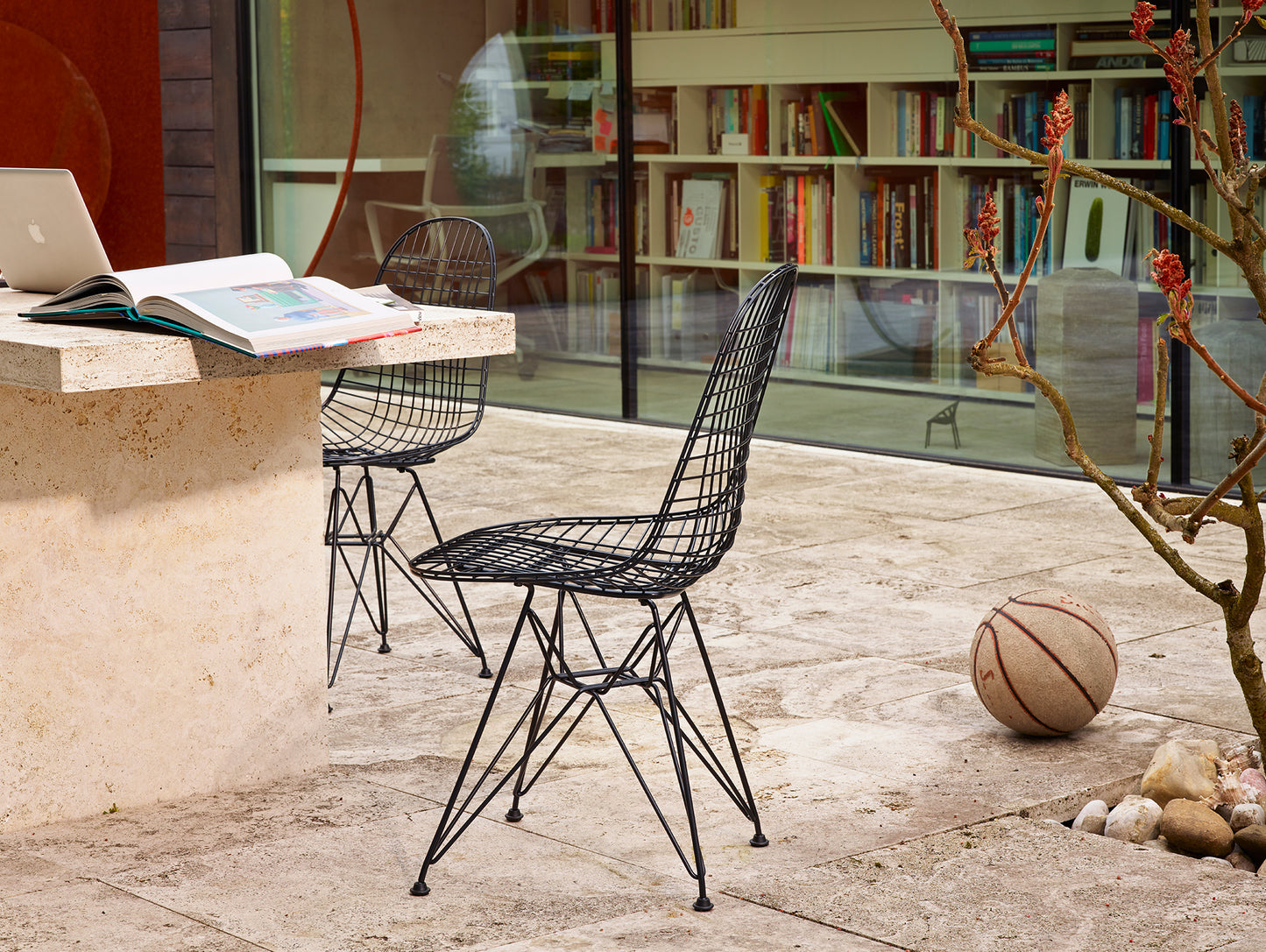
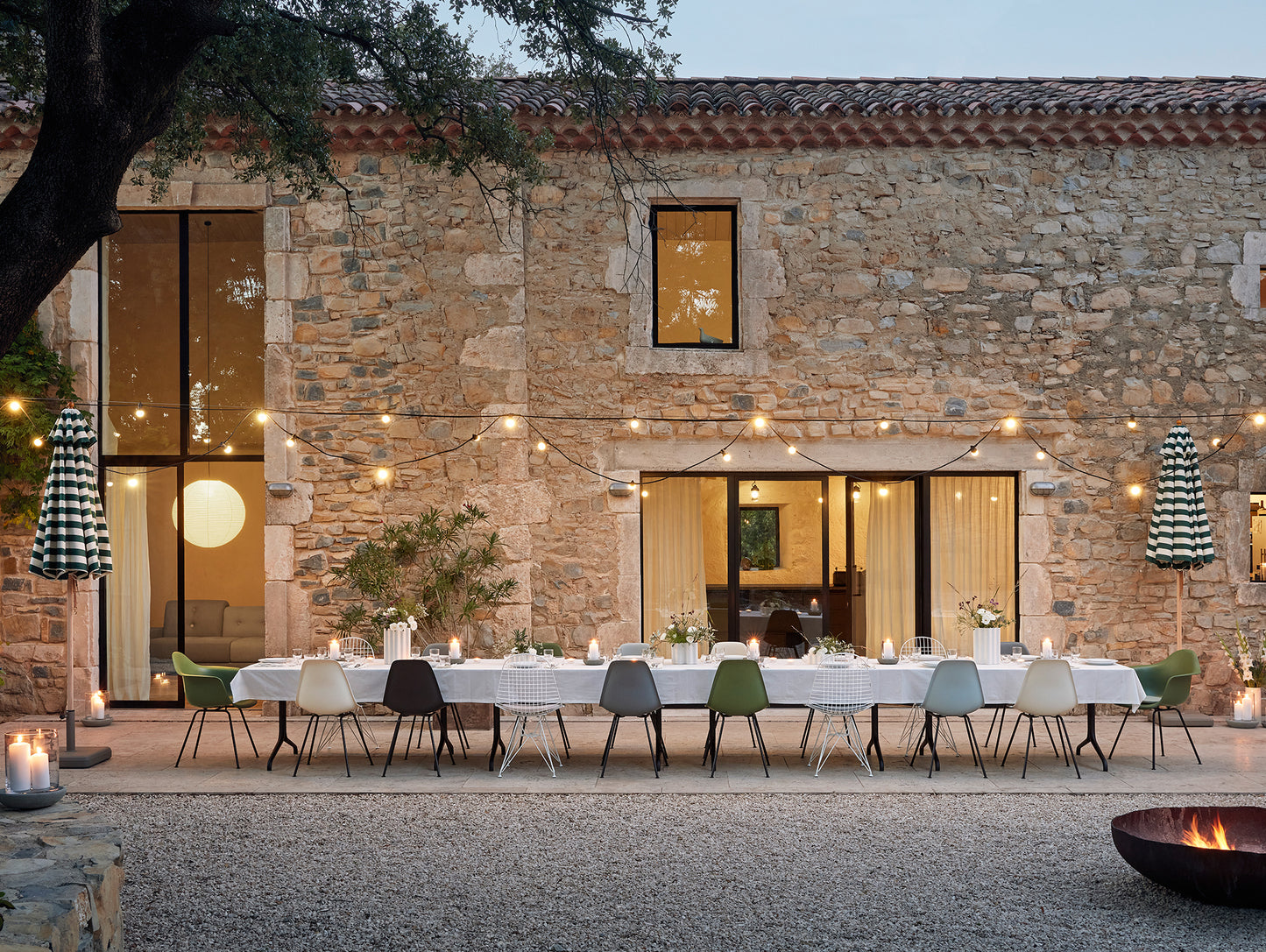
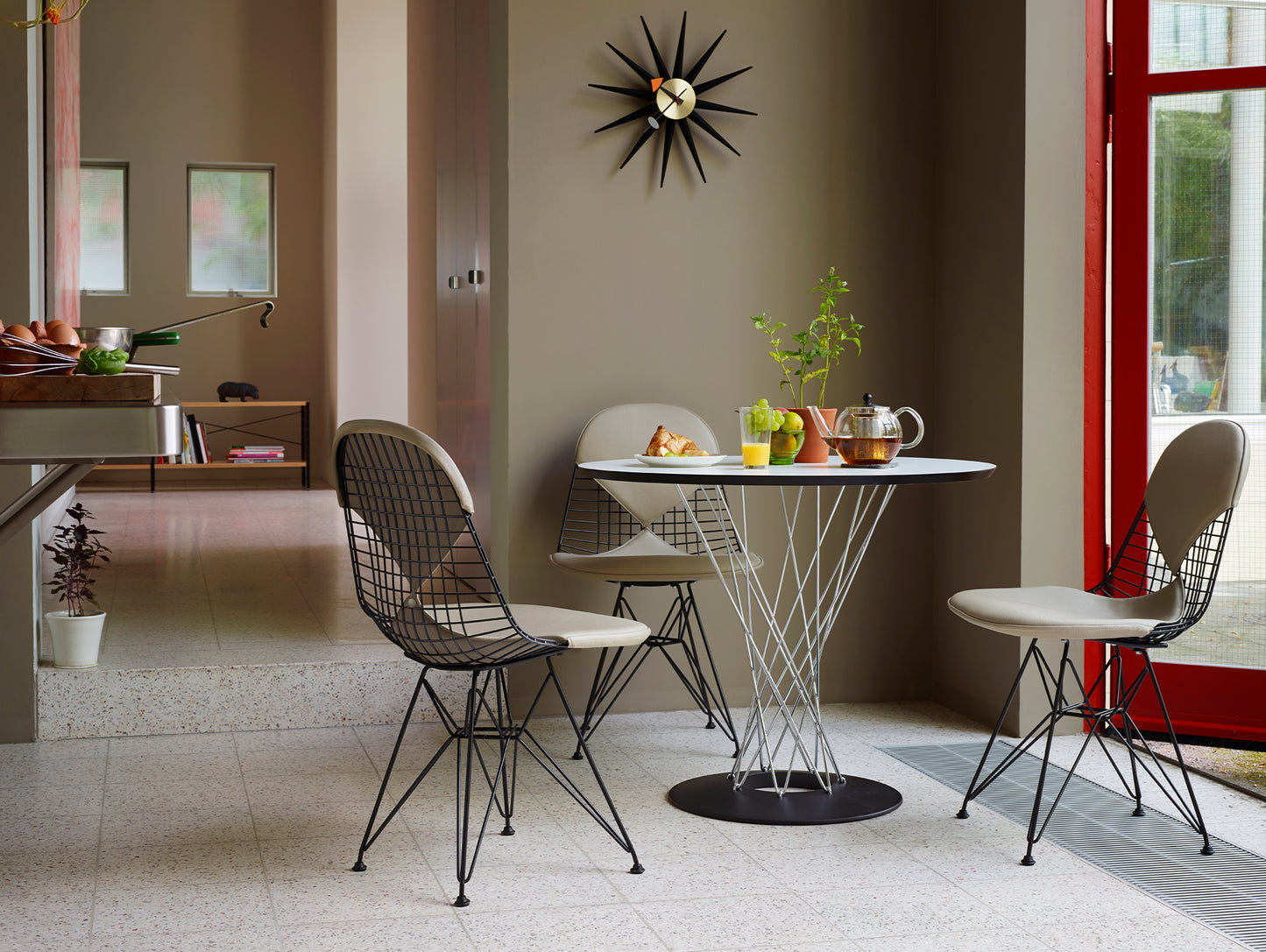
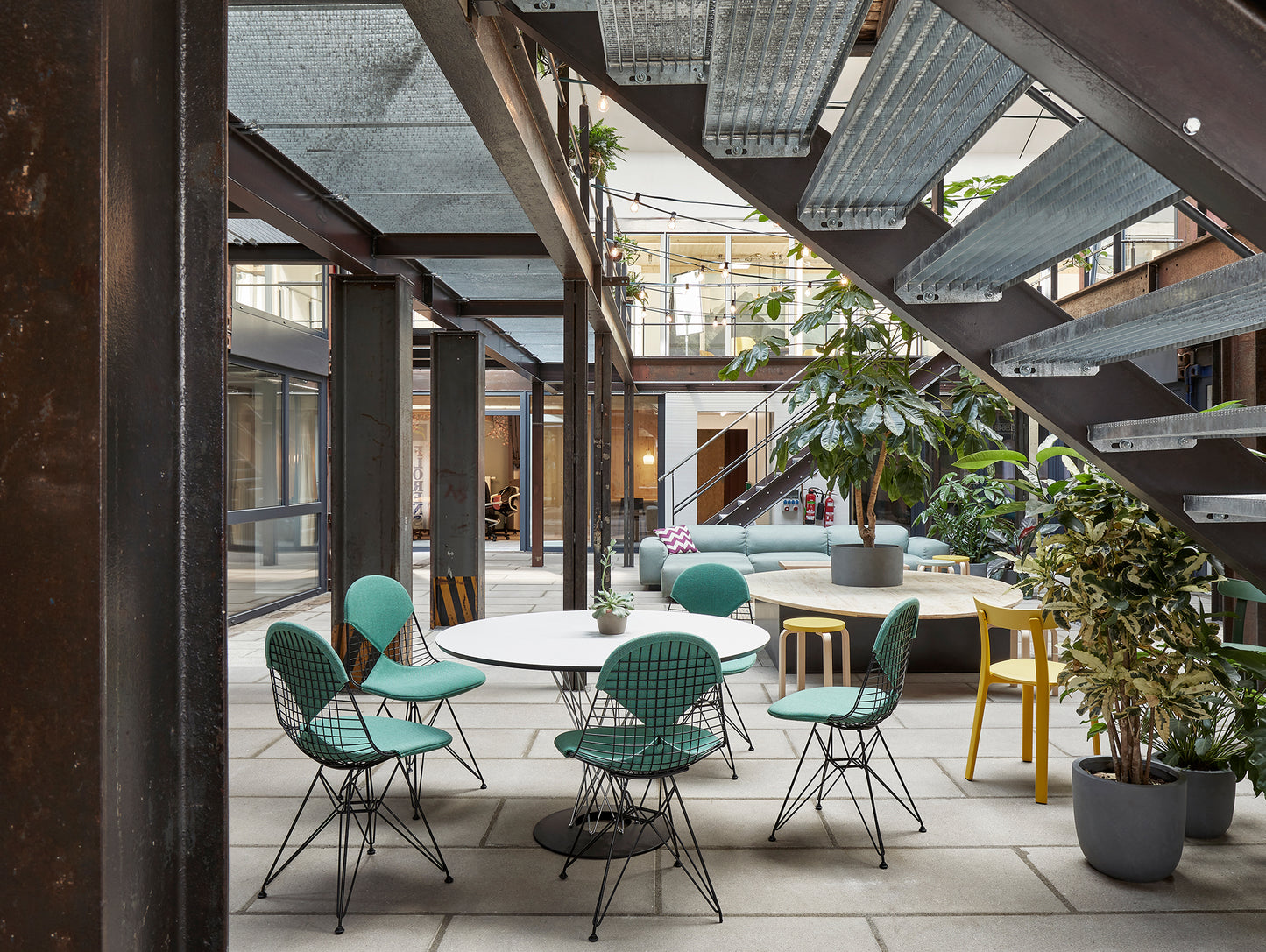
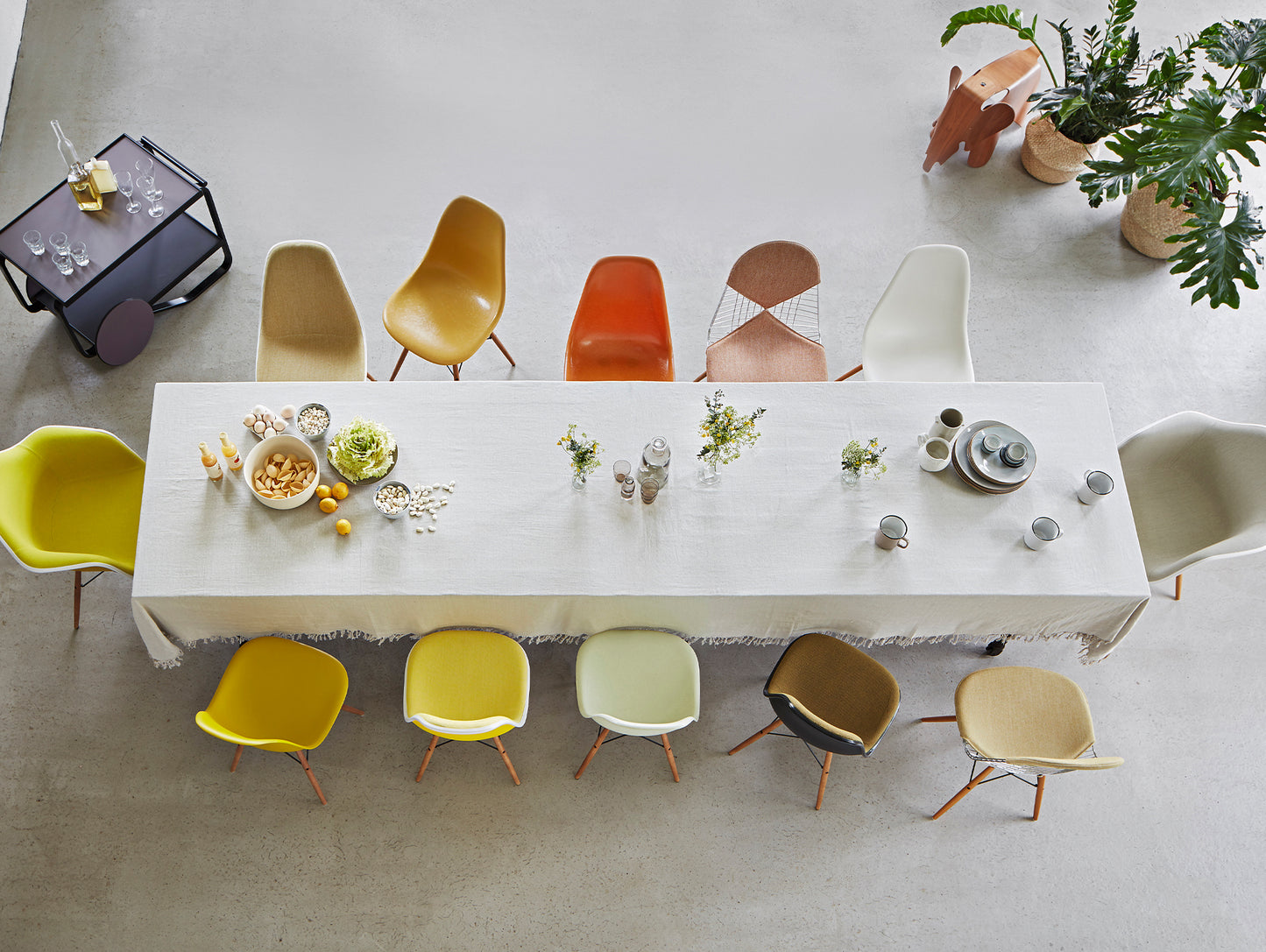
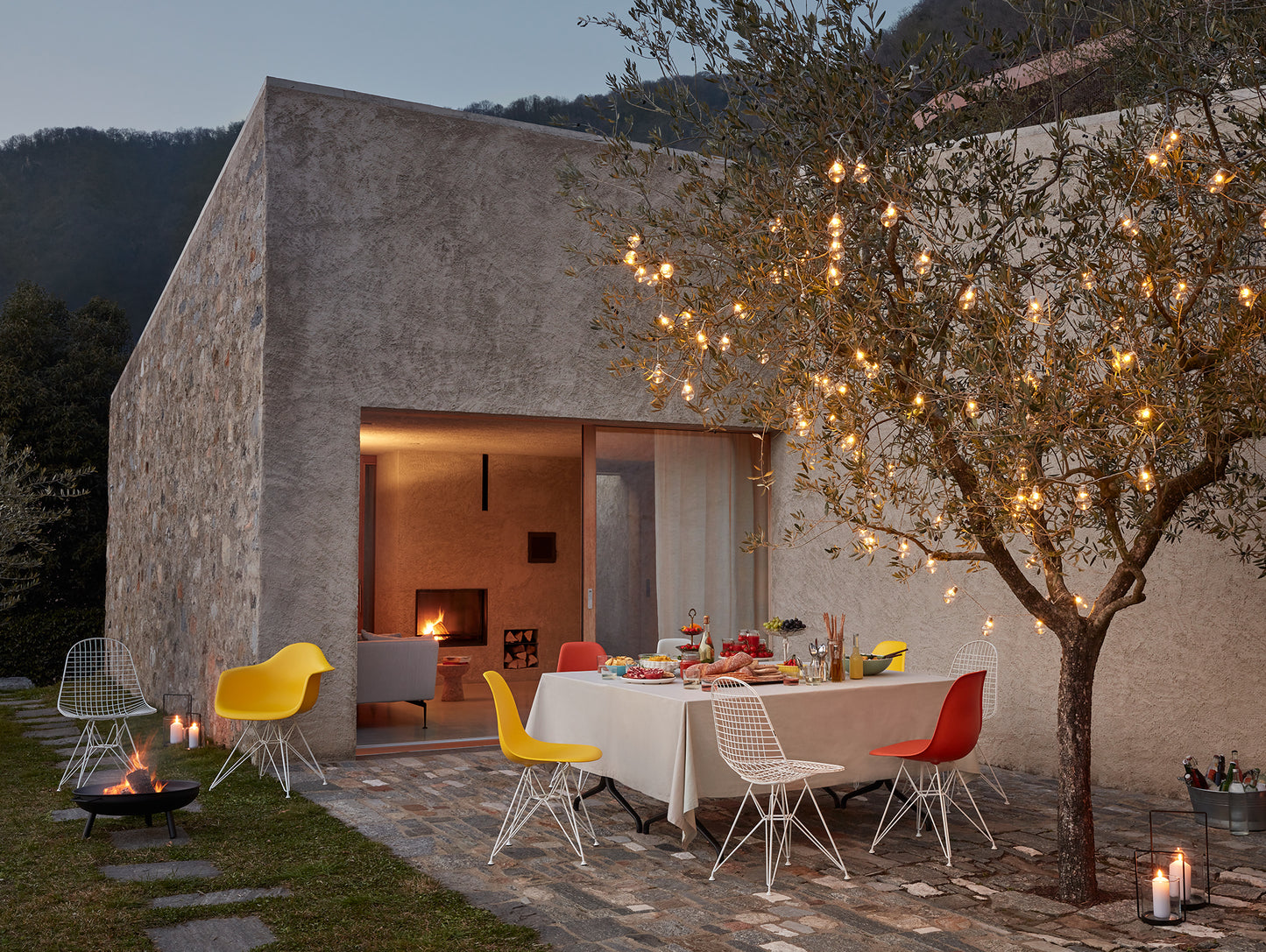
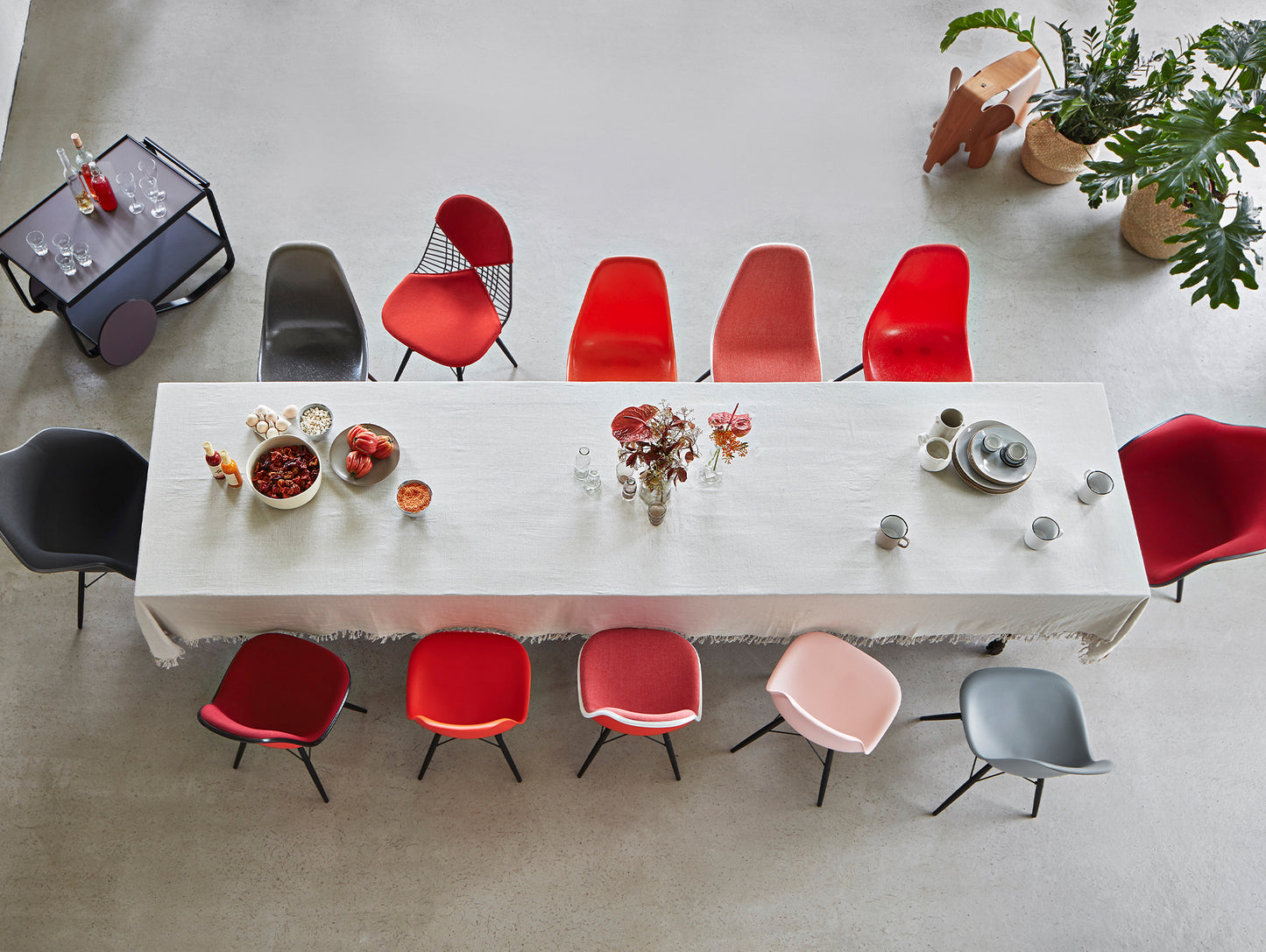
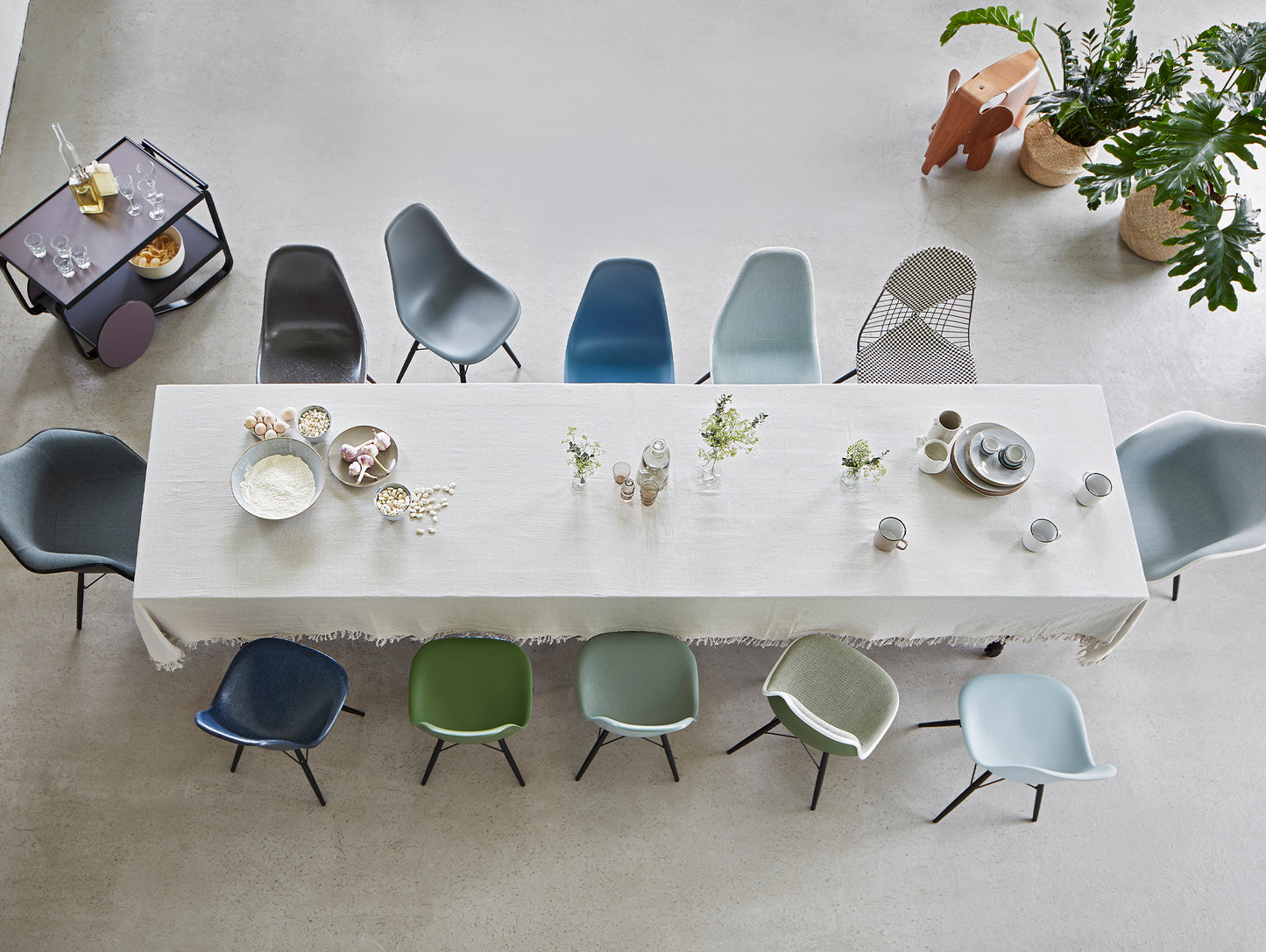

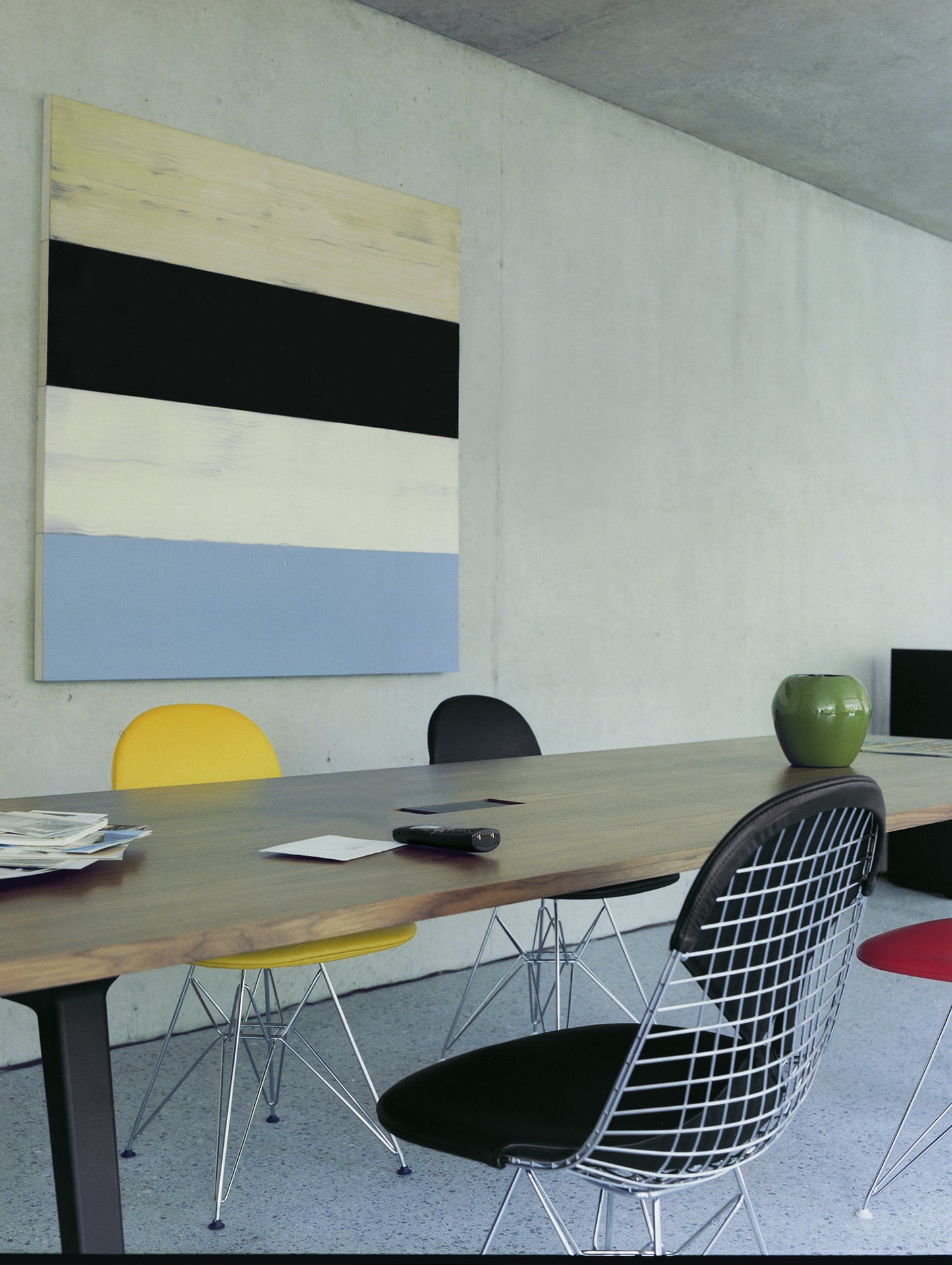
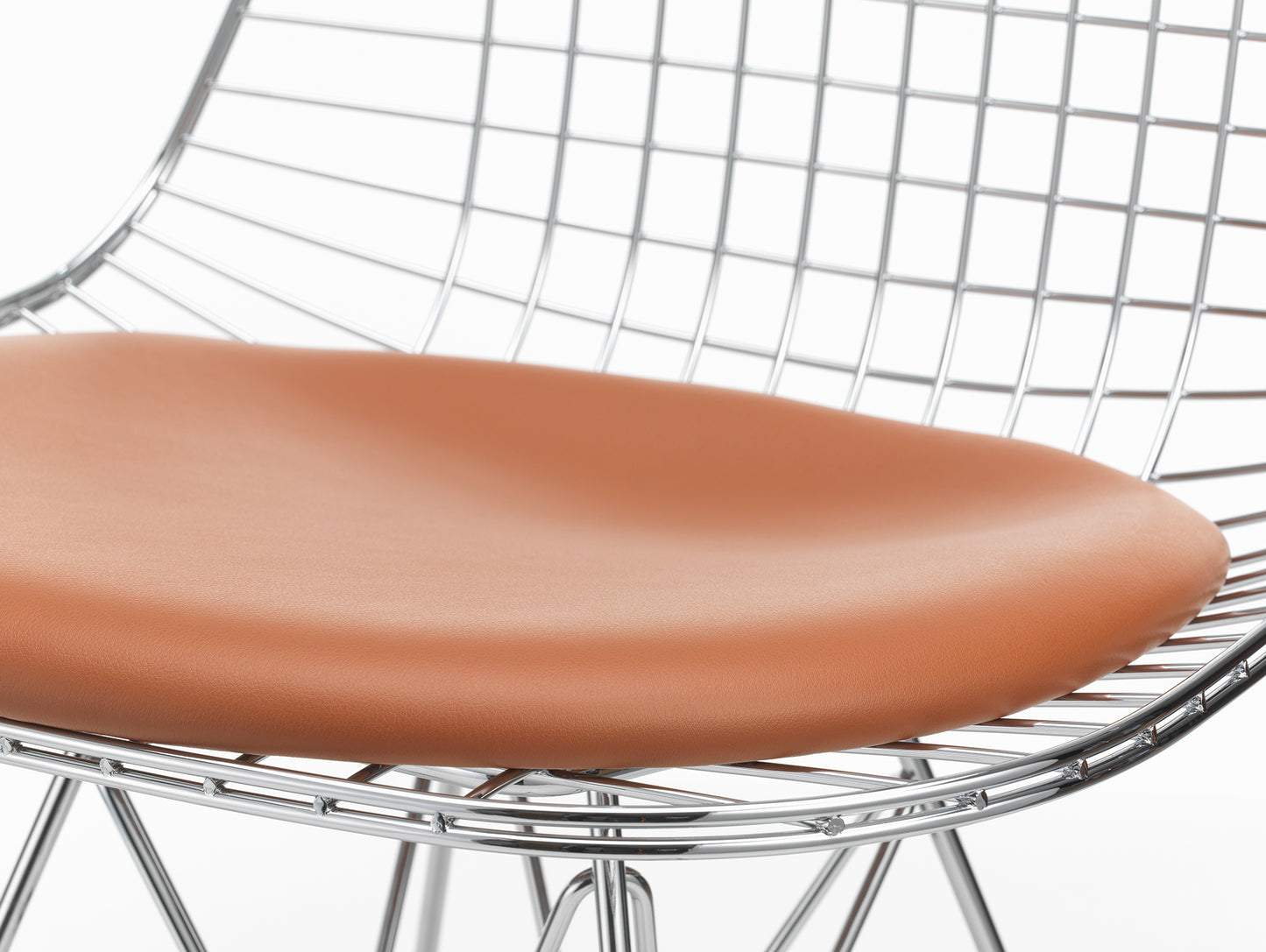
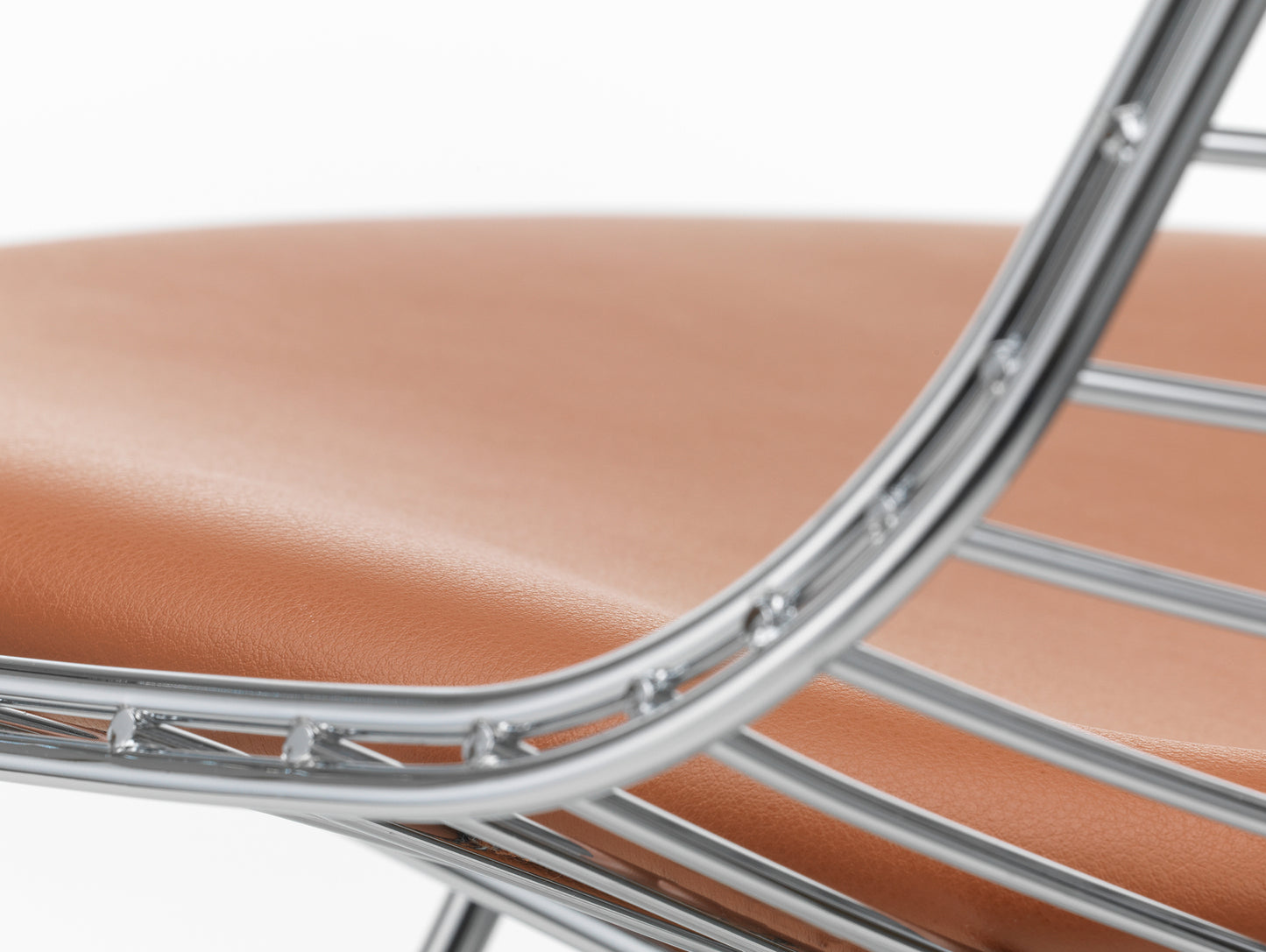
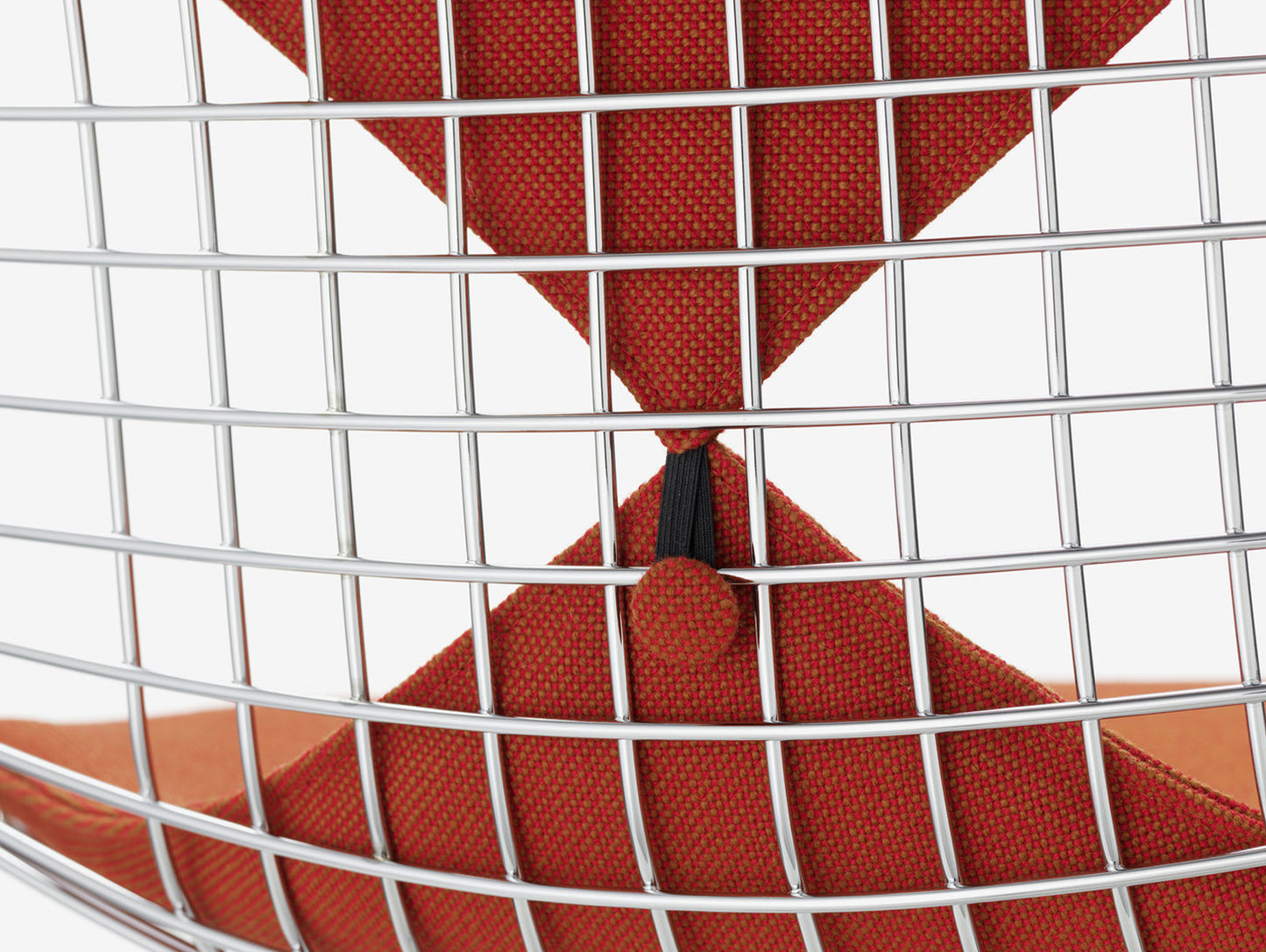
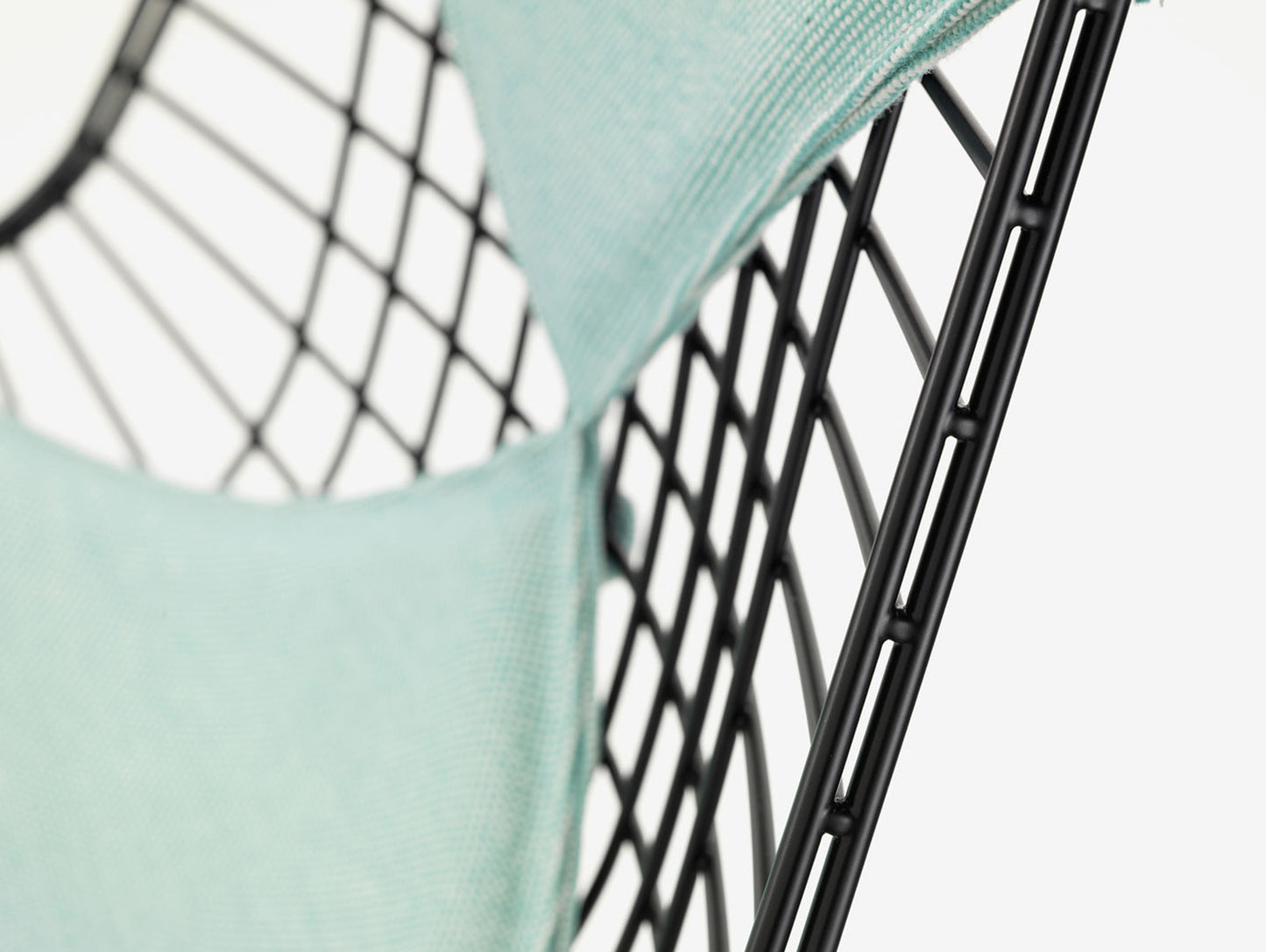
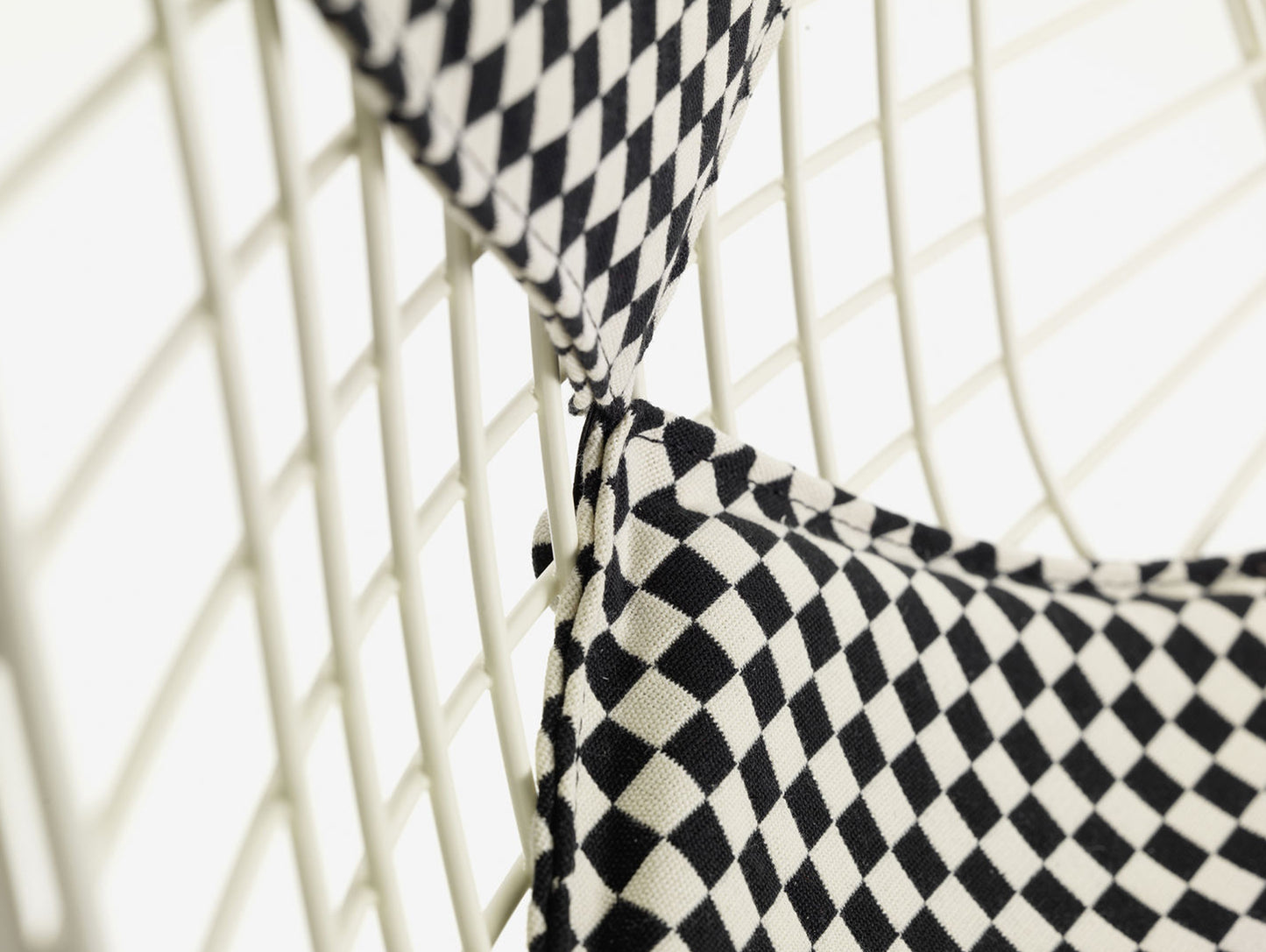

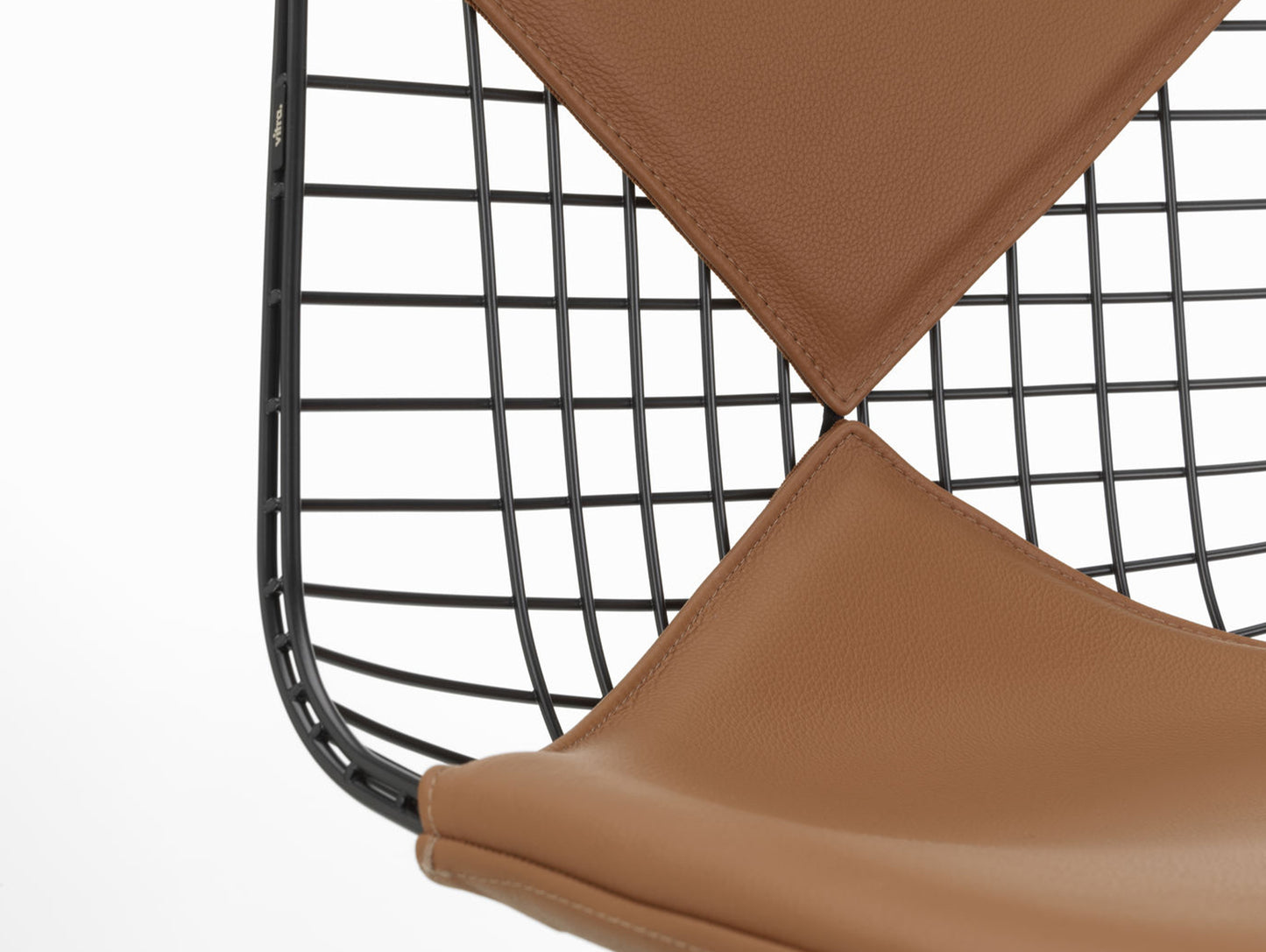
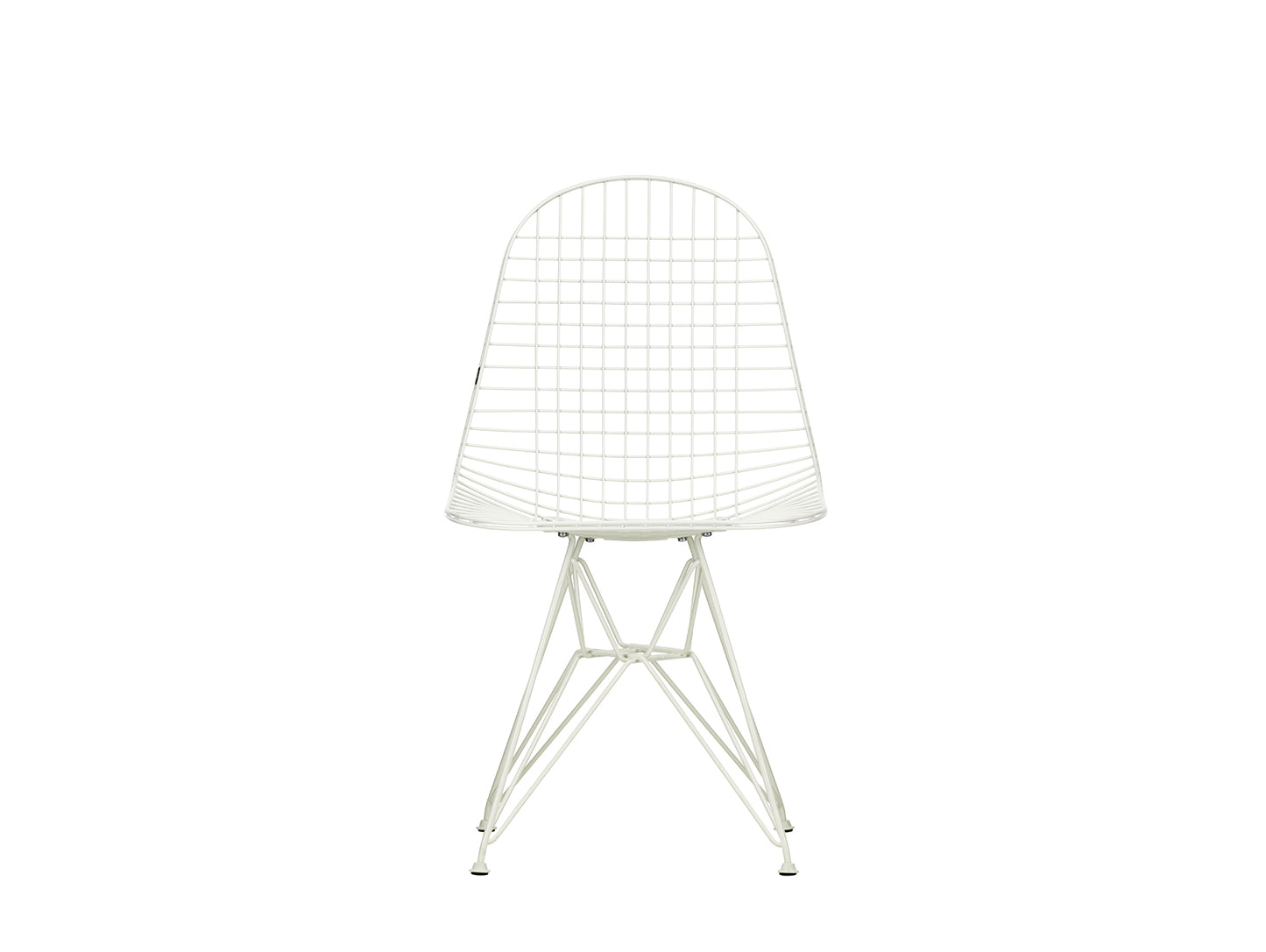
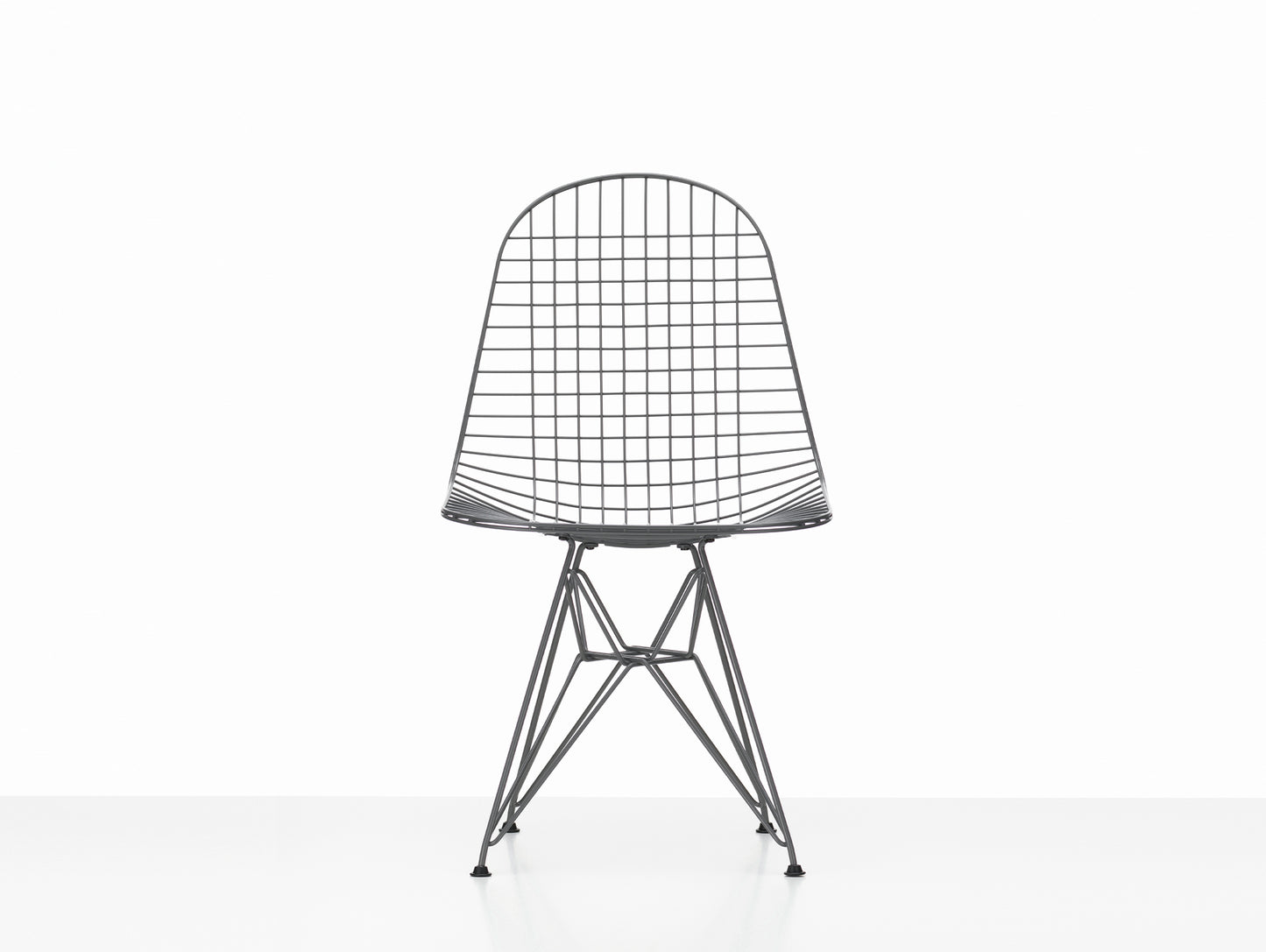
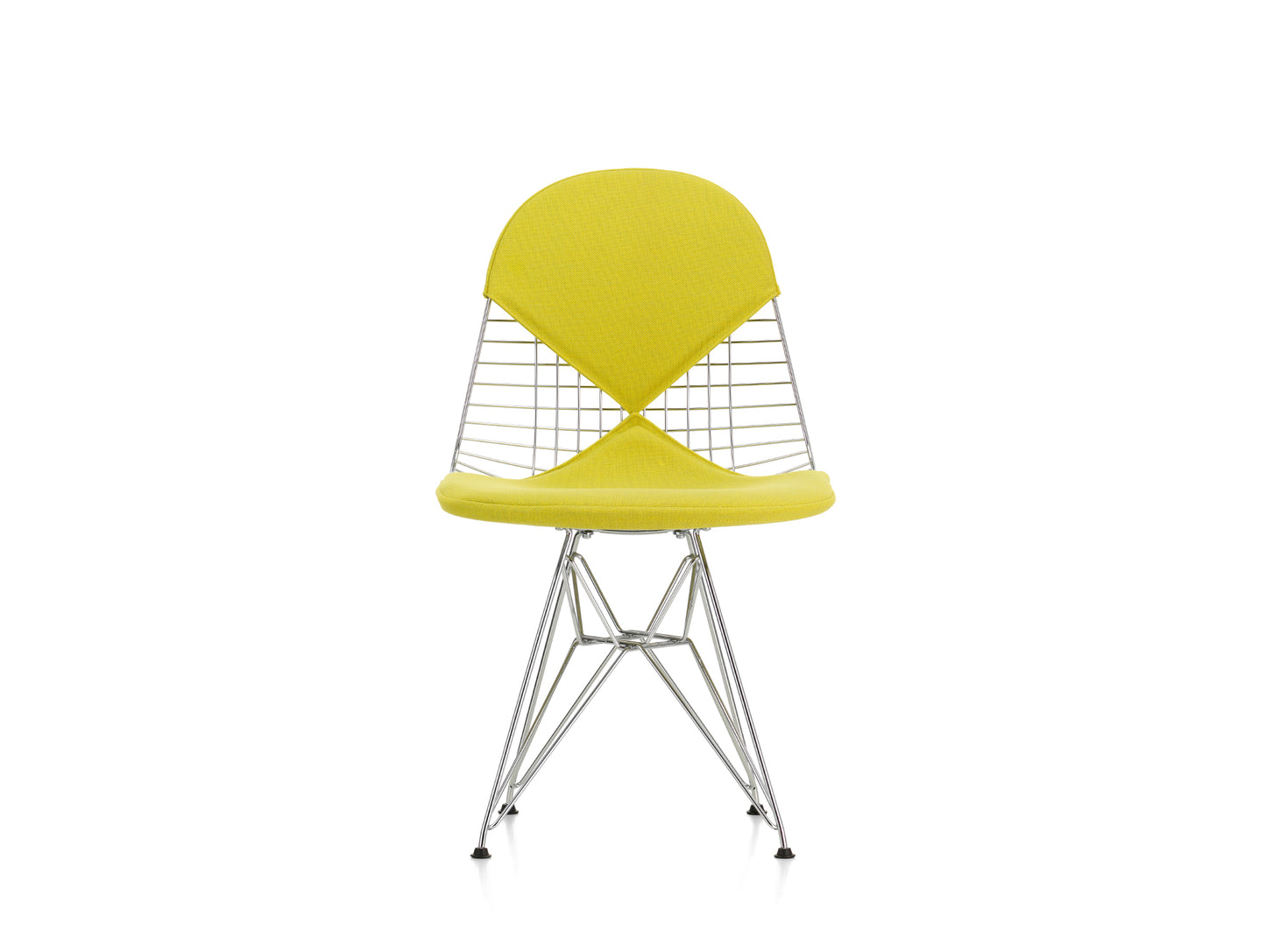
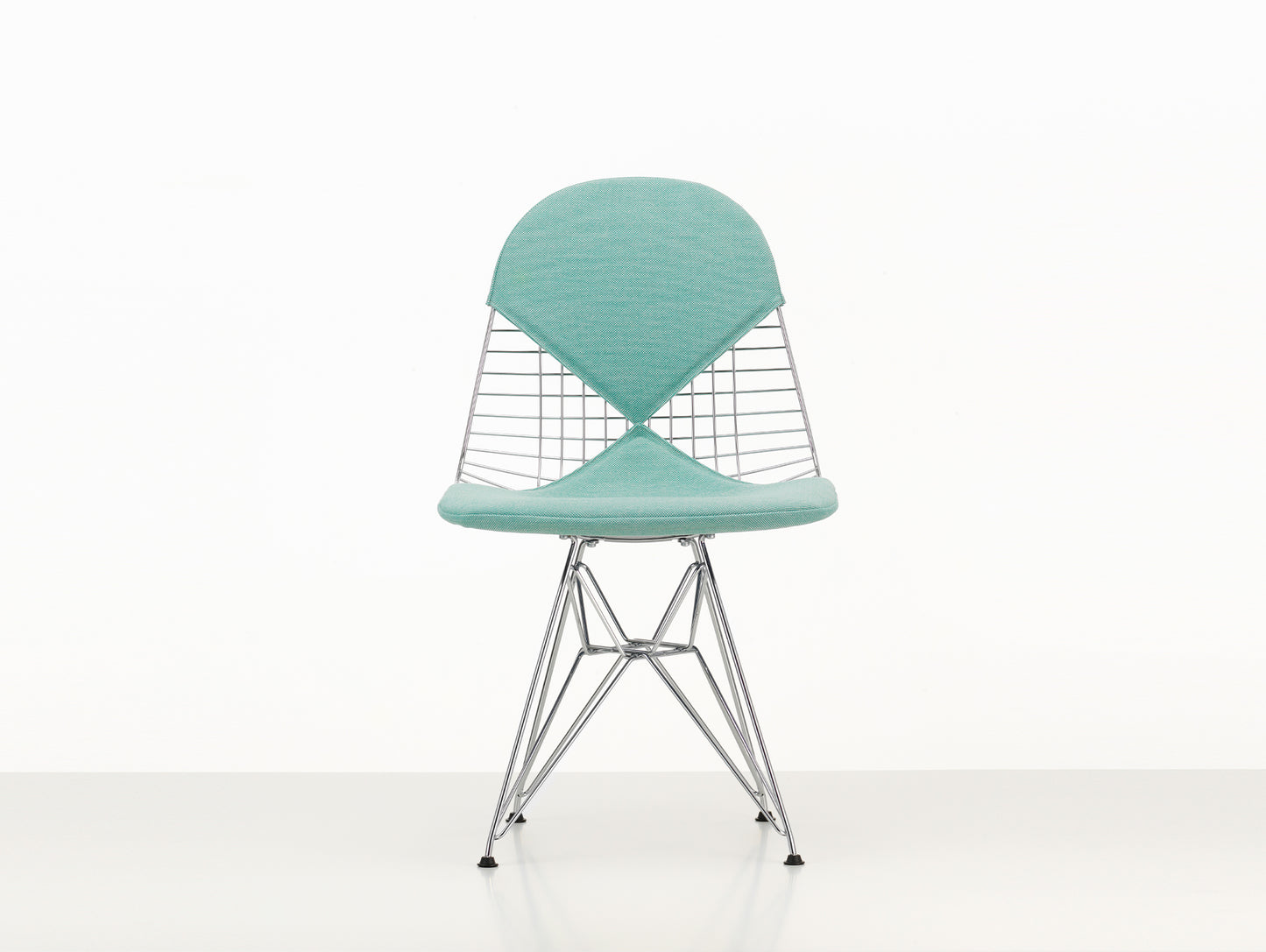
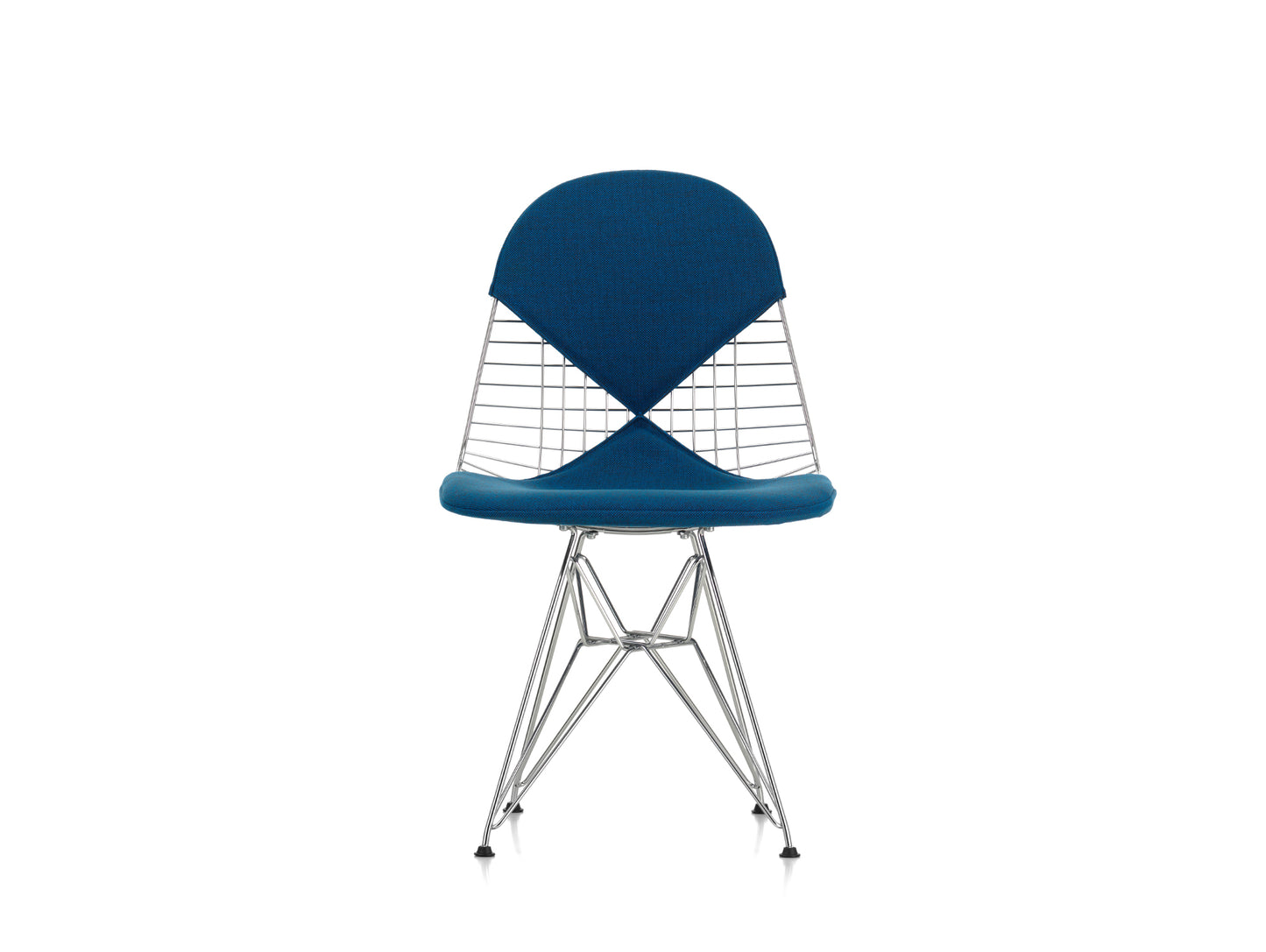
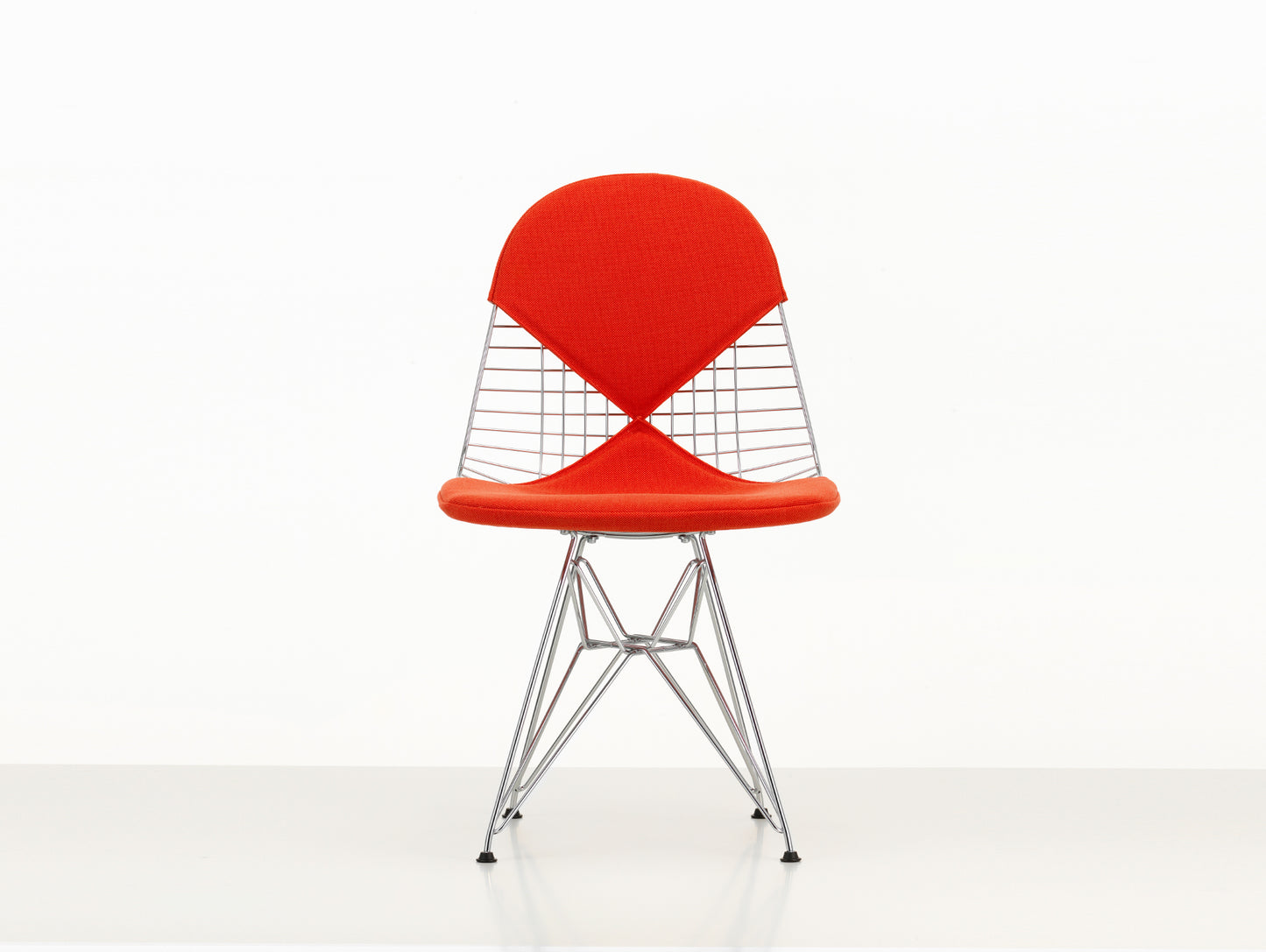
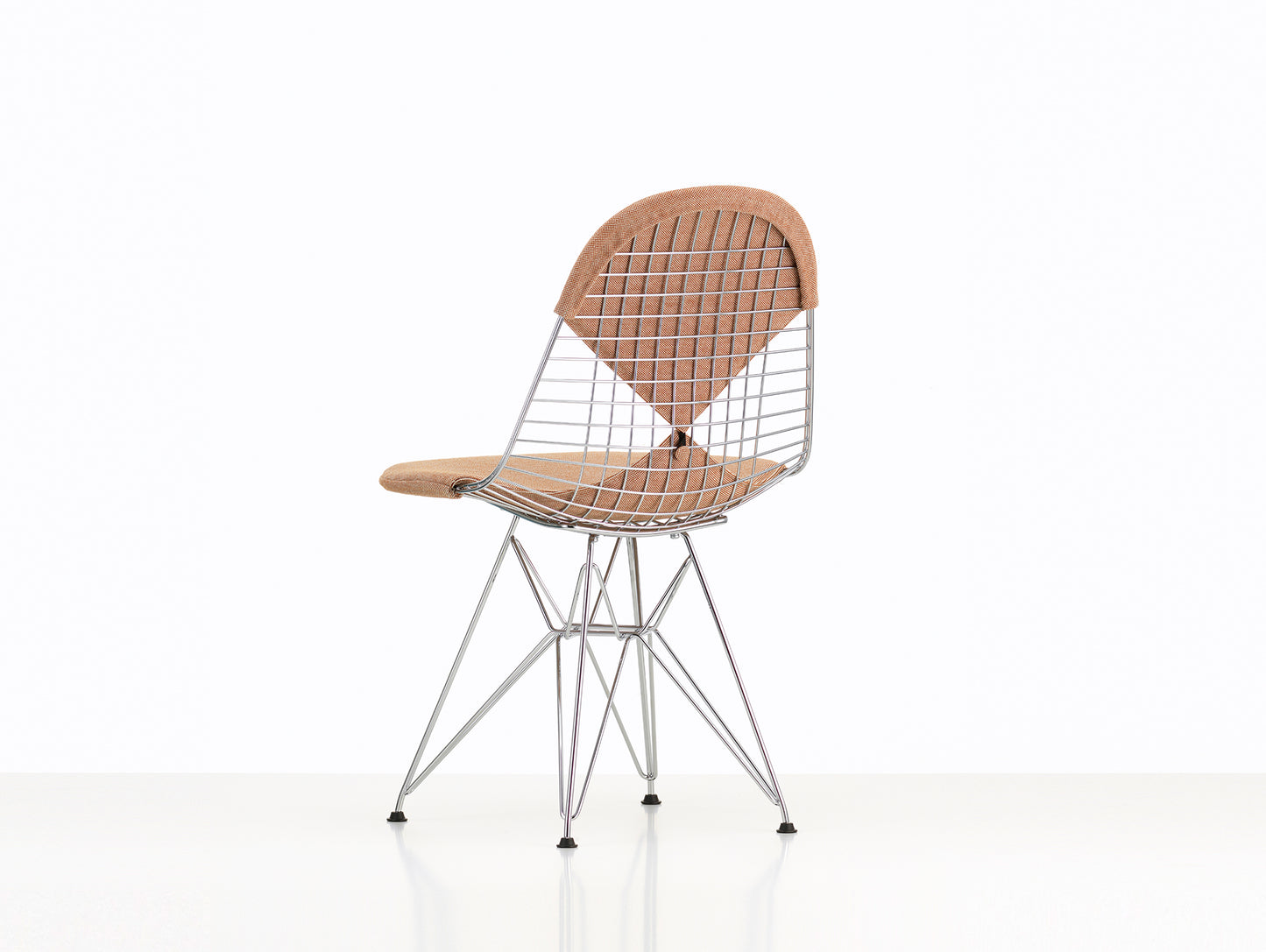
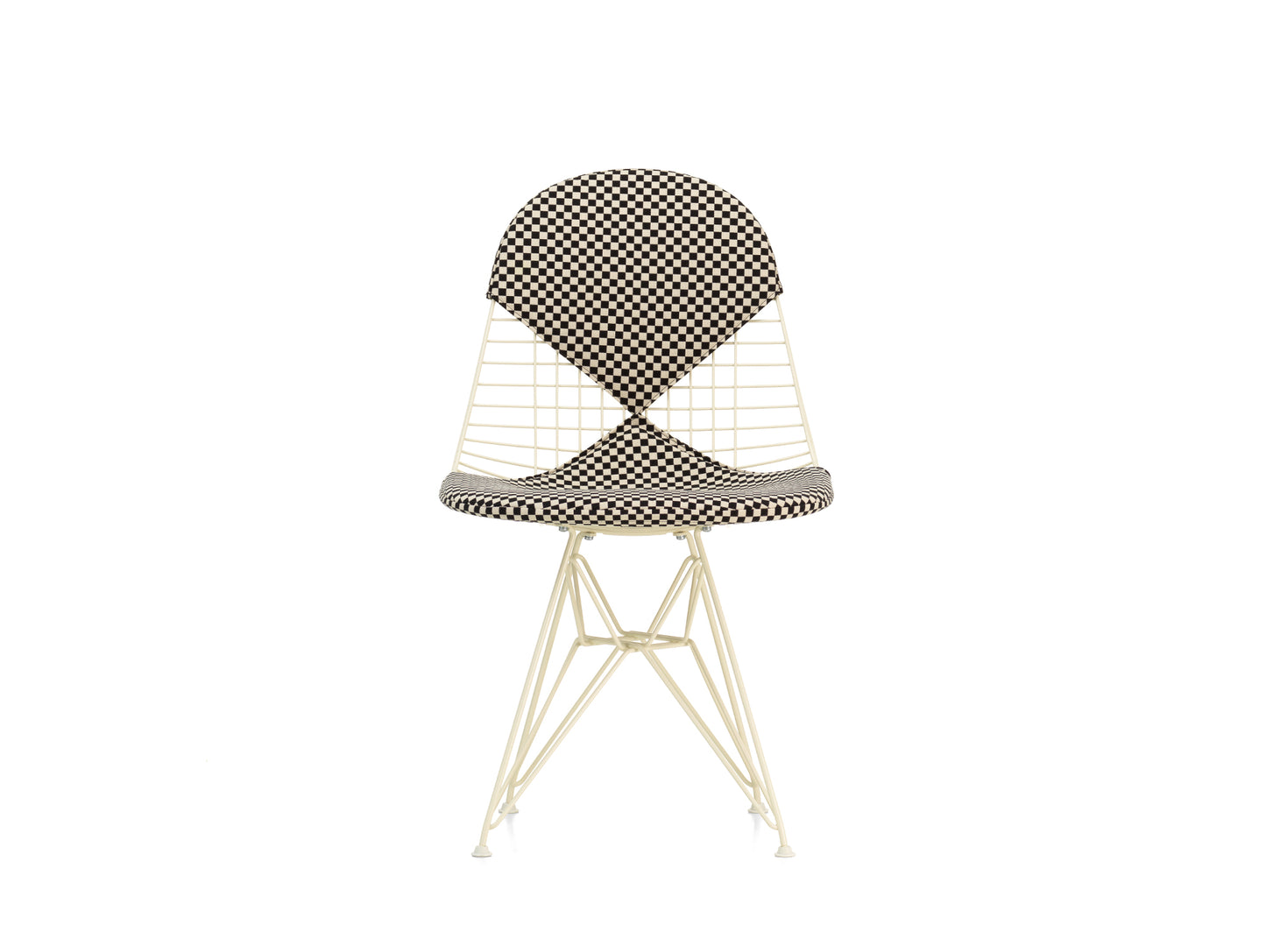
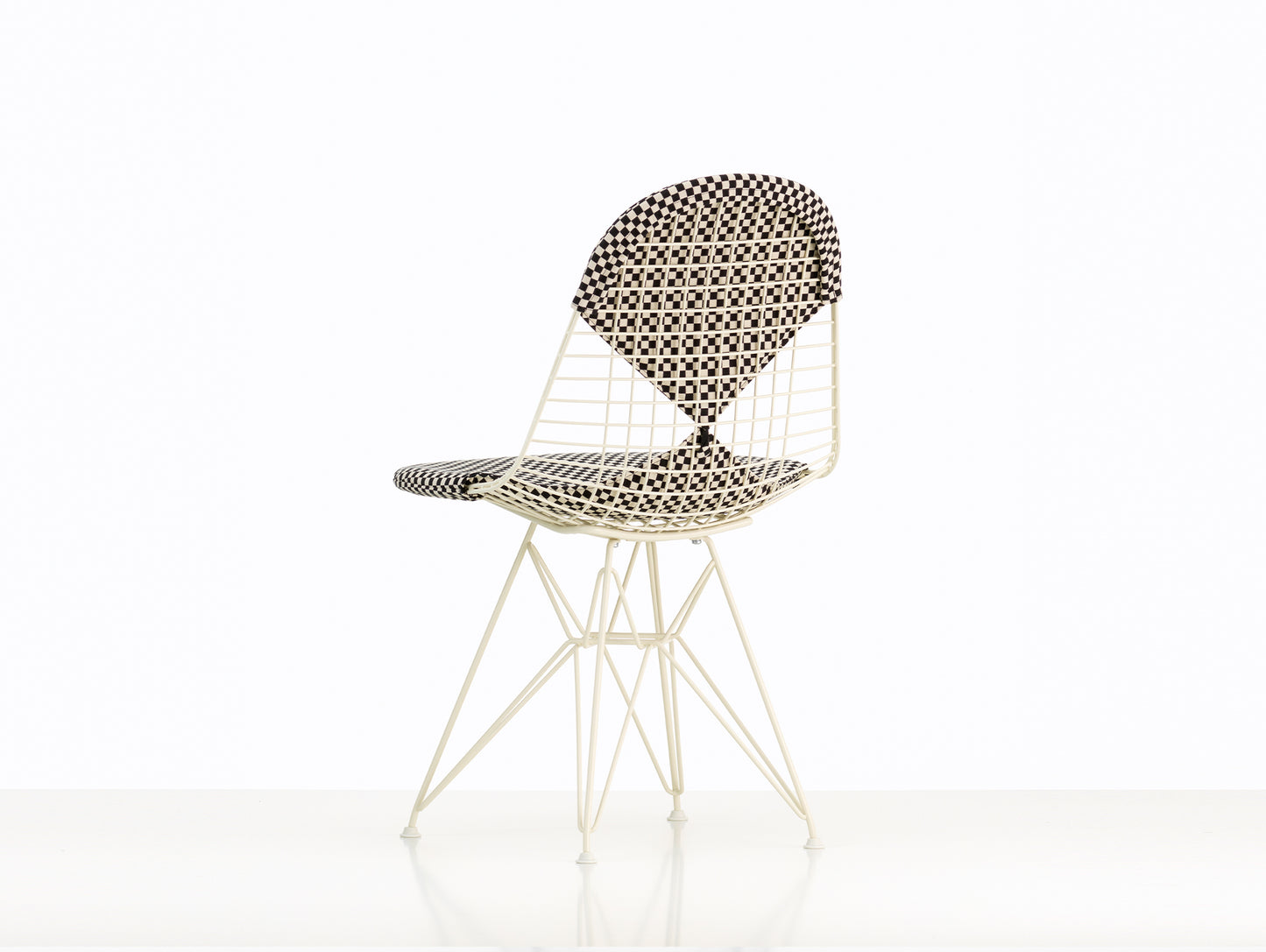
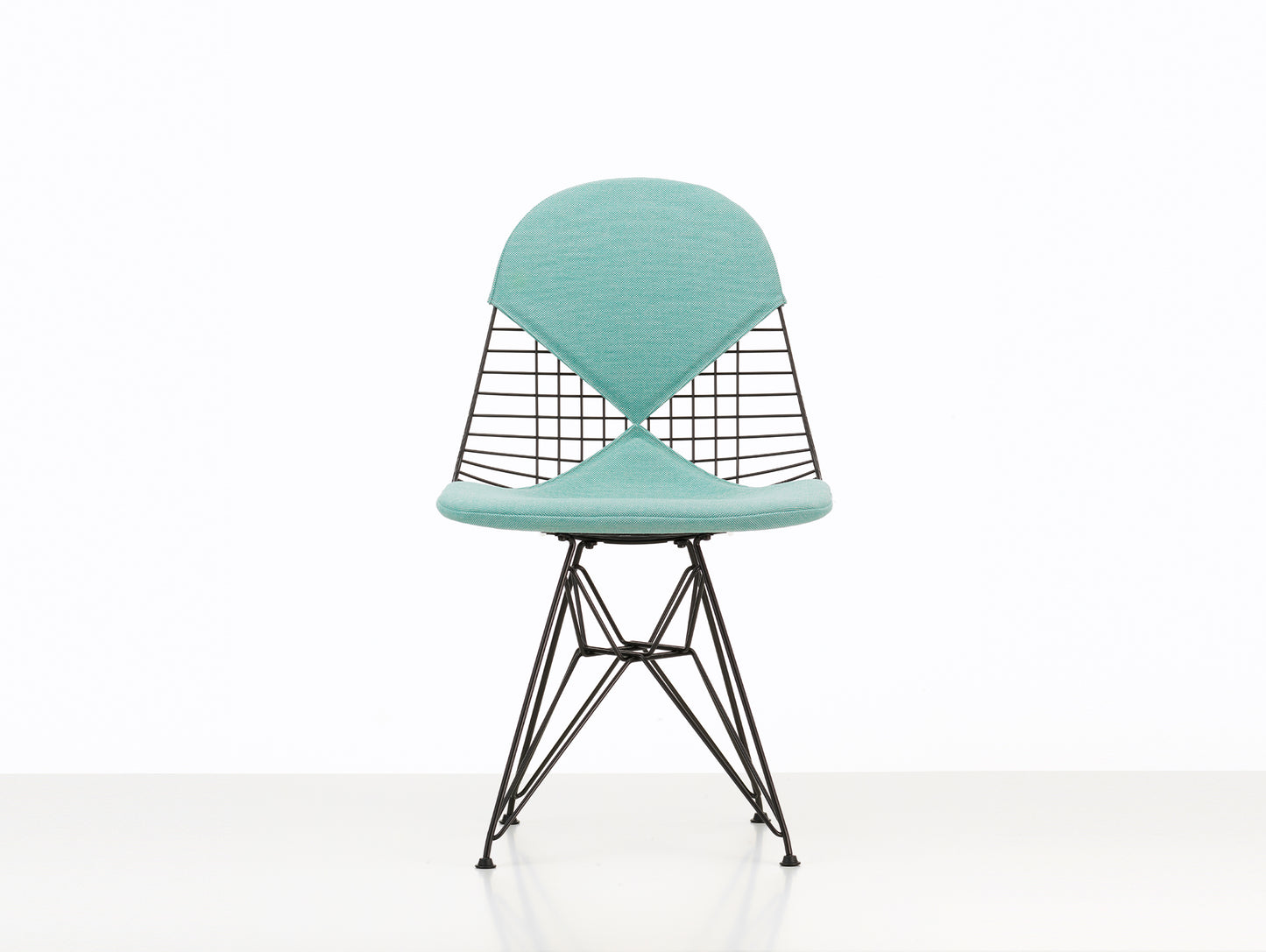
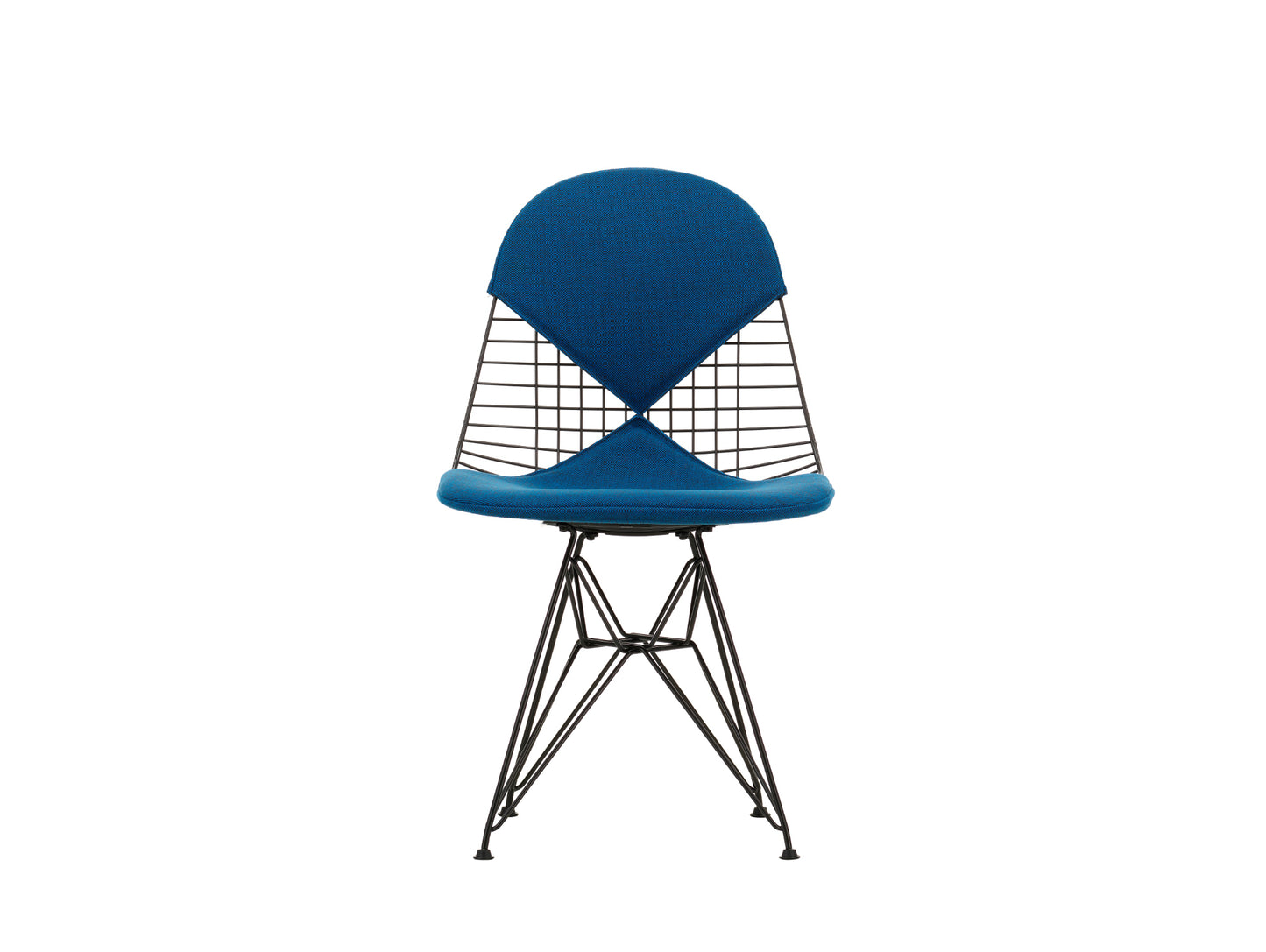
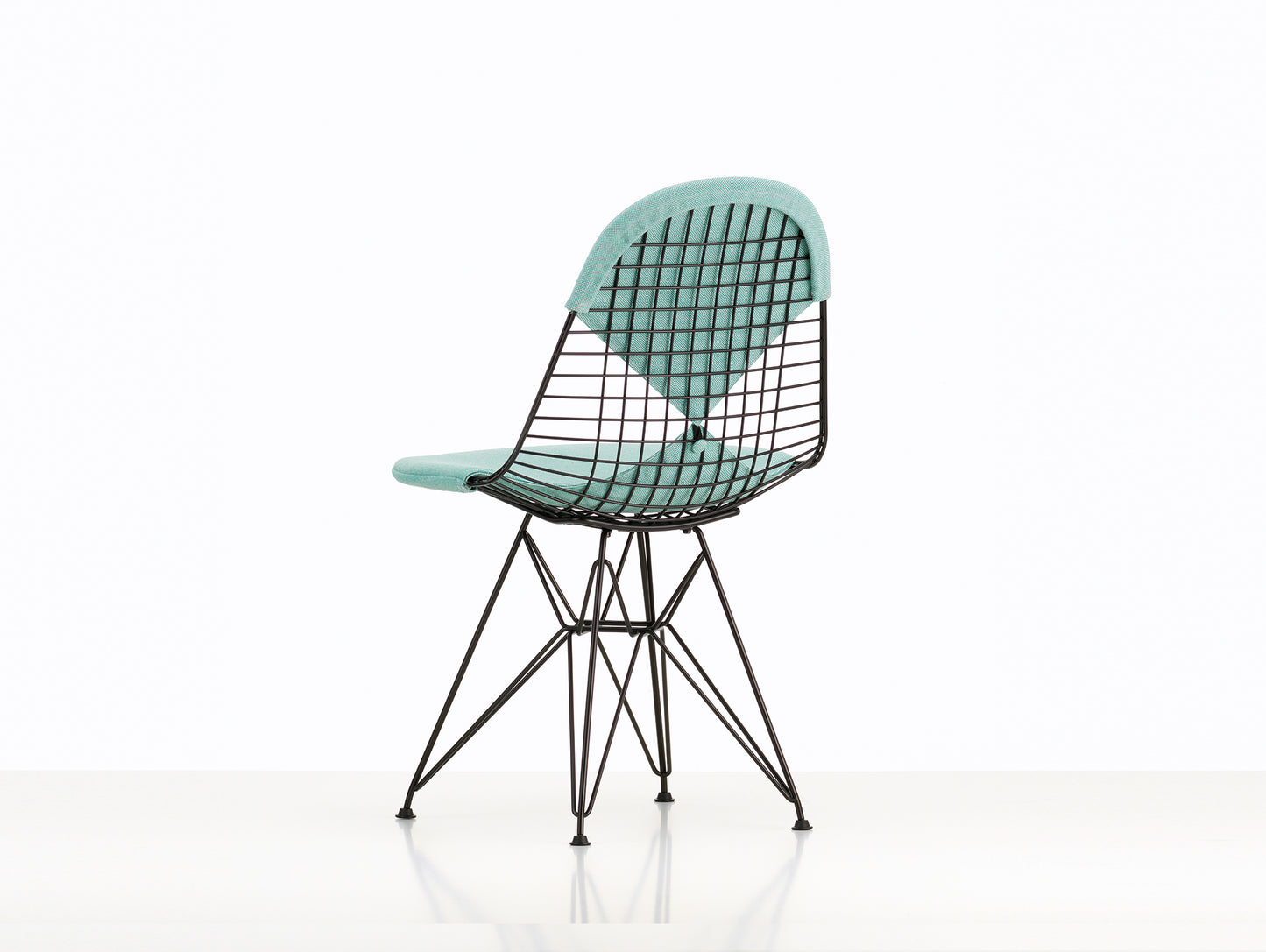
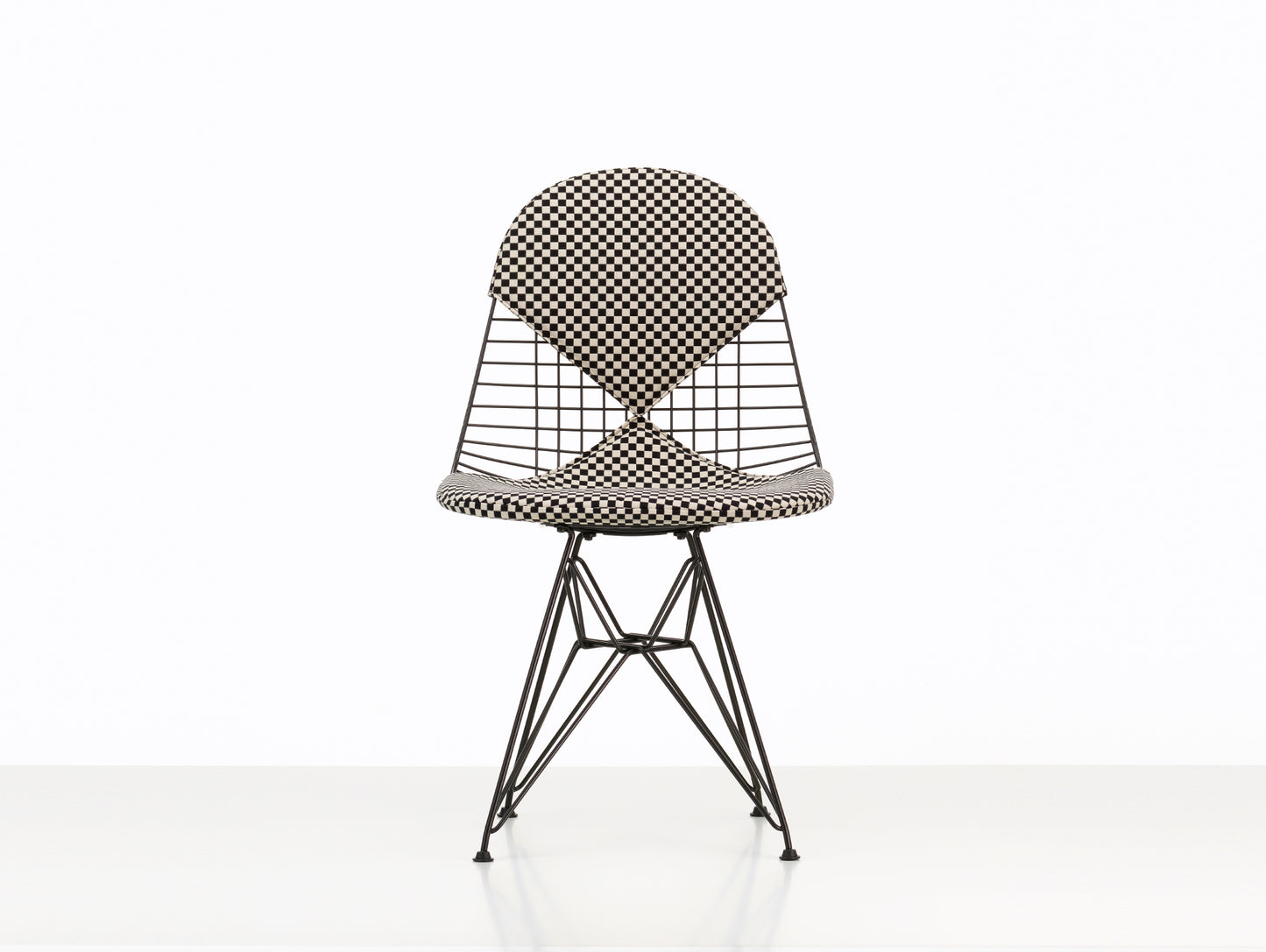
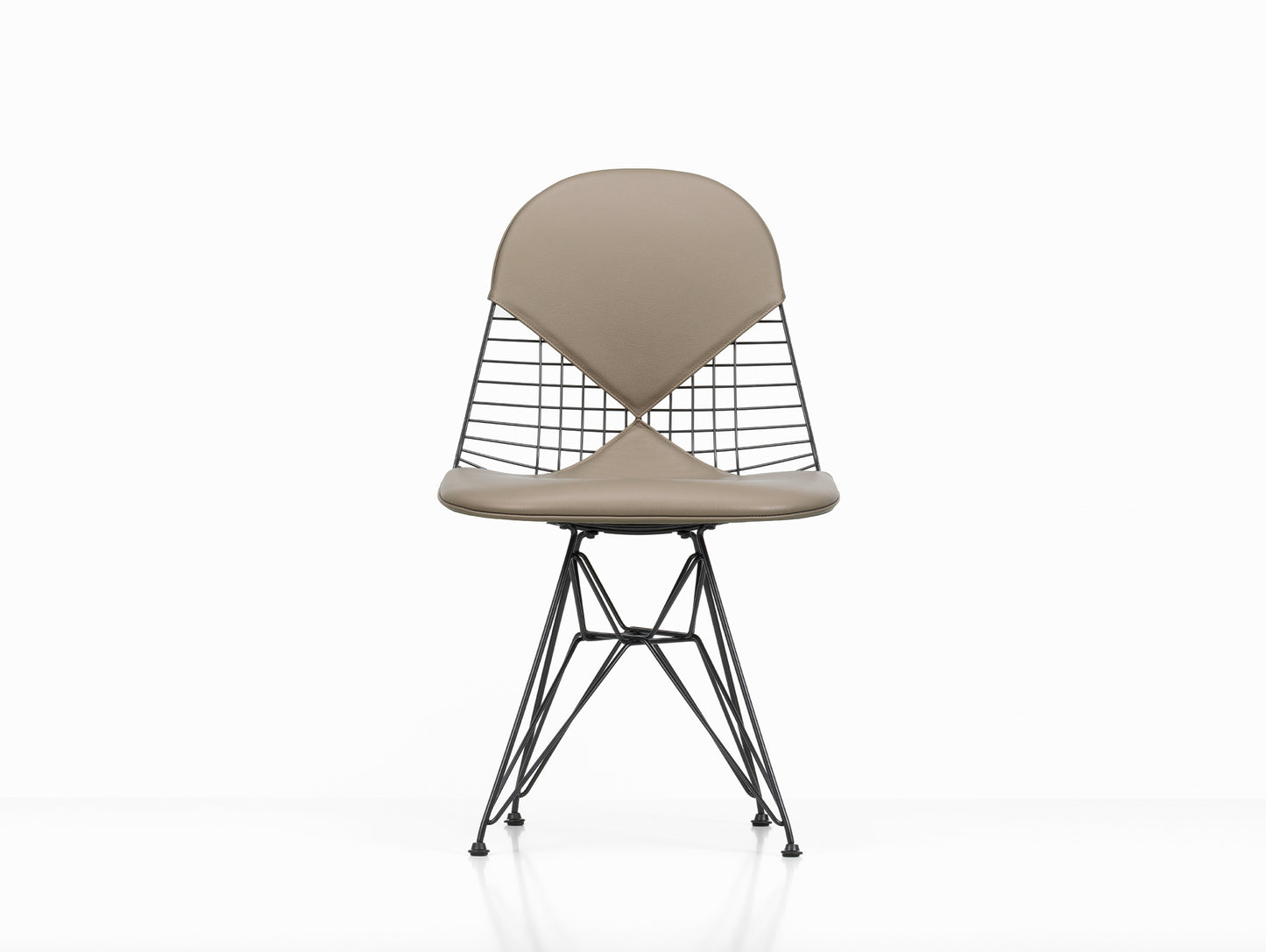
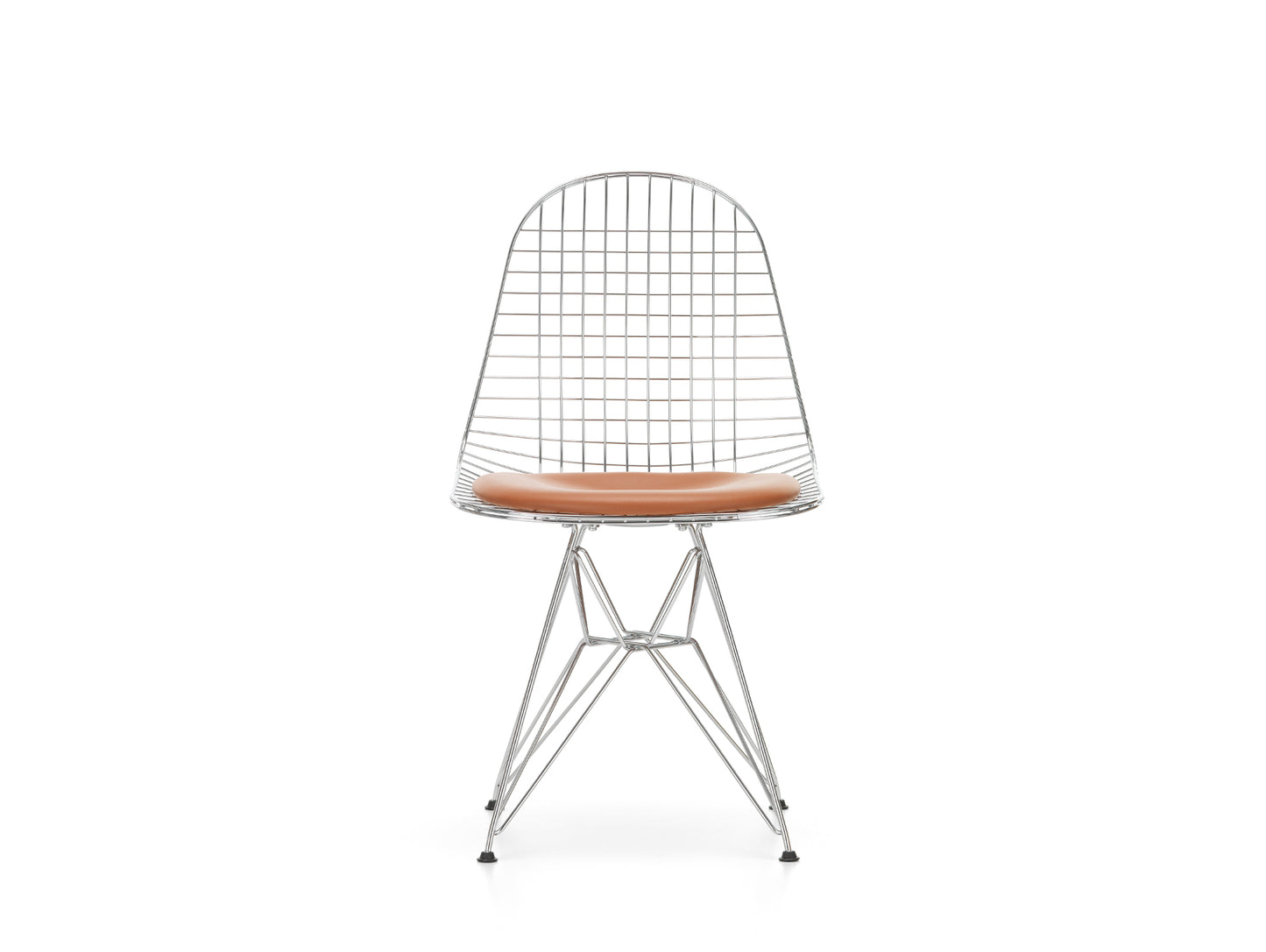
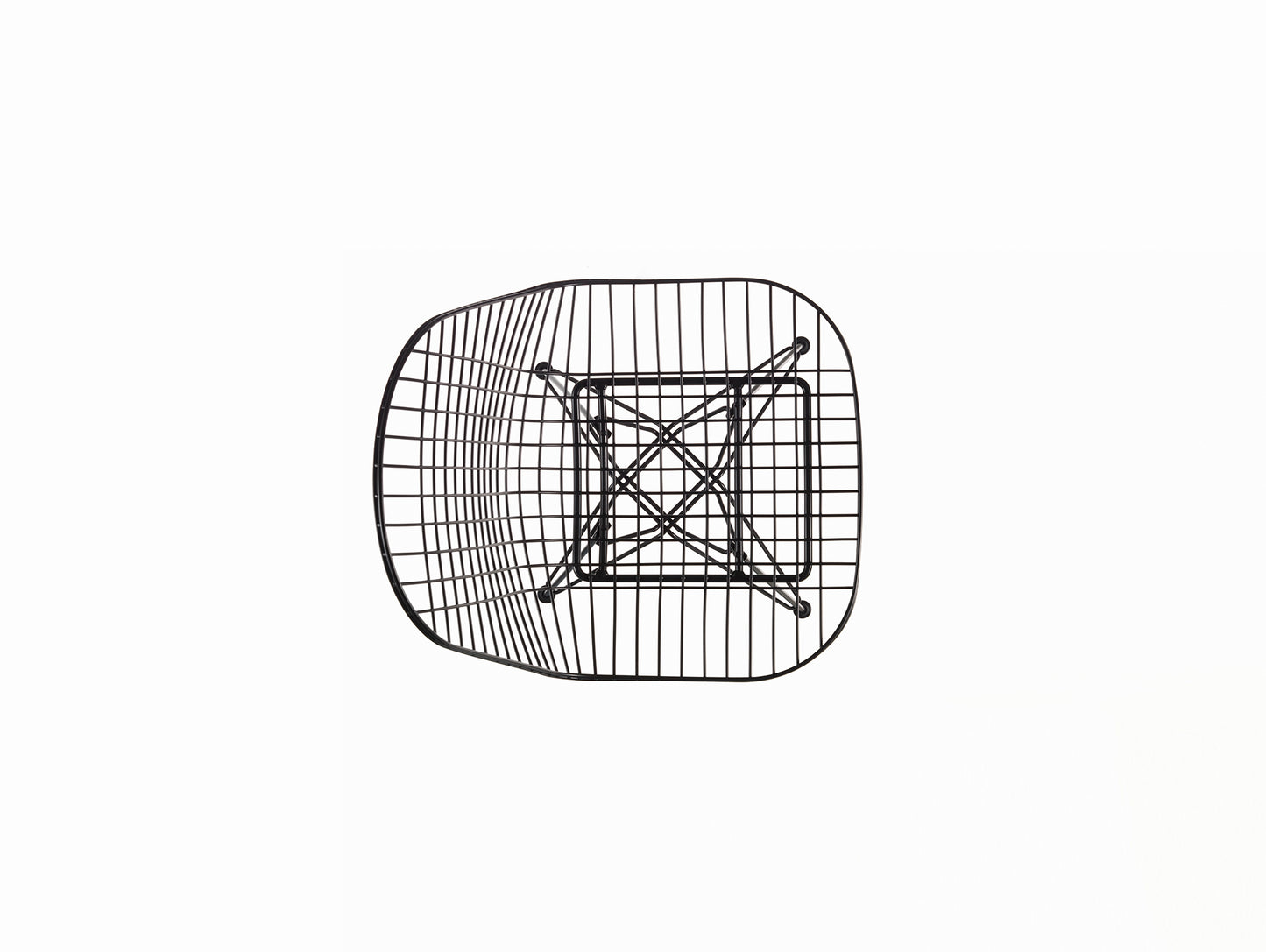

This product is designed by
Charles and Ray Eames
Charles and Ray were a married couple who fundamentally changed the way furniture and buildings are designed and manufactured - playing a large role at the inception of the Modernist movement. They worked with Herman Miller and then later Vitra in the 1950’s to pioneer new technologies in moulded plywood, plastic resin and wire mesh products.
Charles was by highly influenced by the Finnish Architect Eliel Saarinen who encouraged Eames to move to Michigan to further study Architecture at the Cranbrook Academy of Art. He became friends with Eliel’s son Eero and together they created a prize-winning furniture entry for New York’s MOMA museum ‘Organic Design in Home Furnishings’ competition. Ray Eames was born as...

